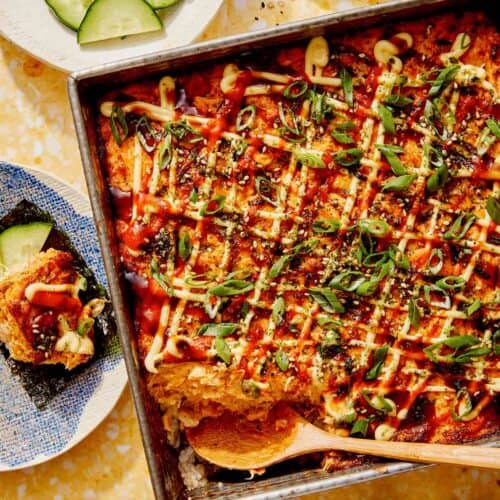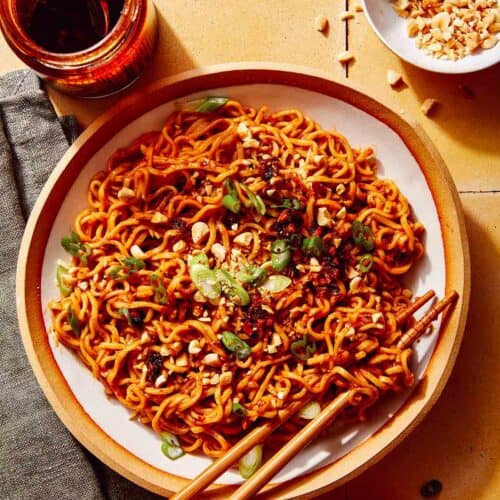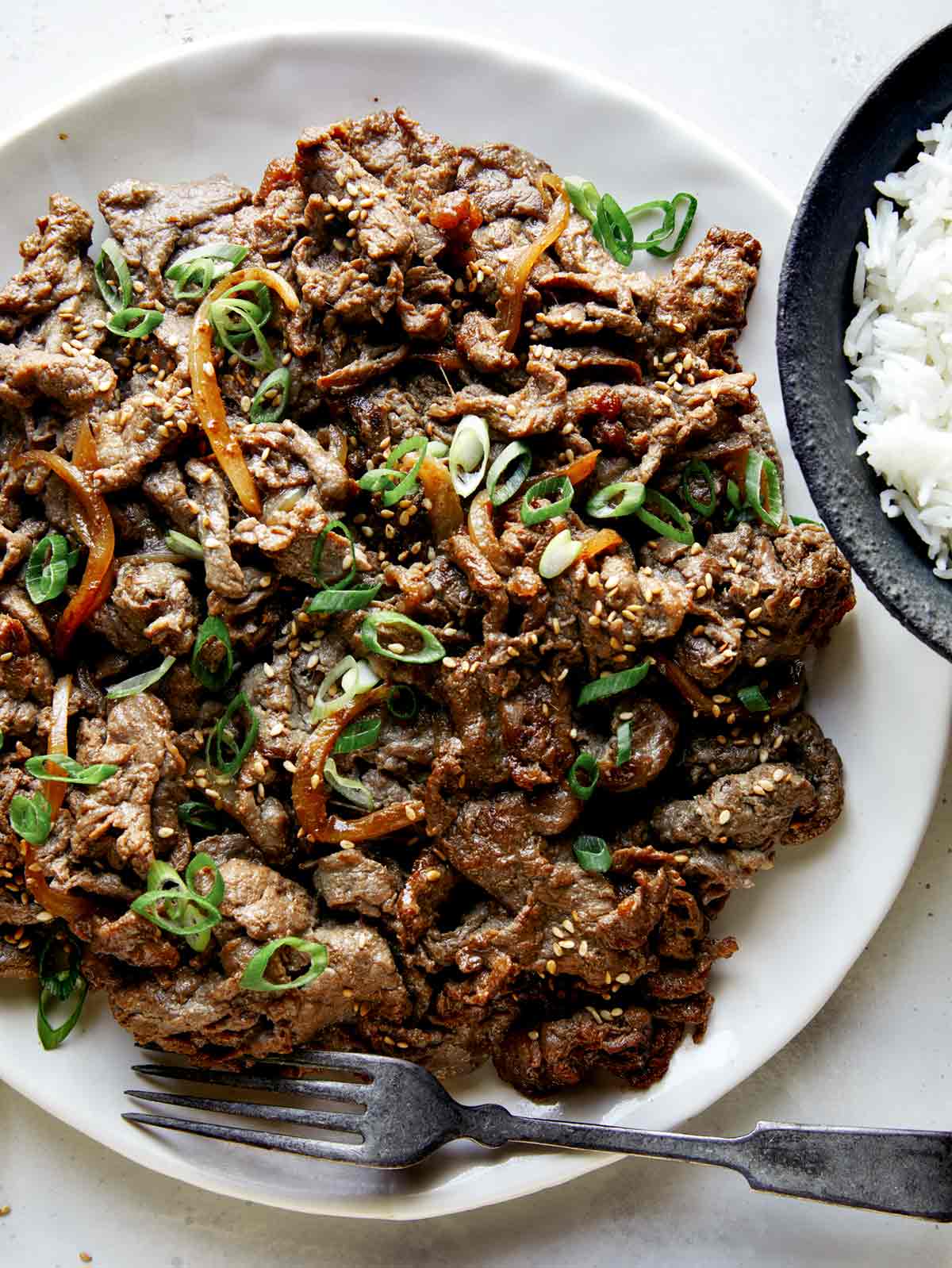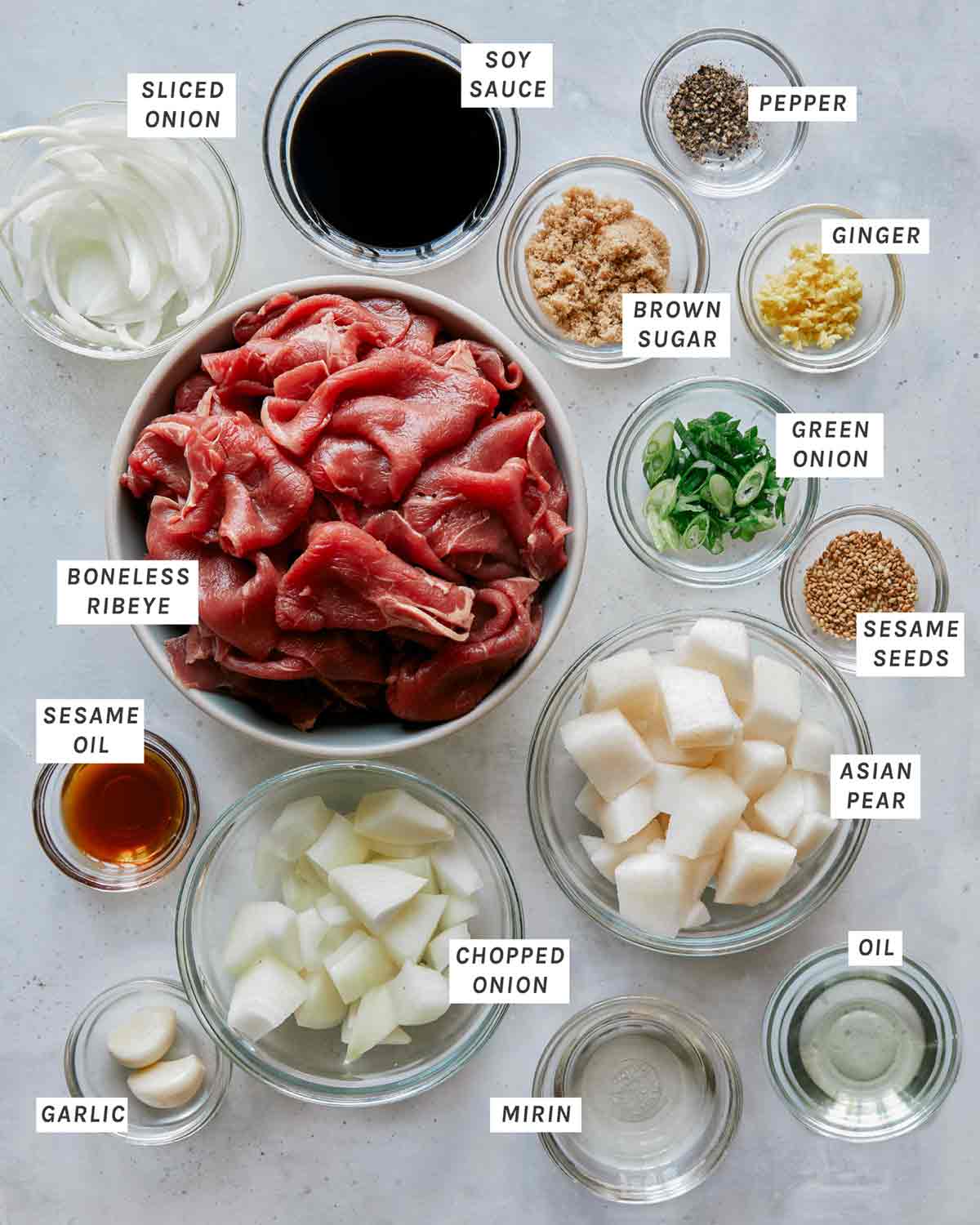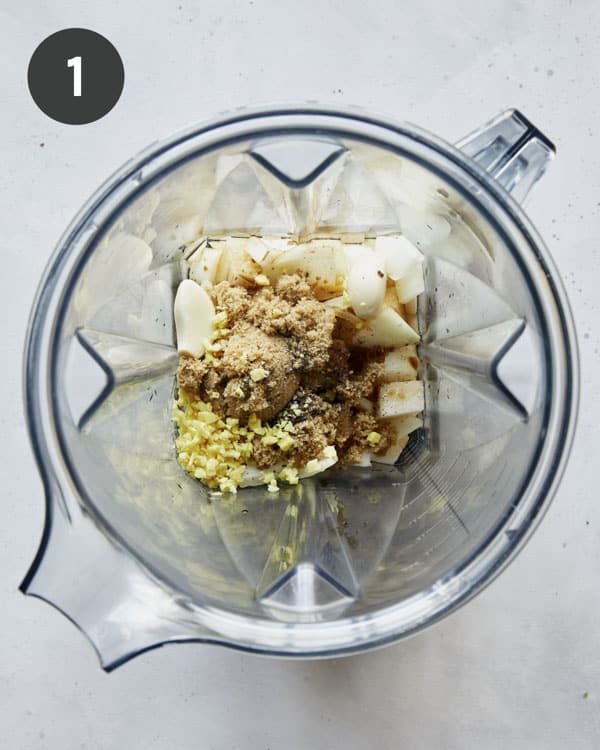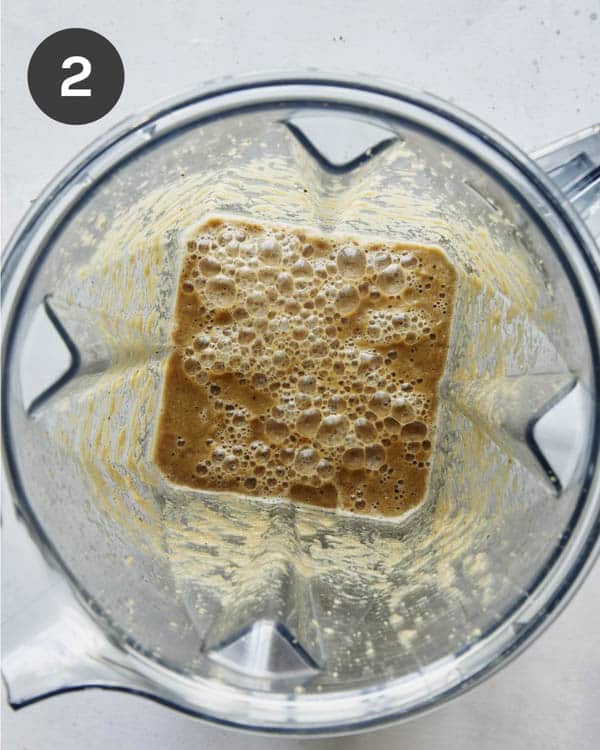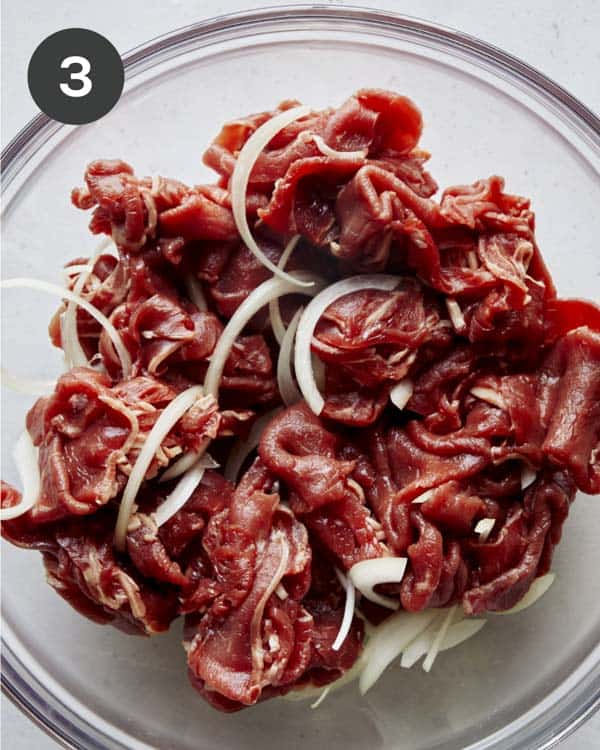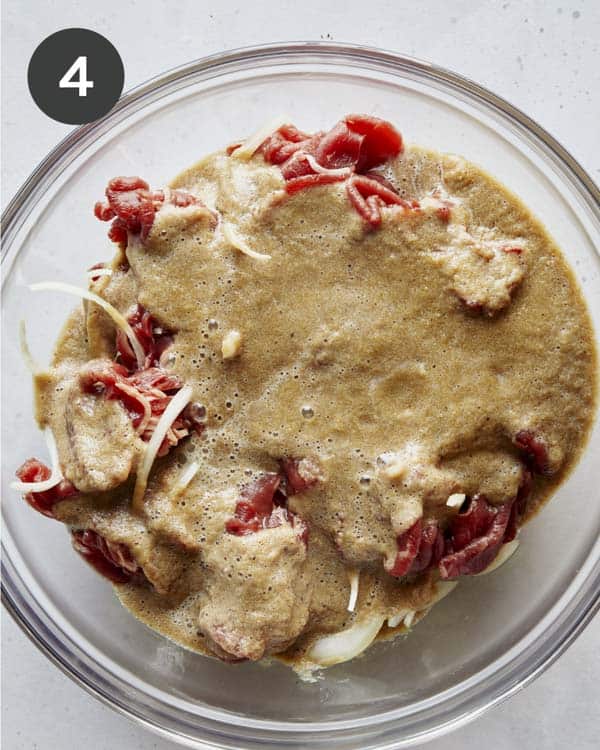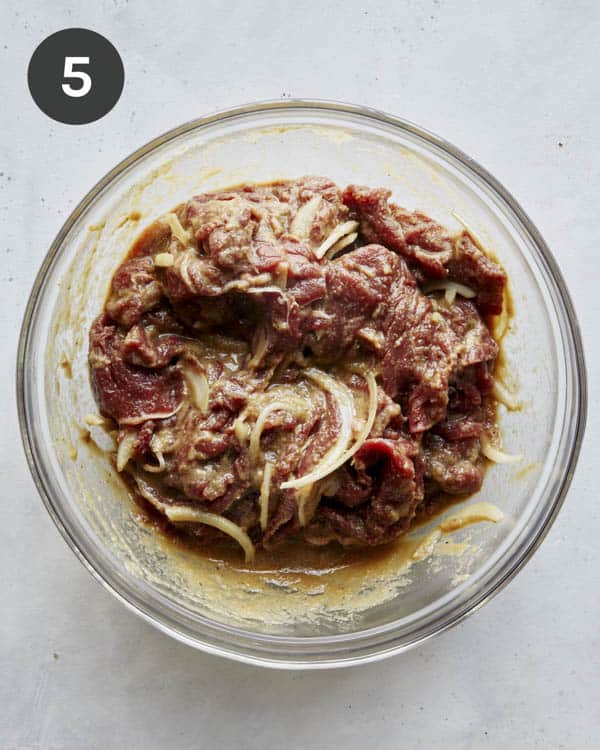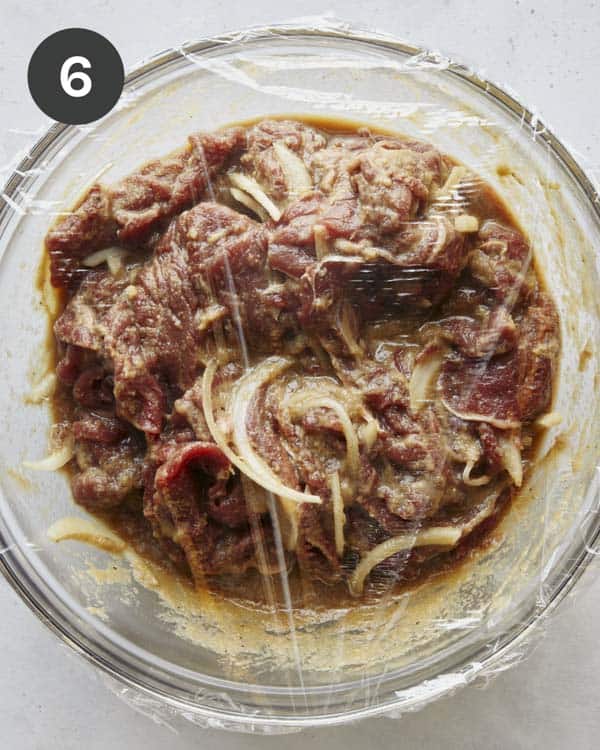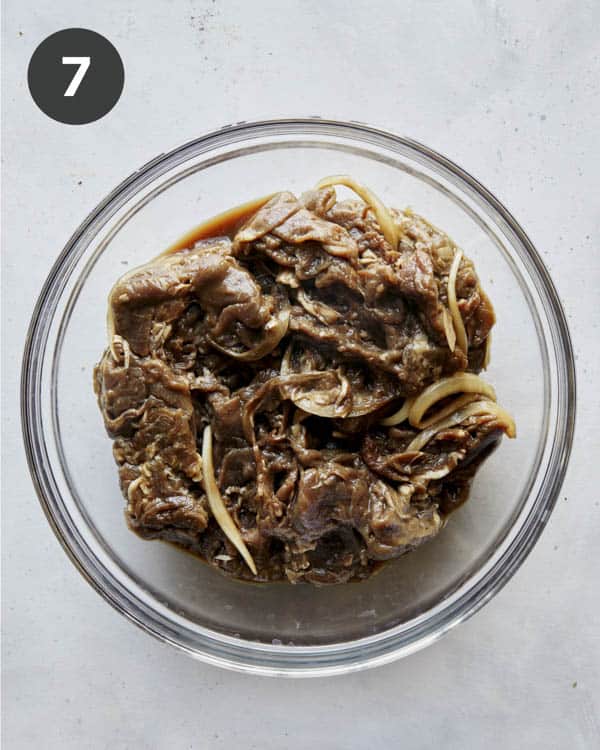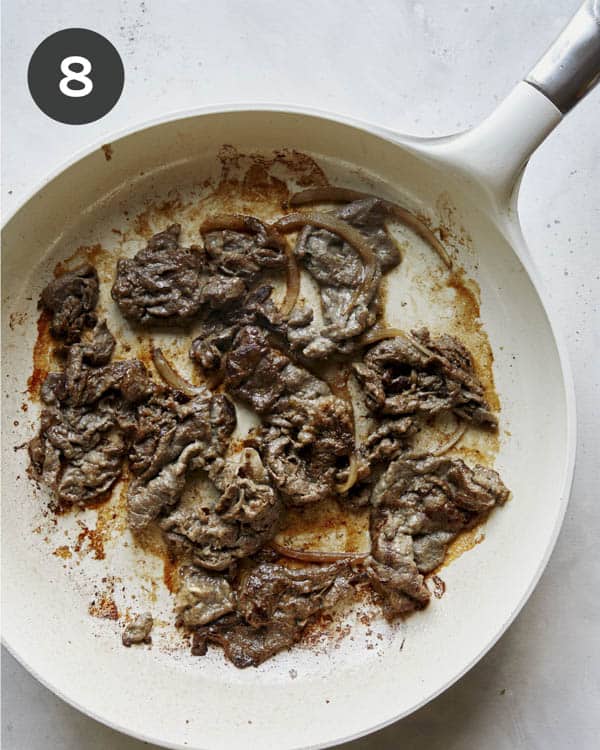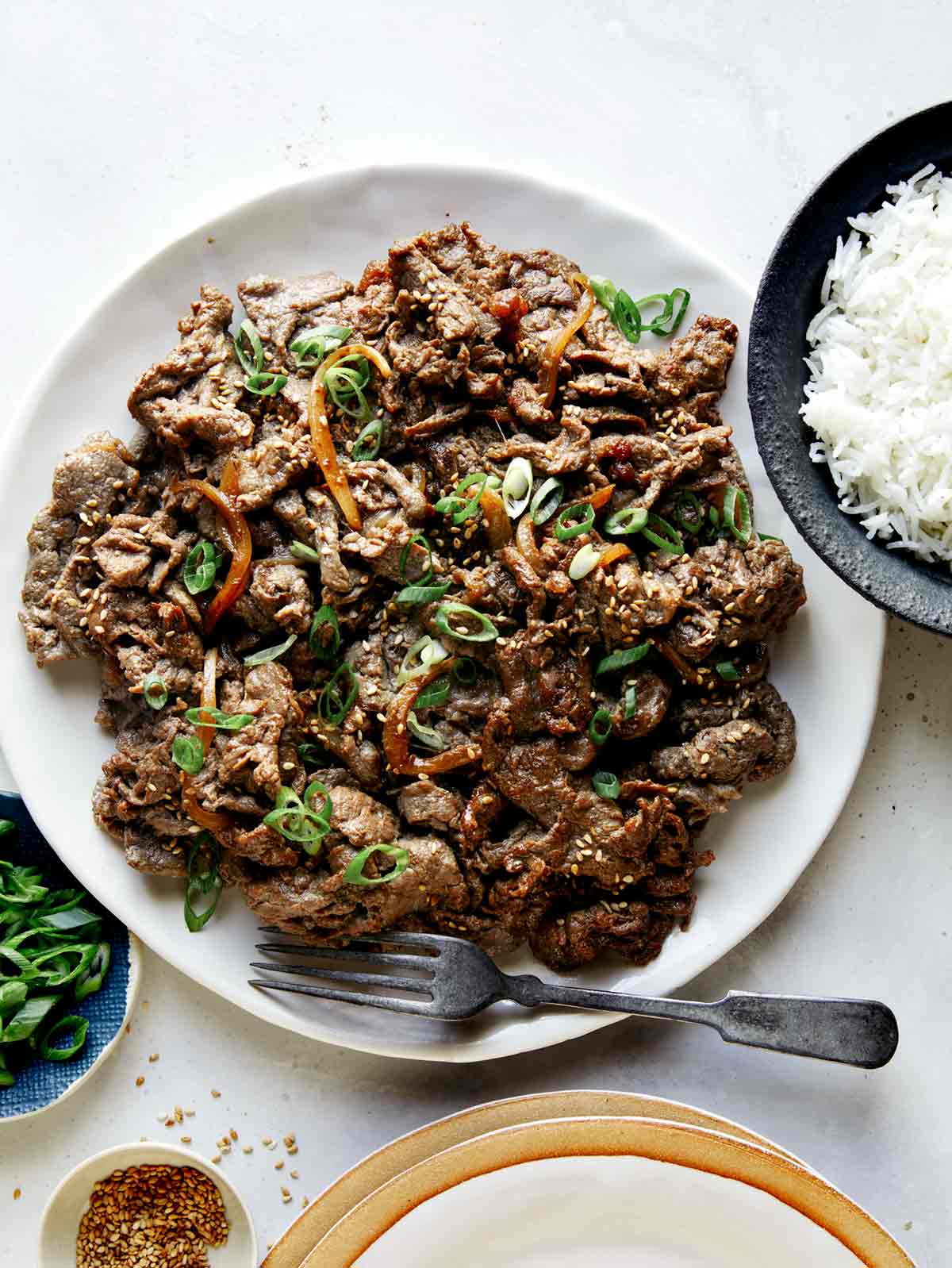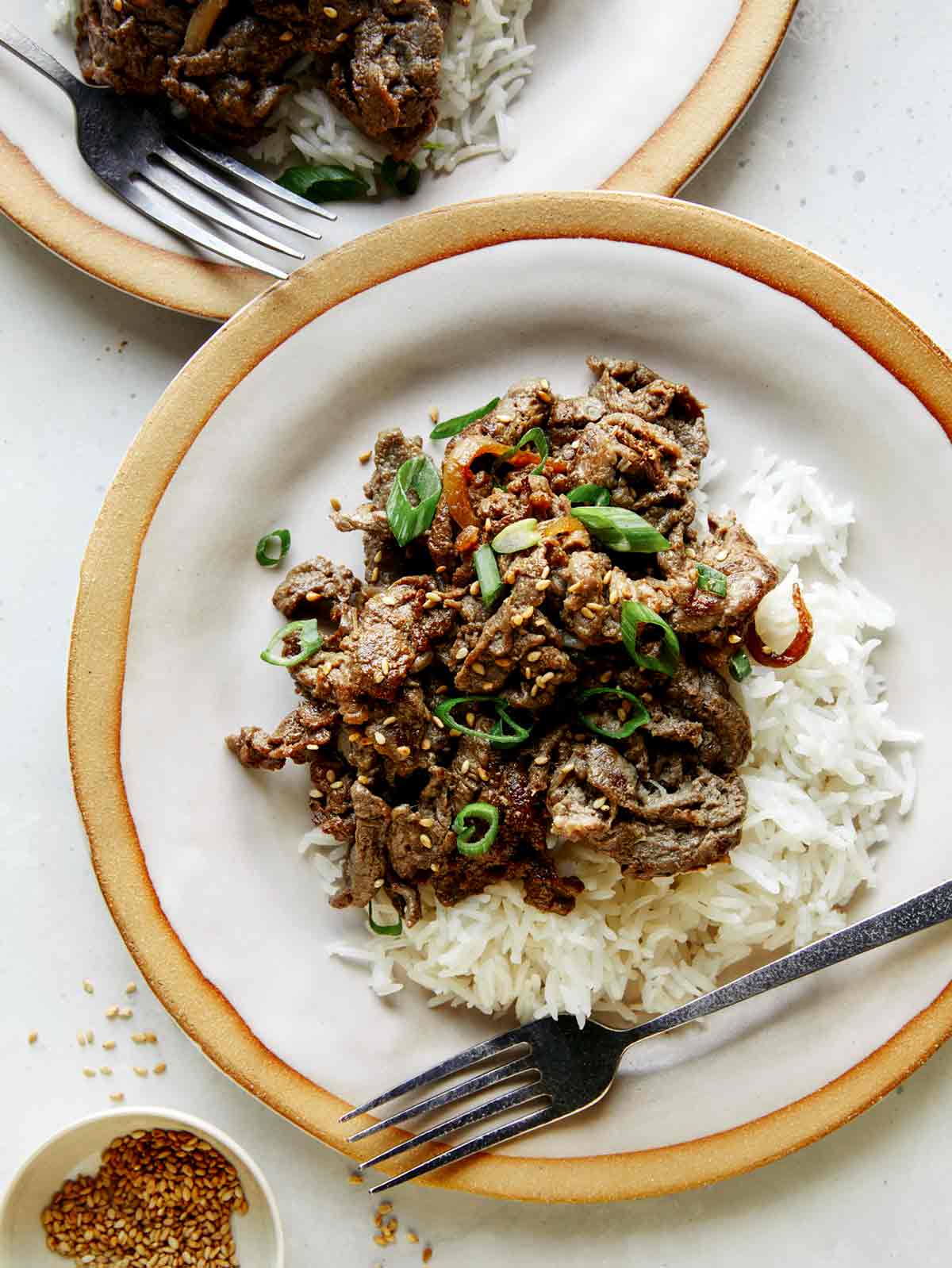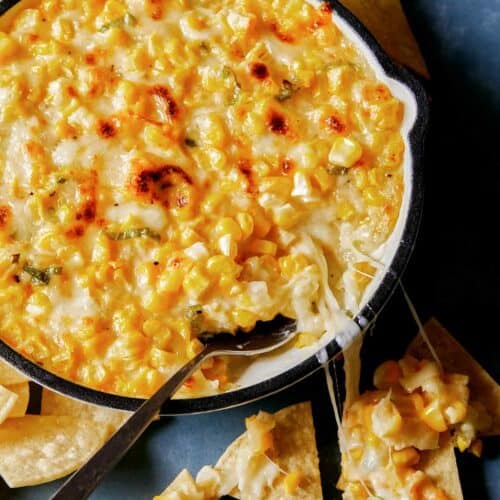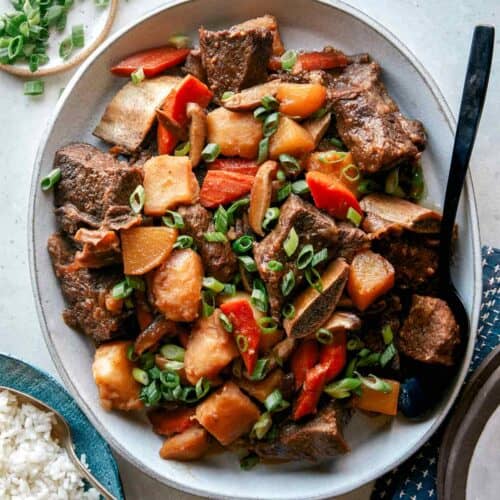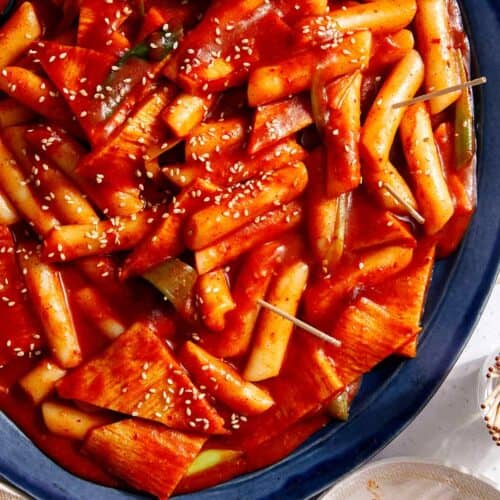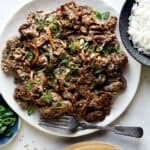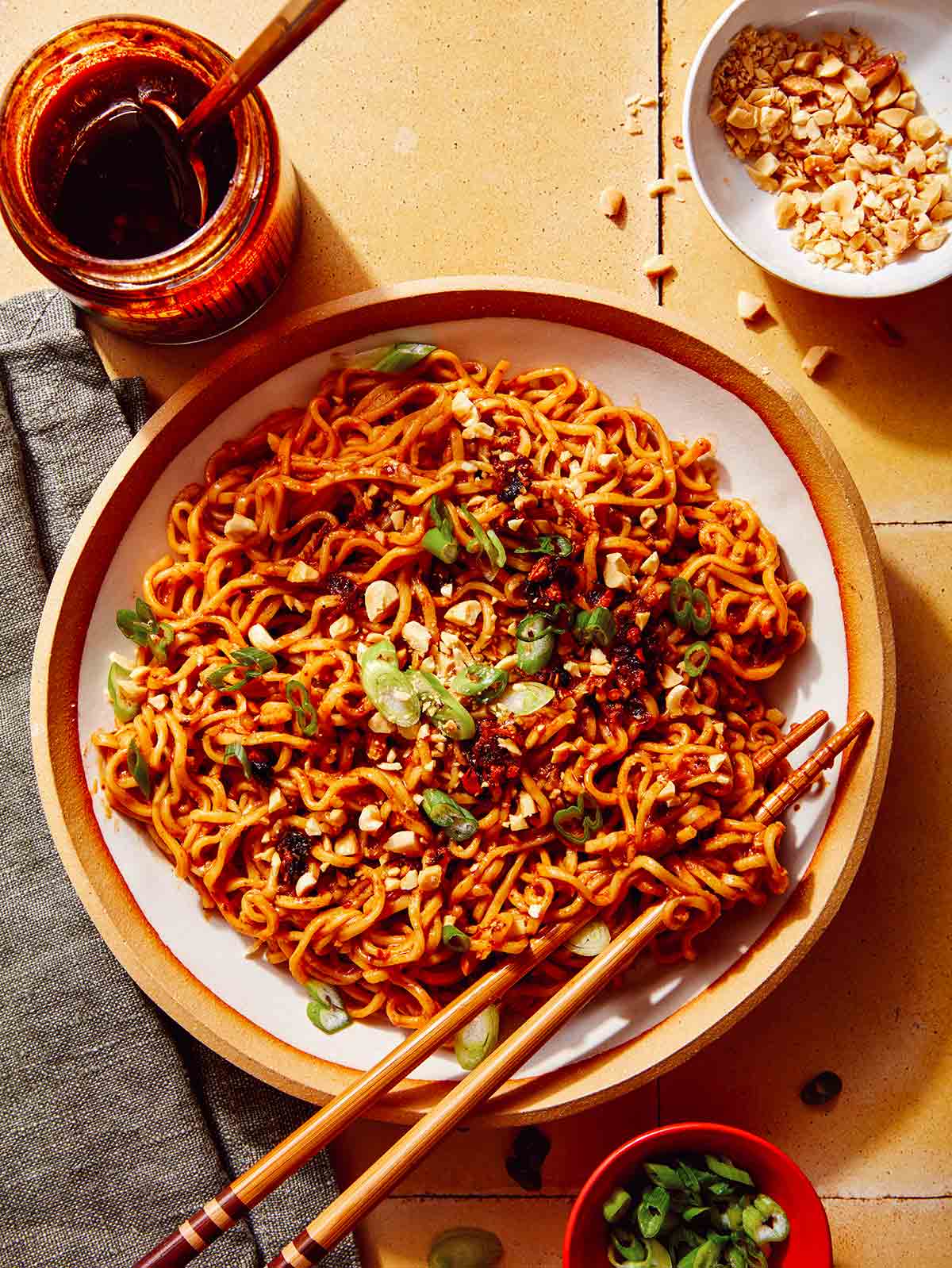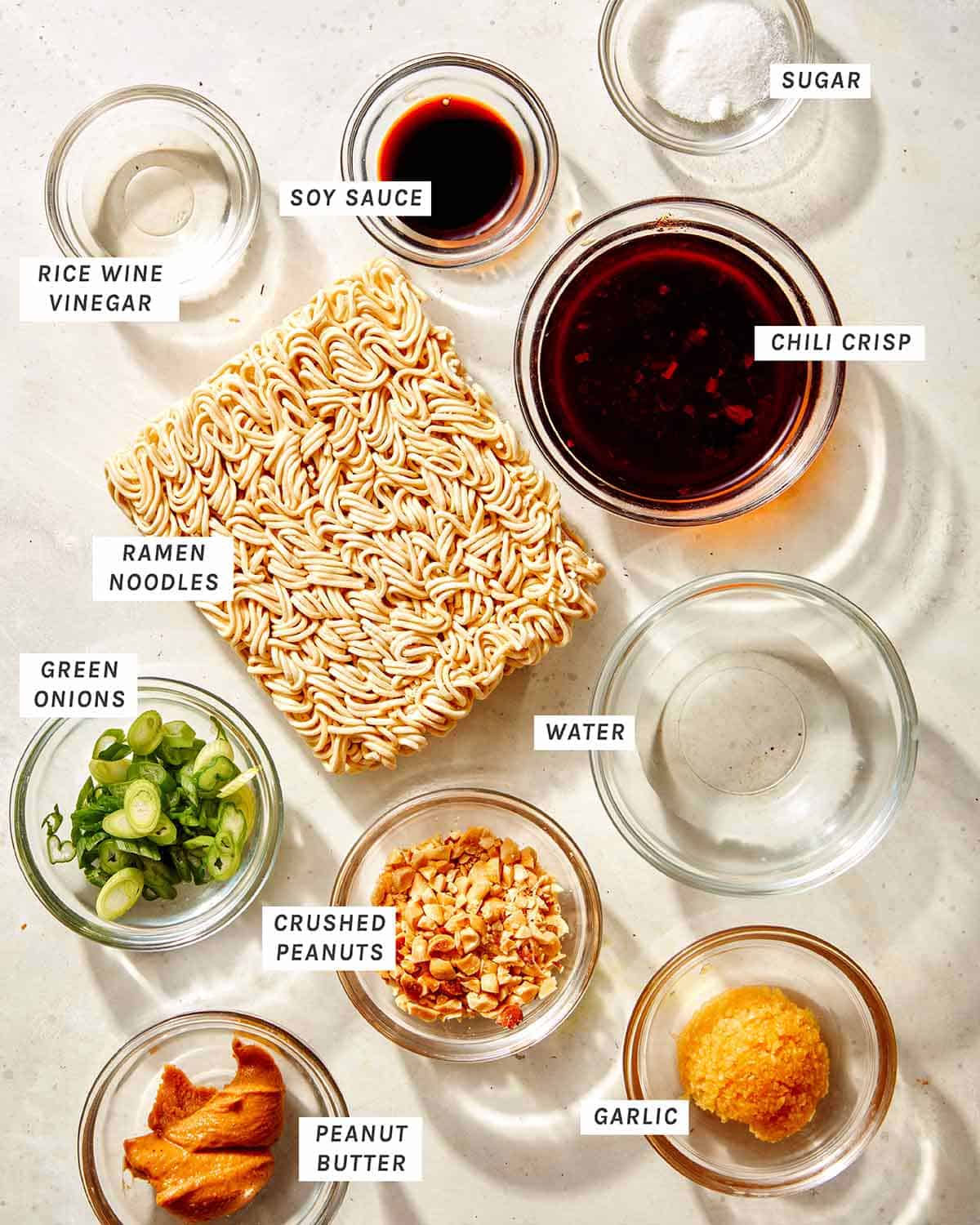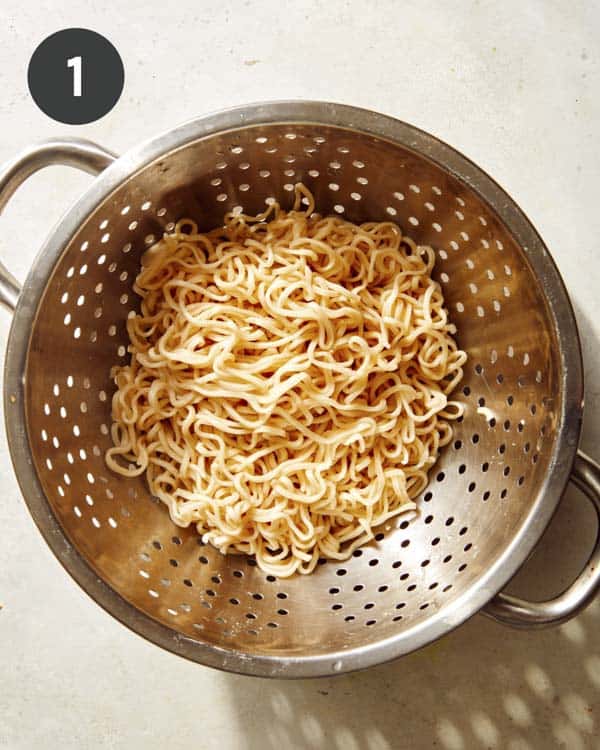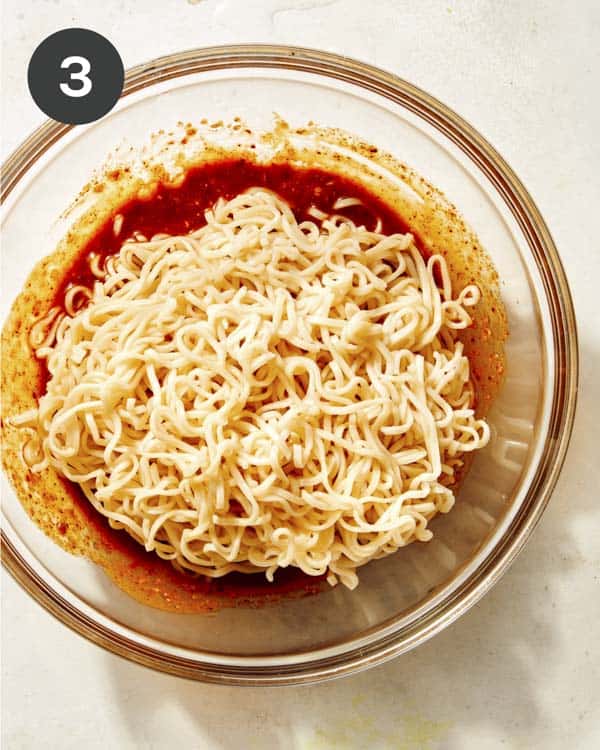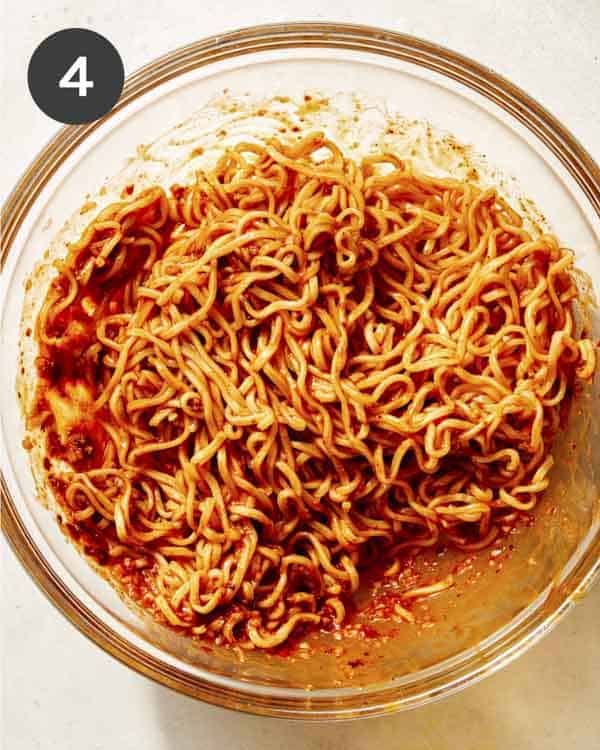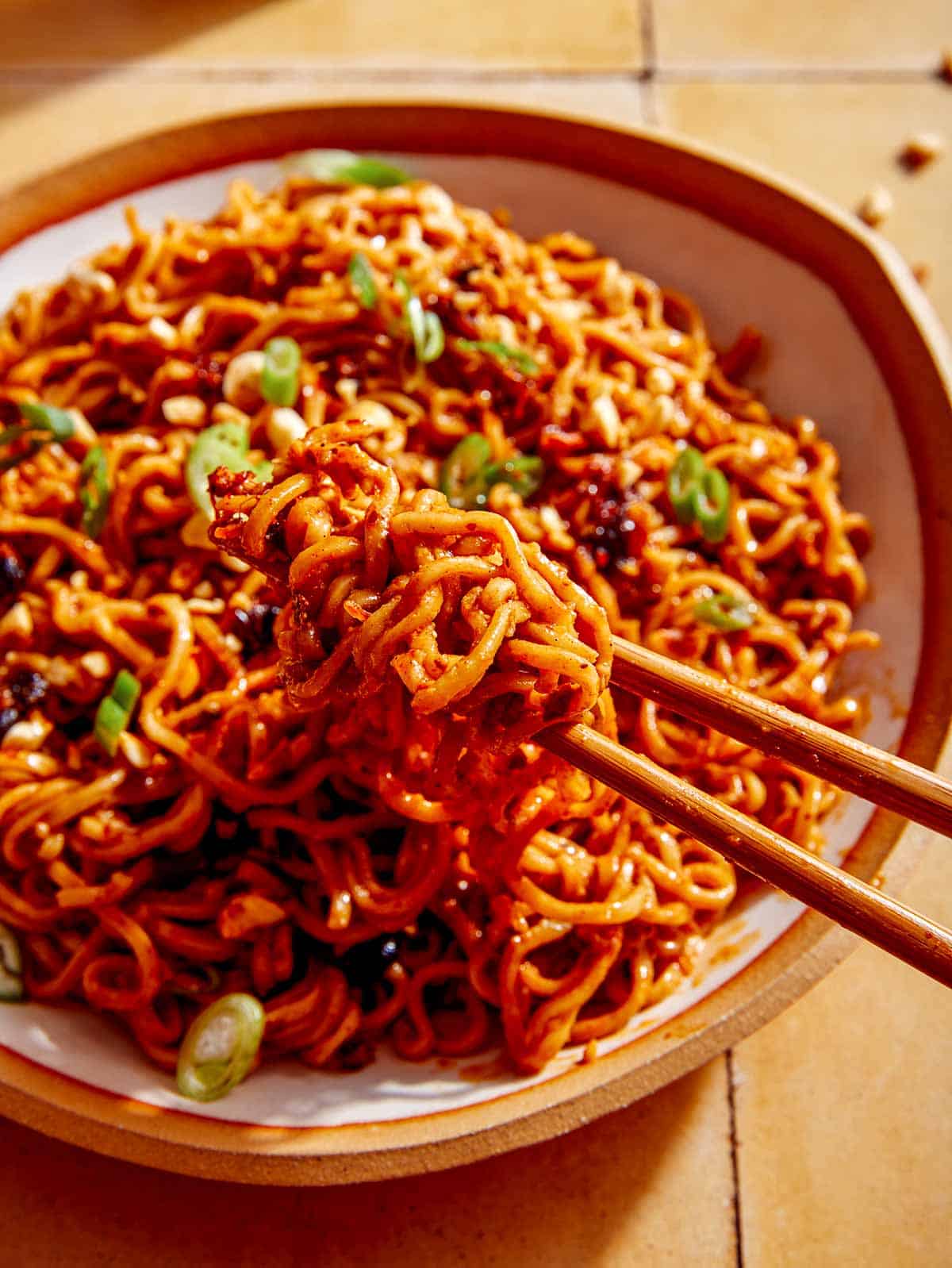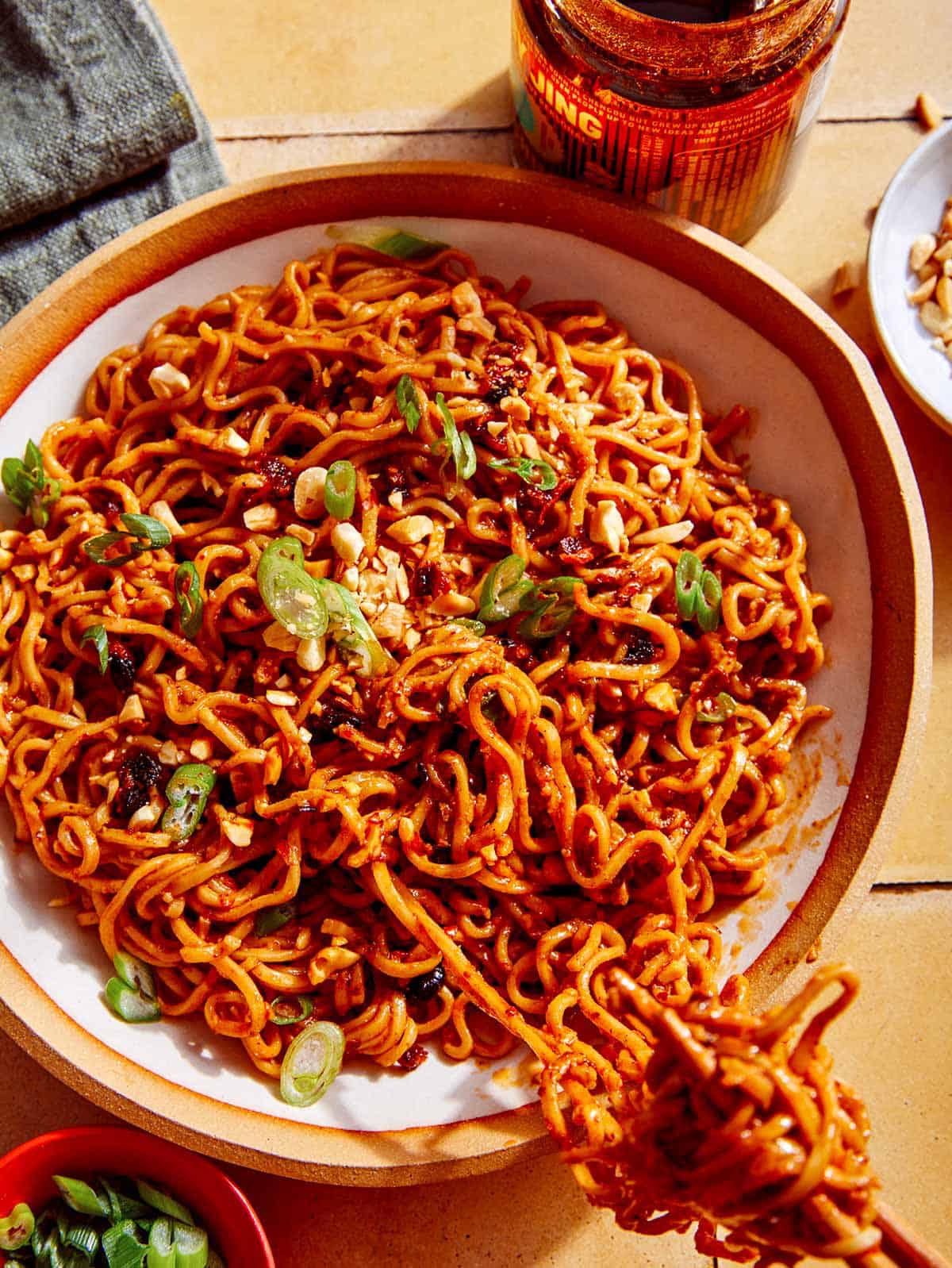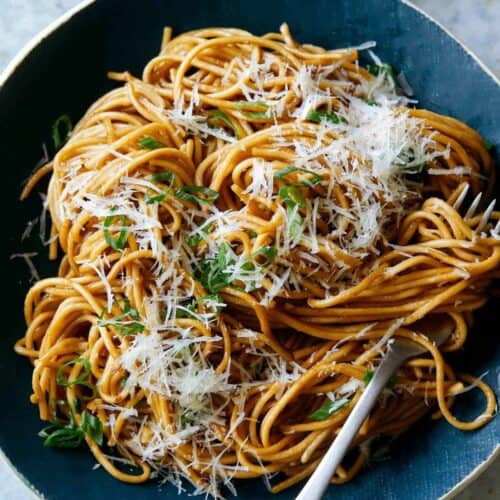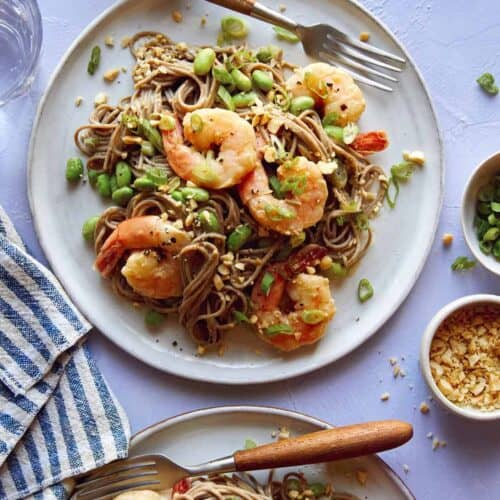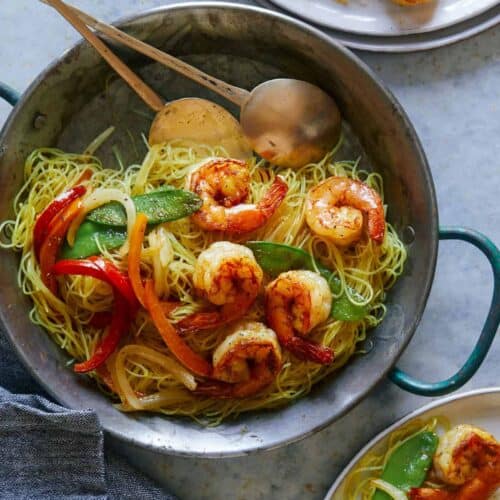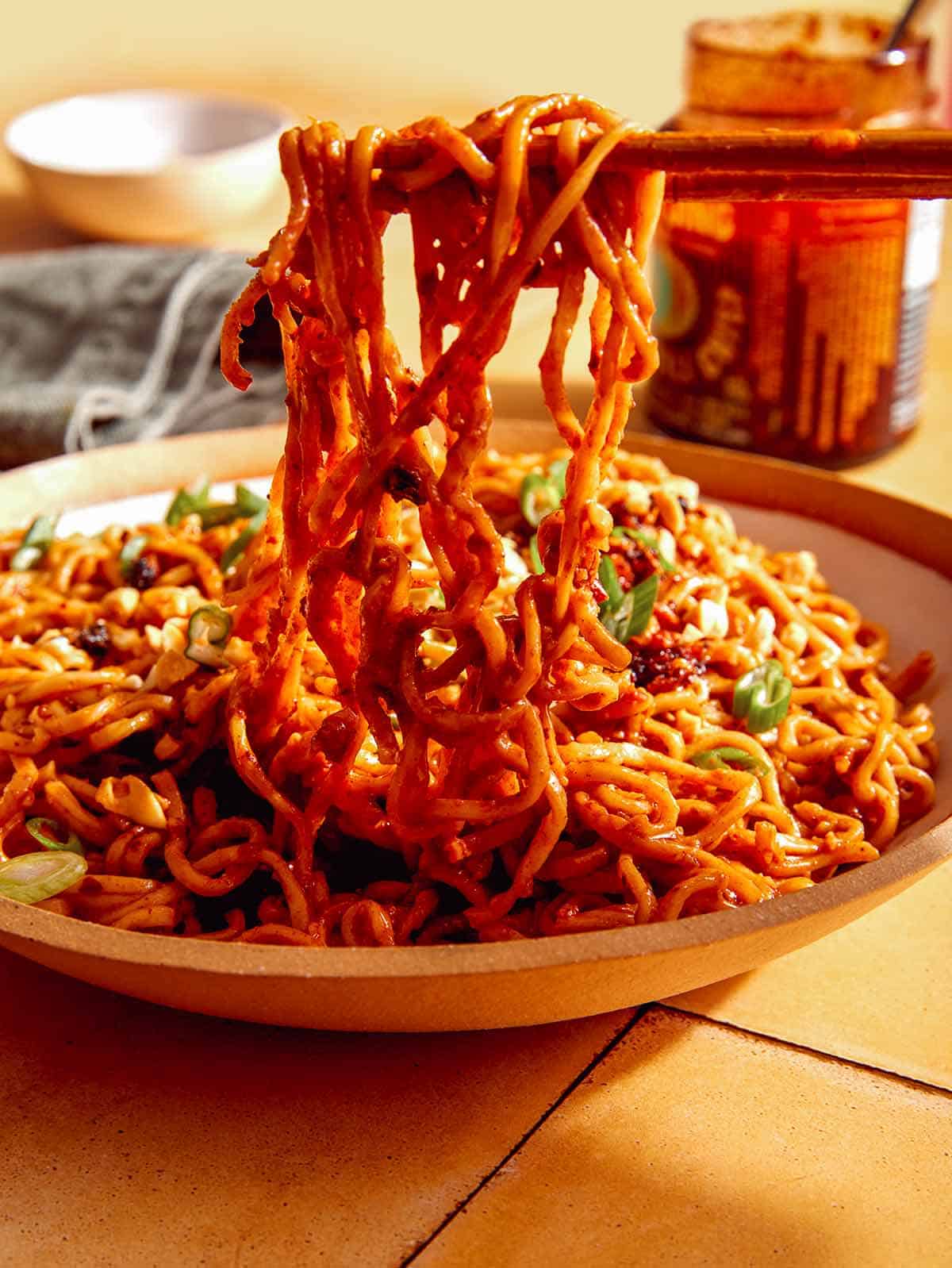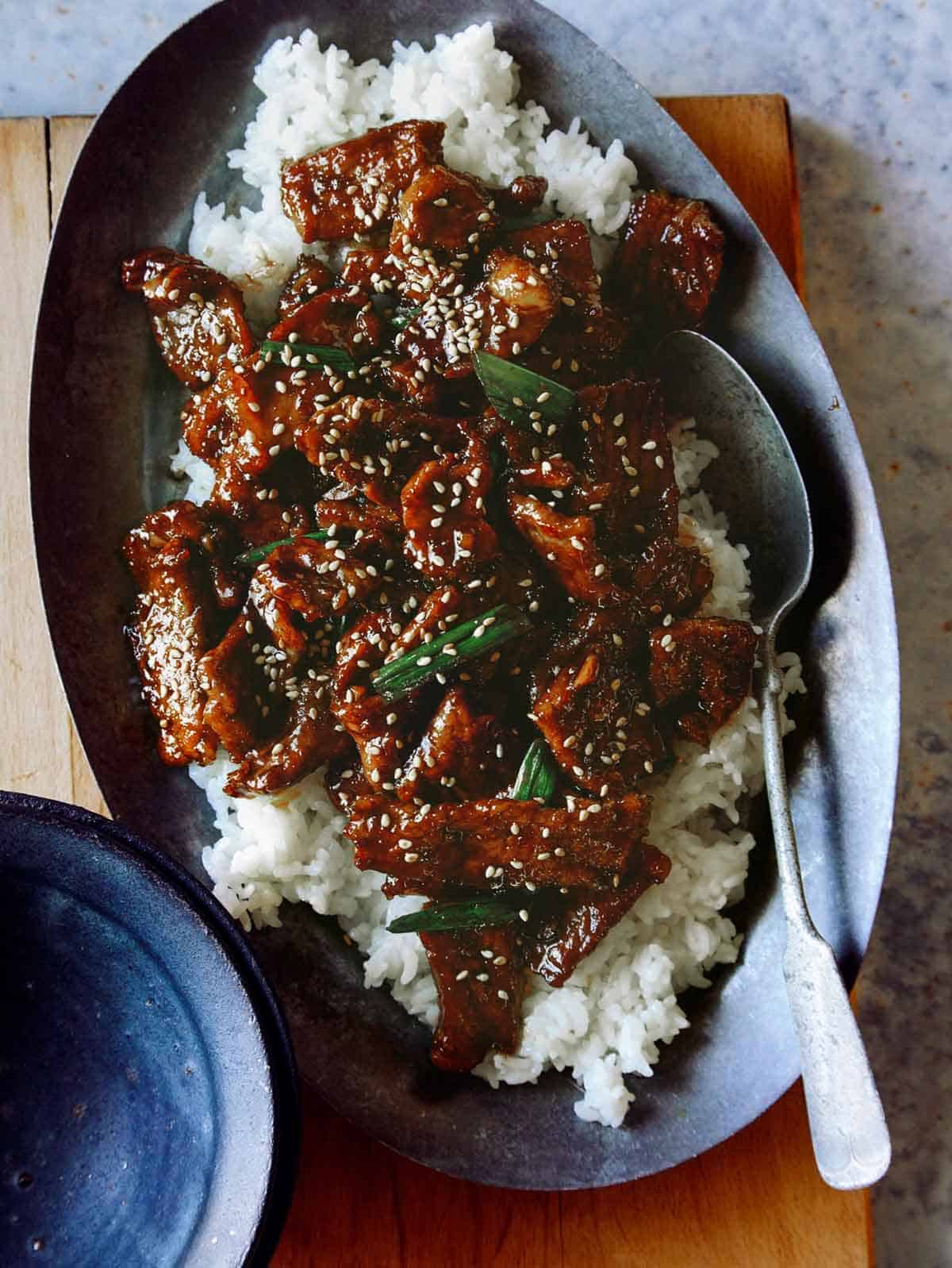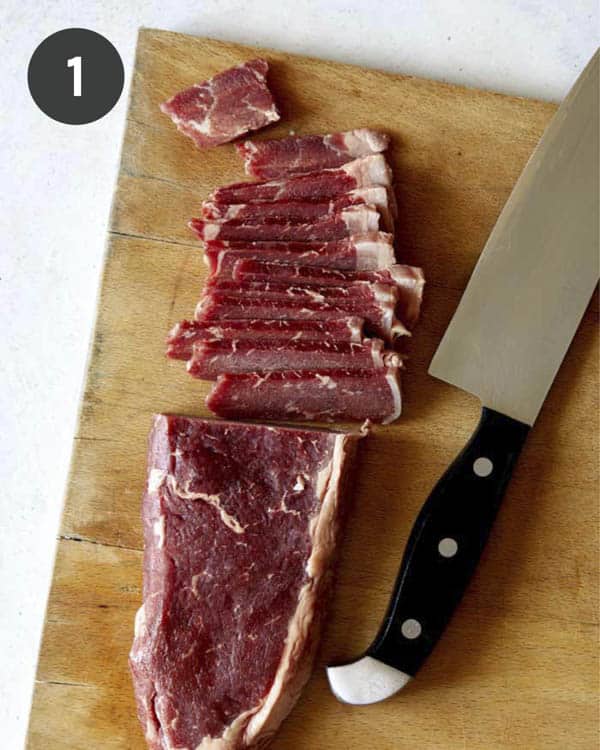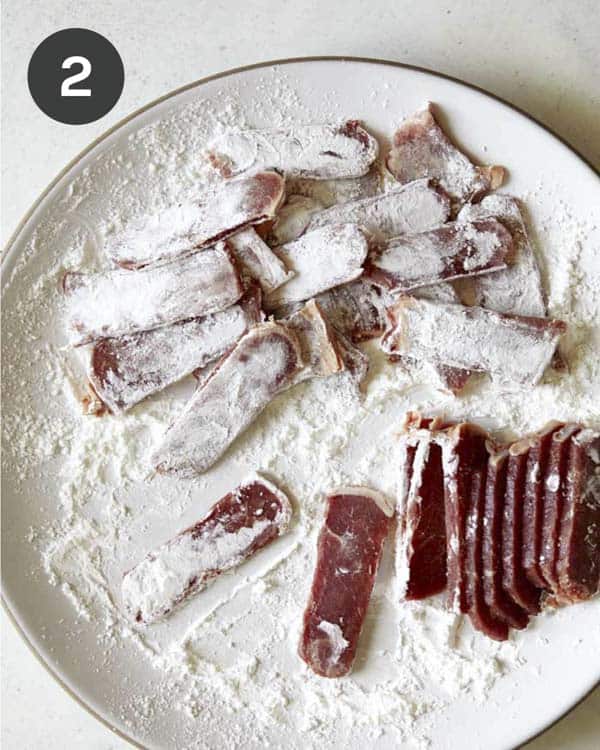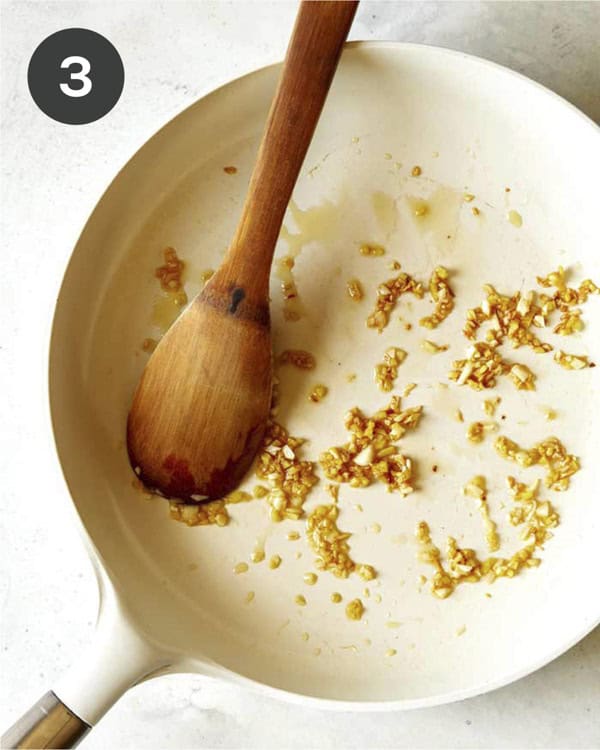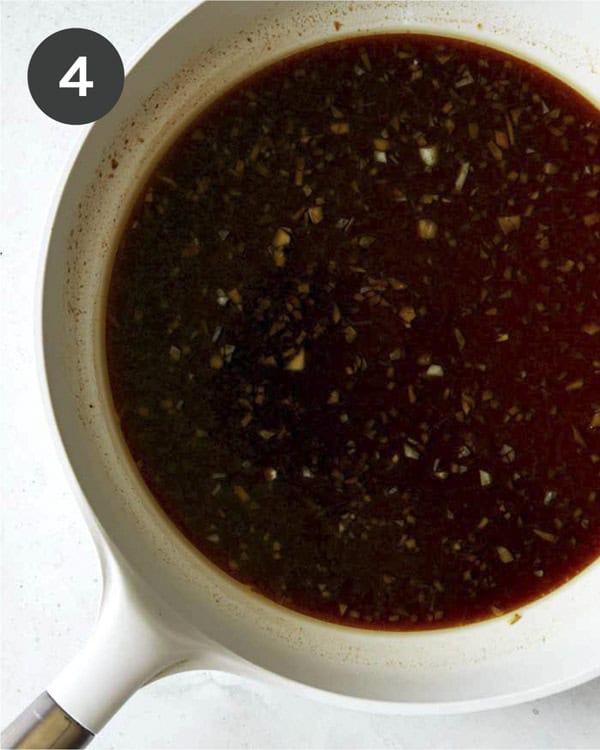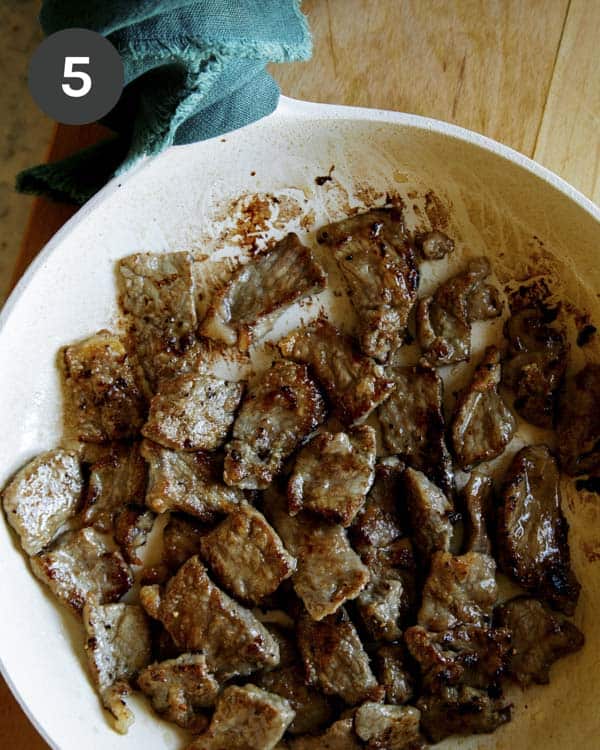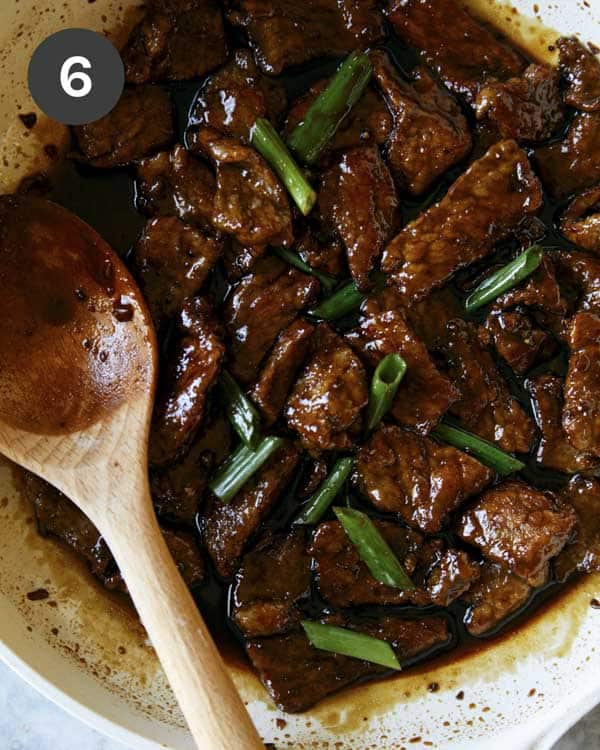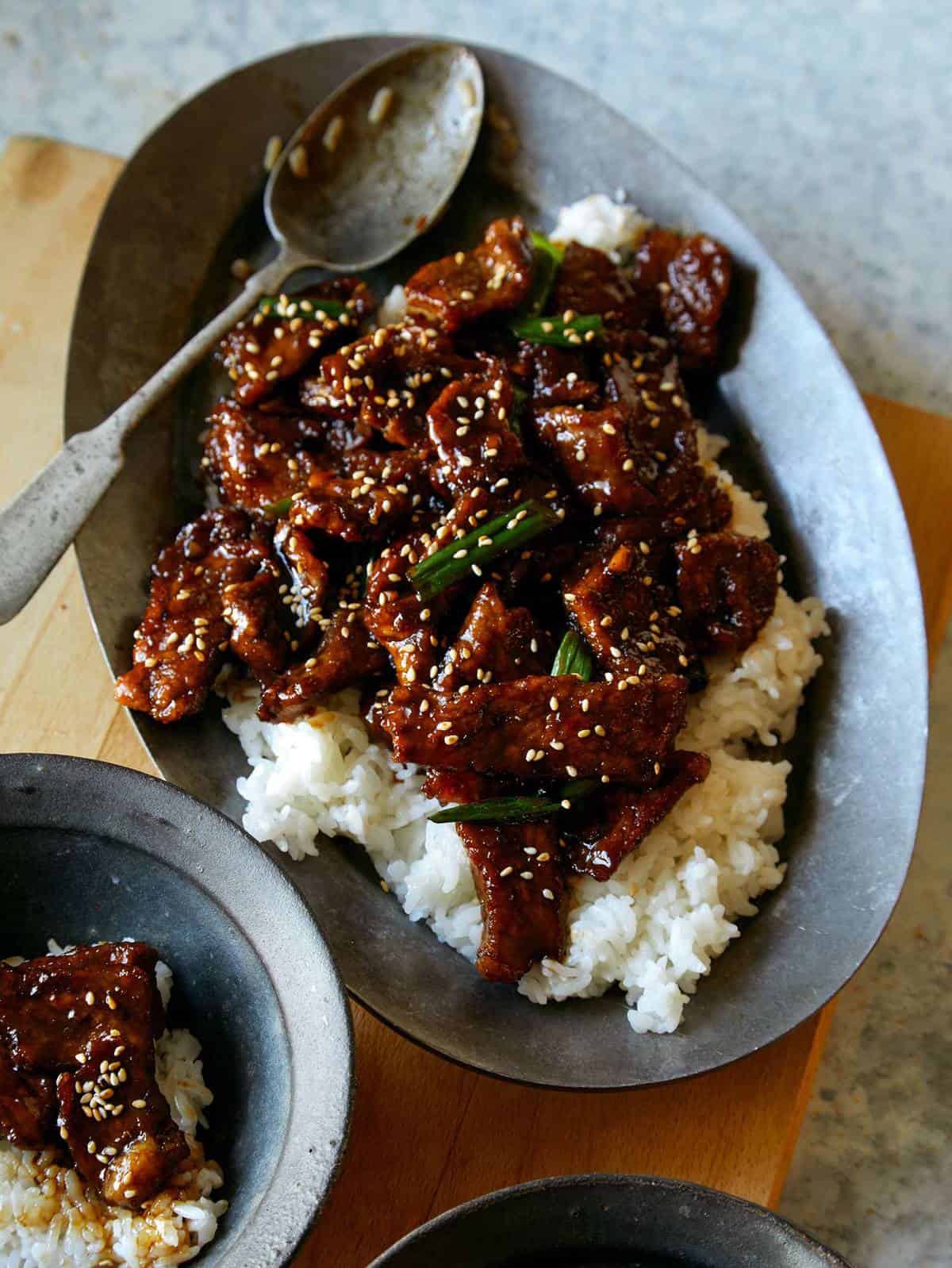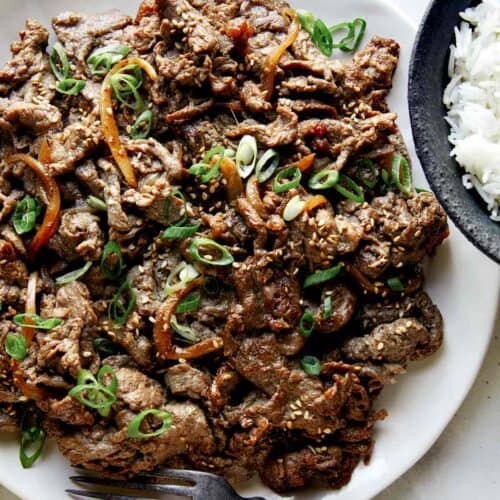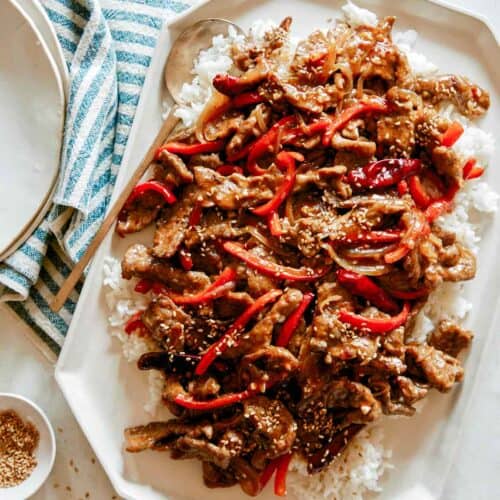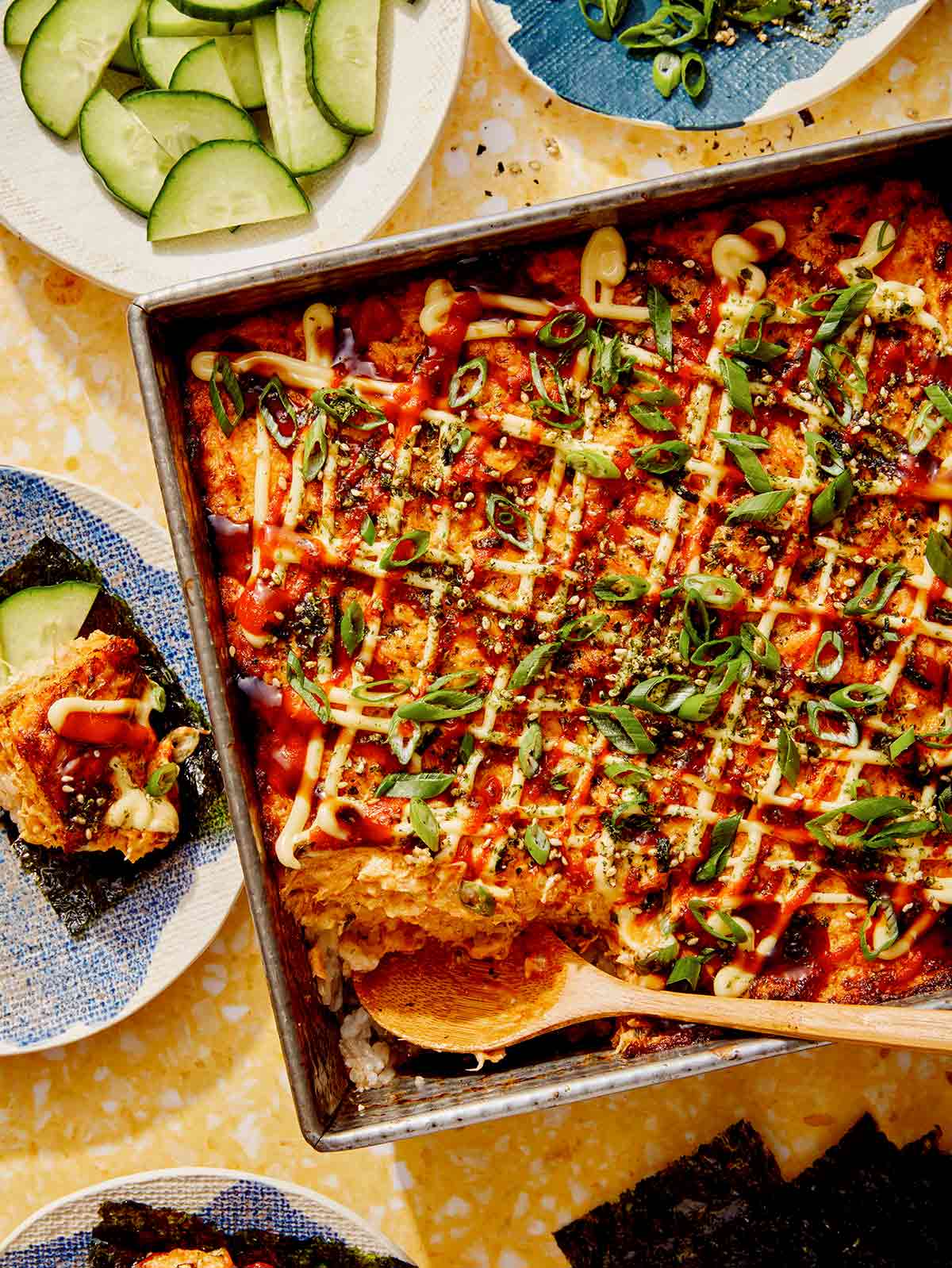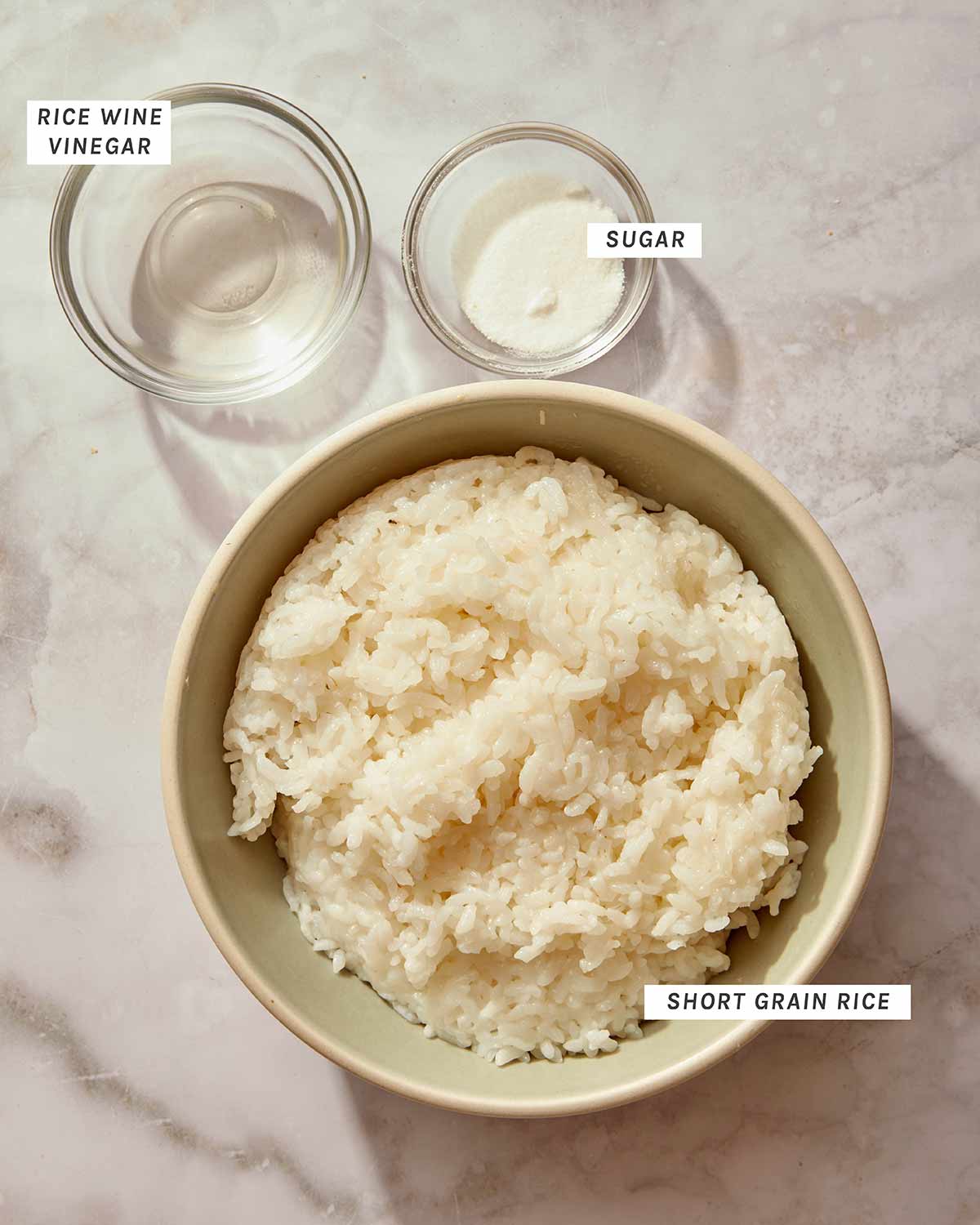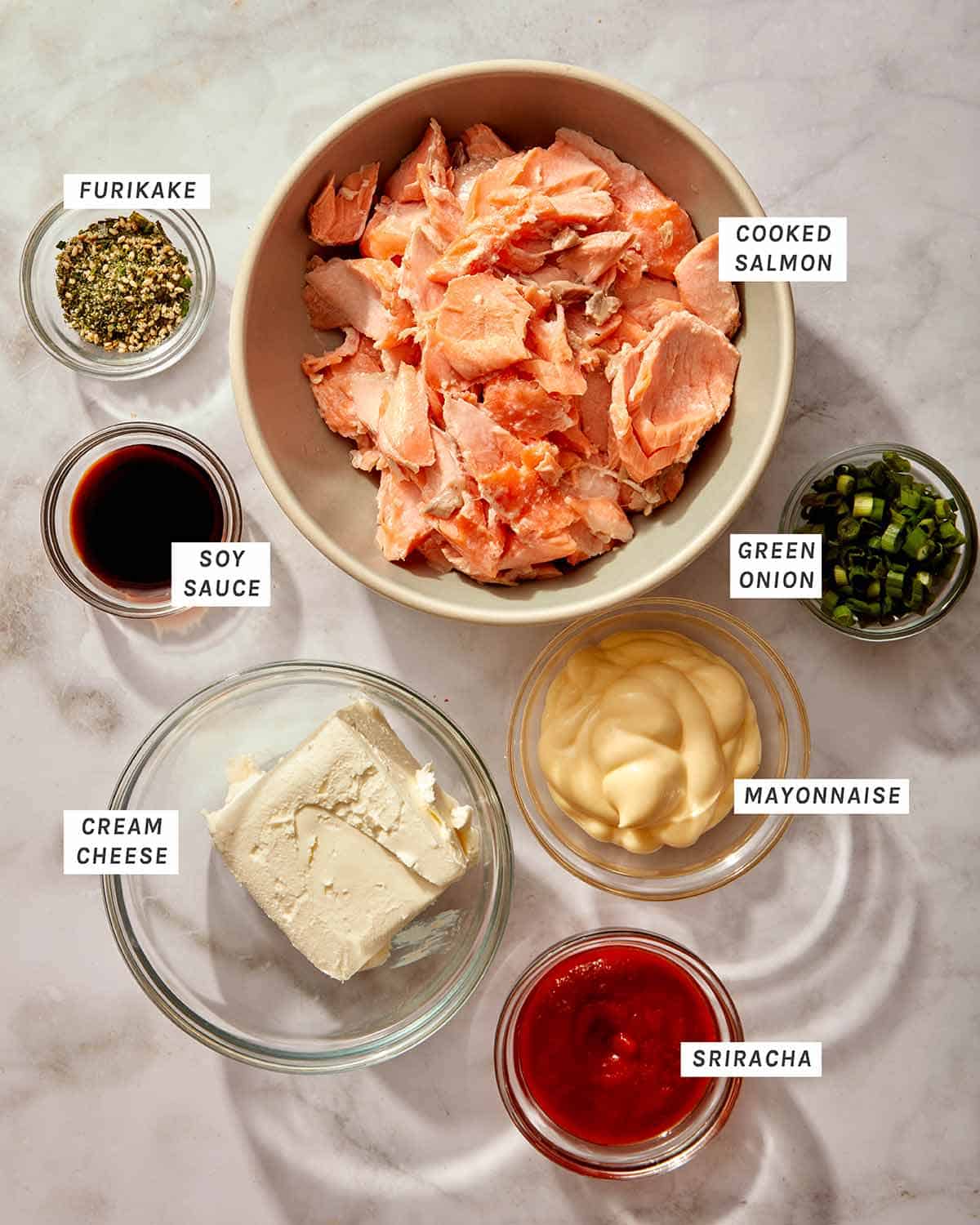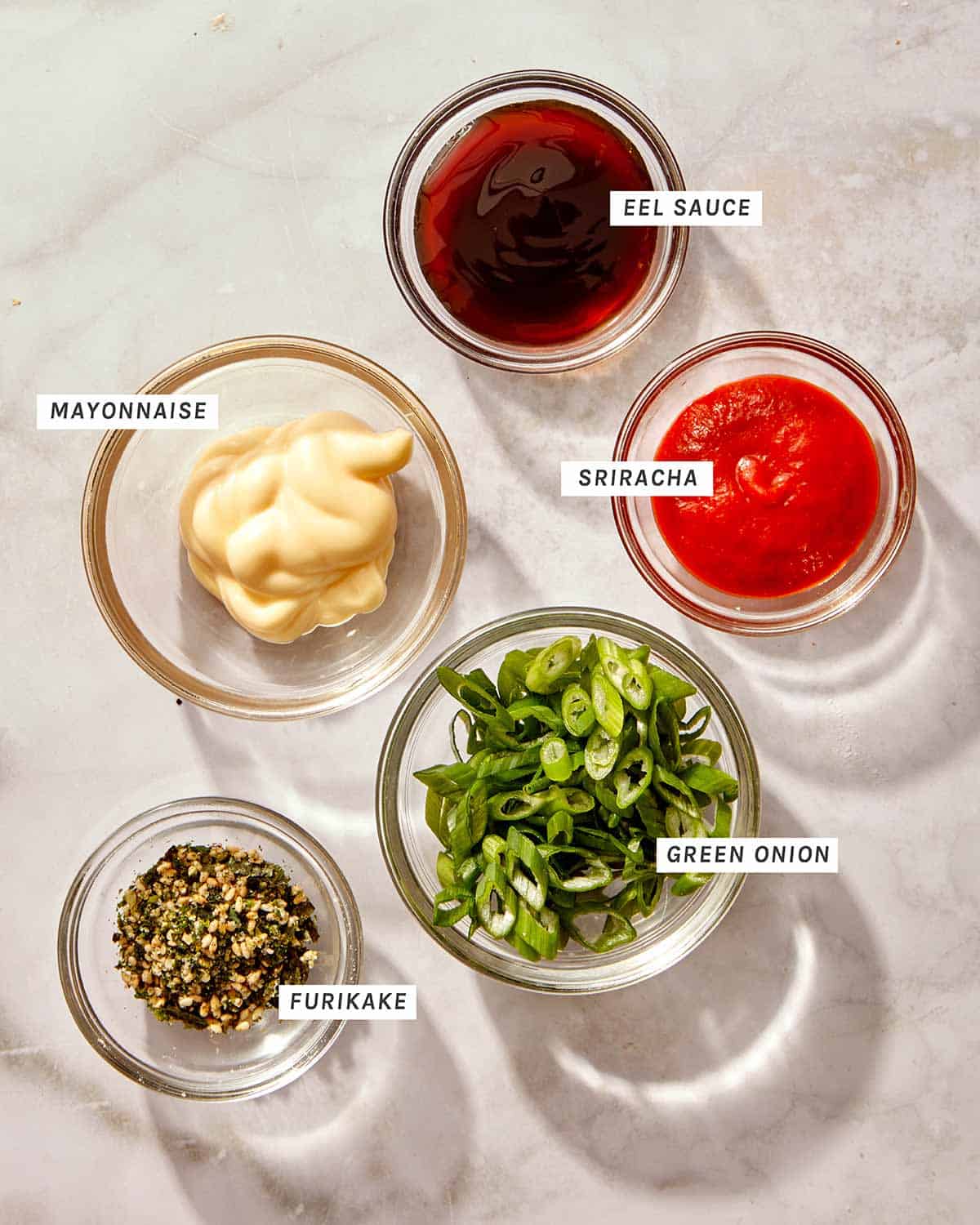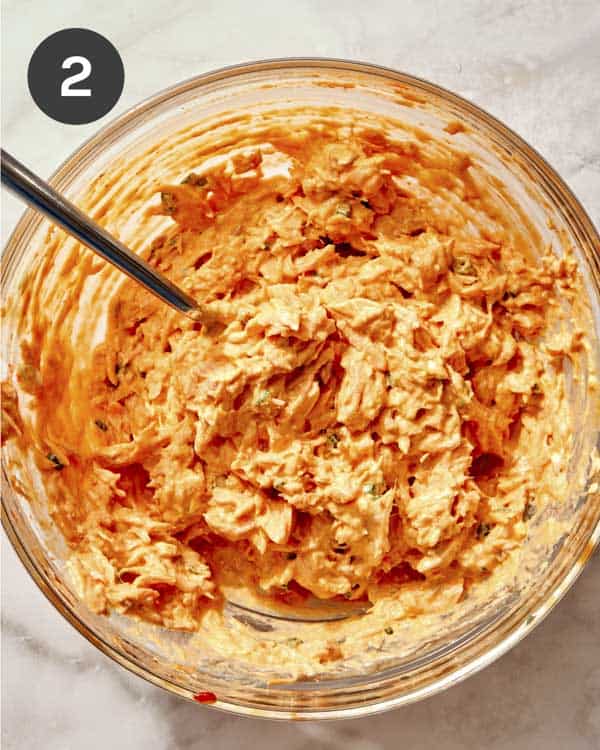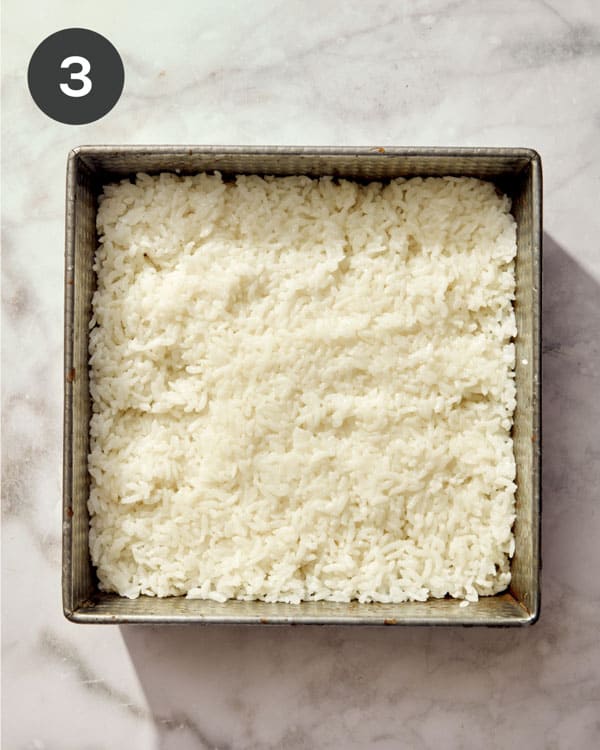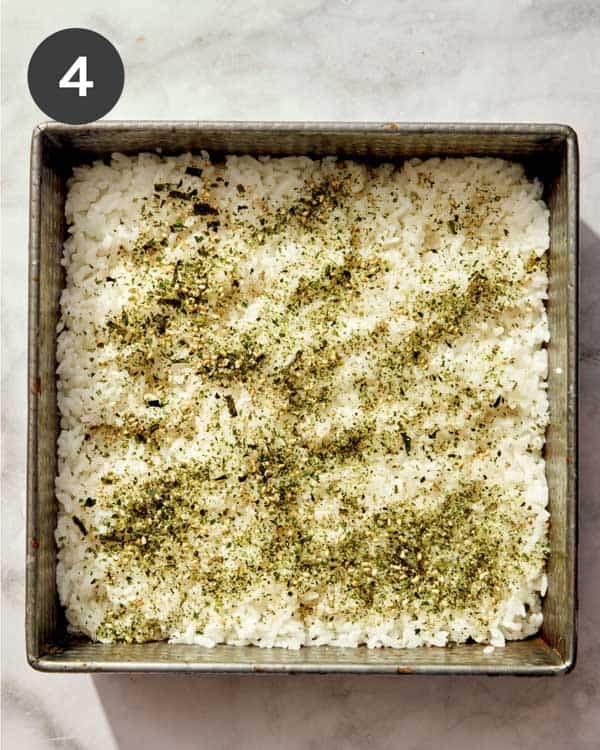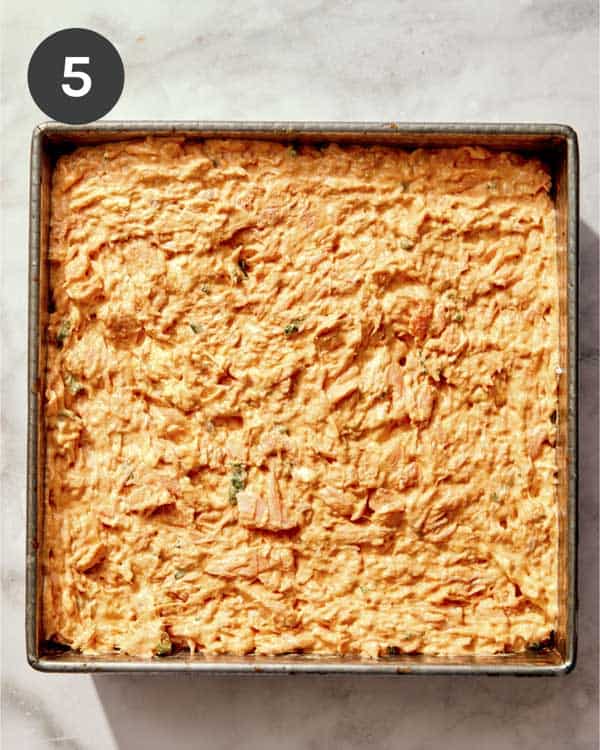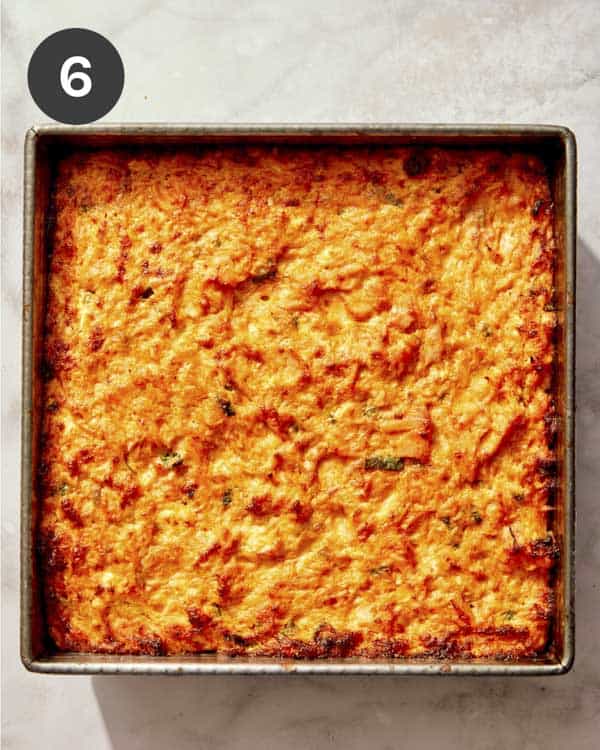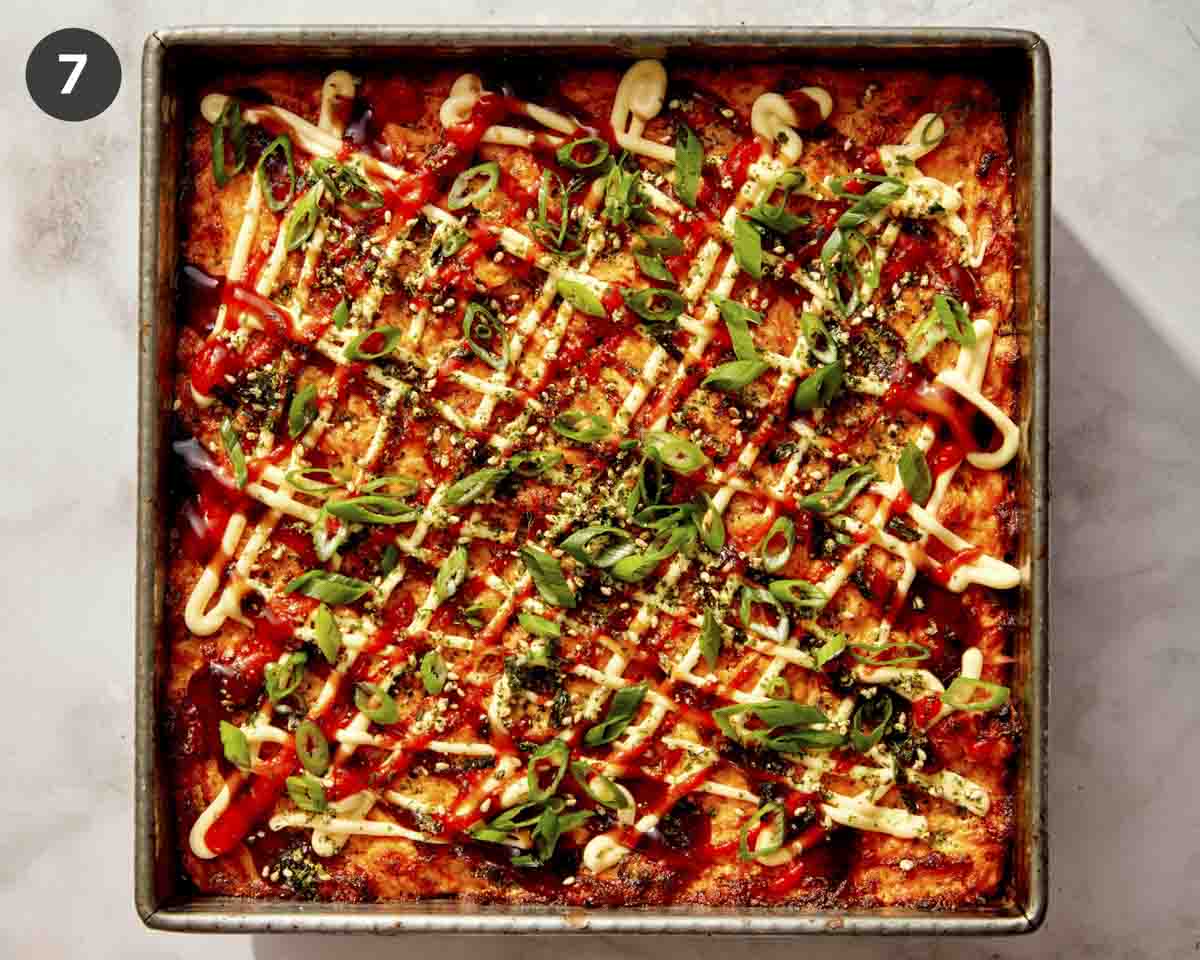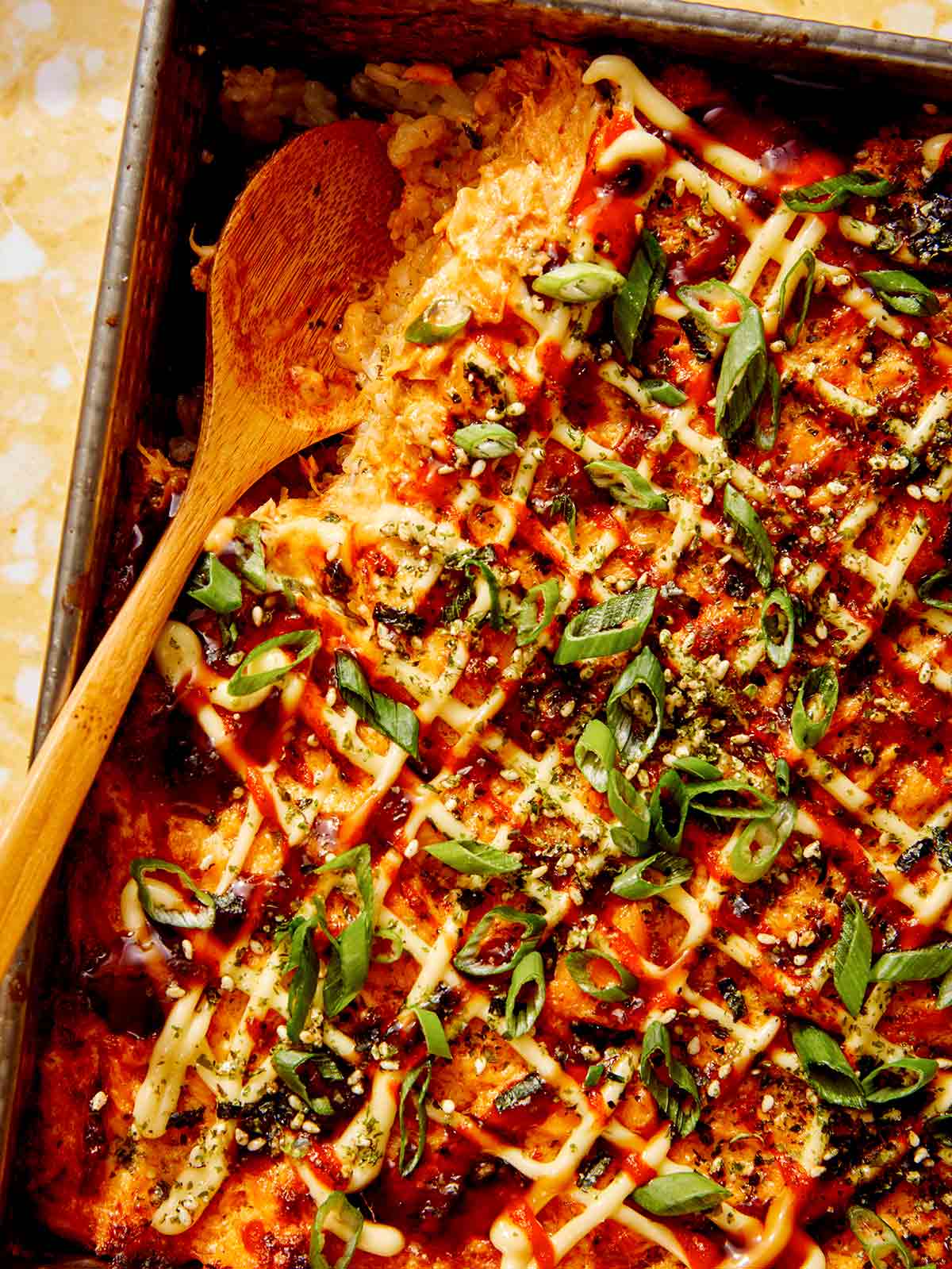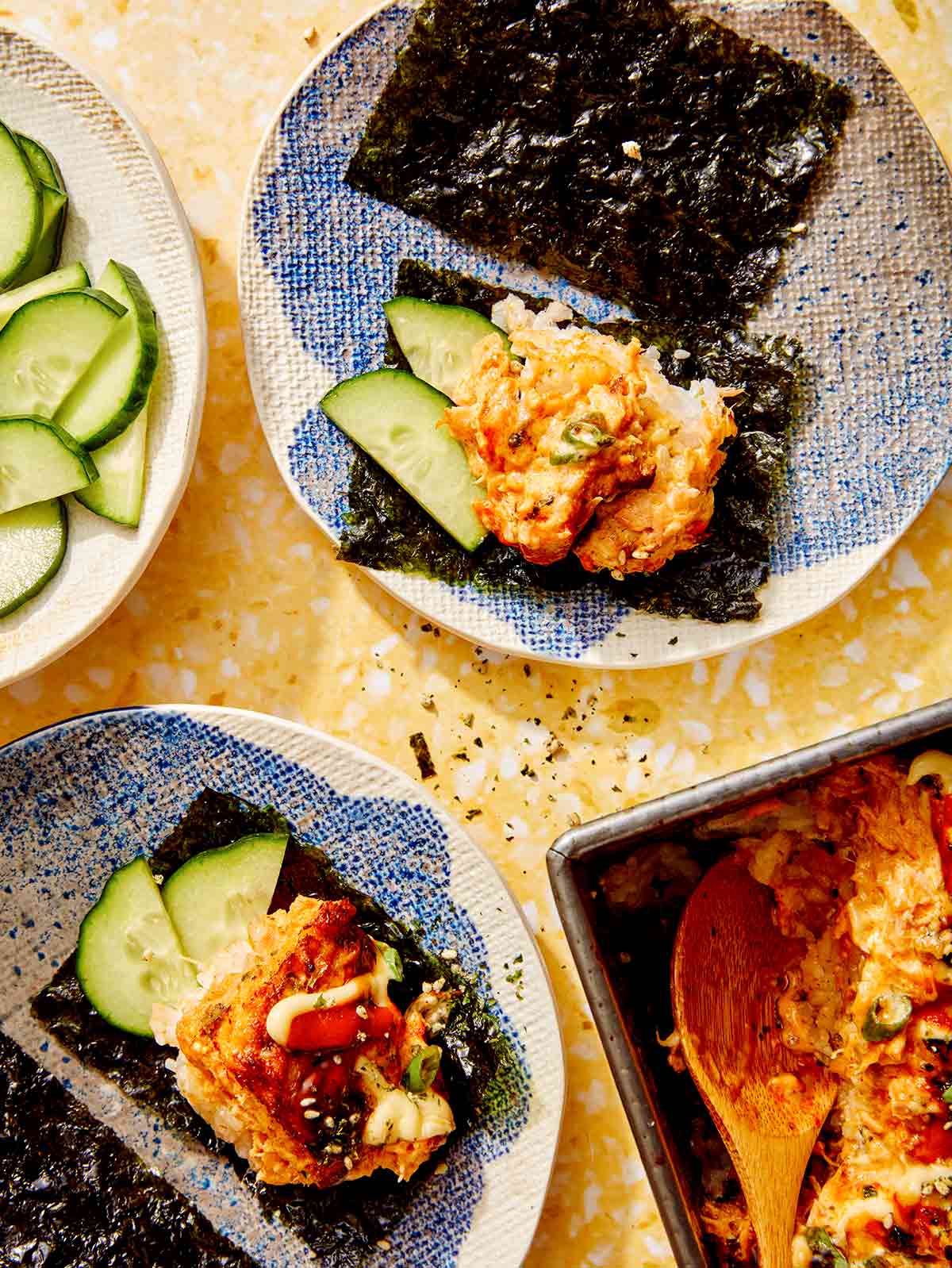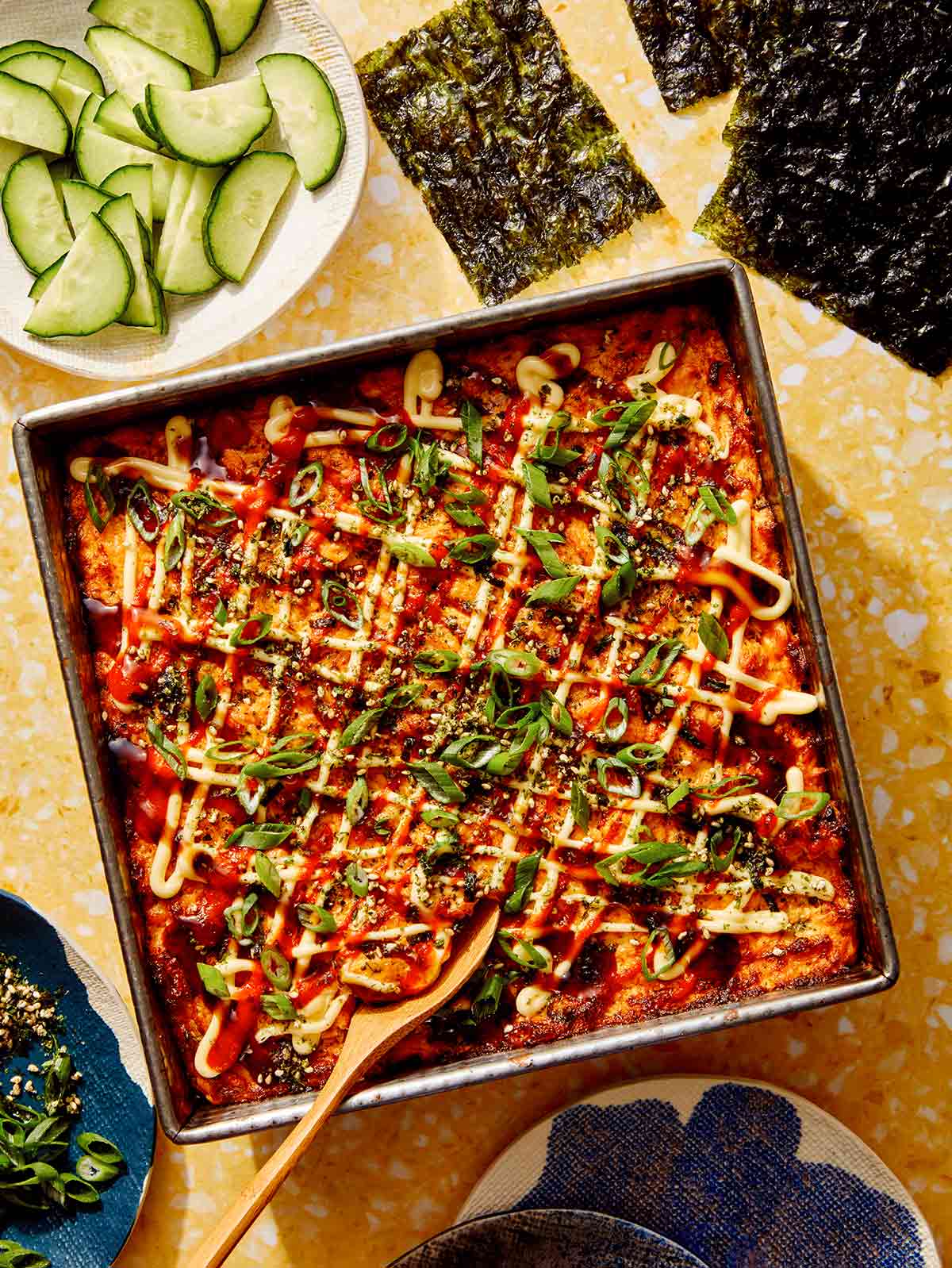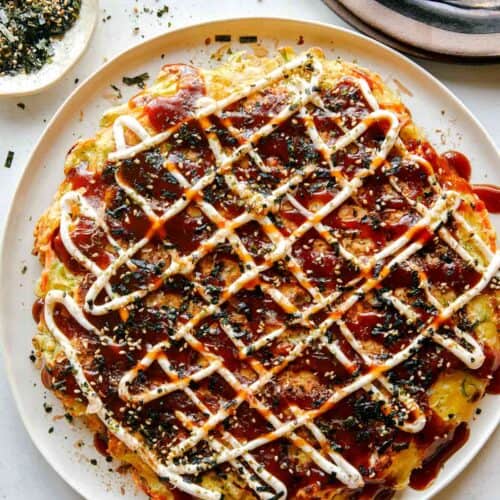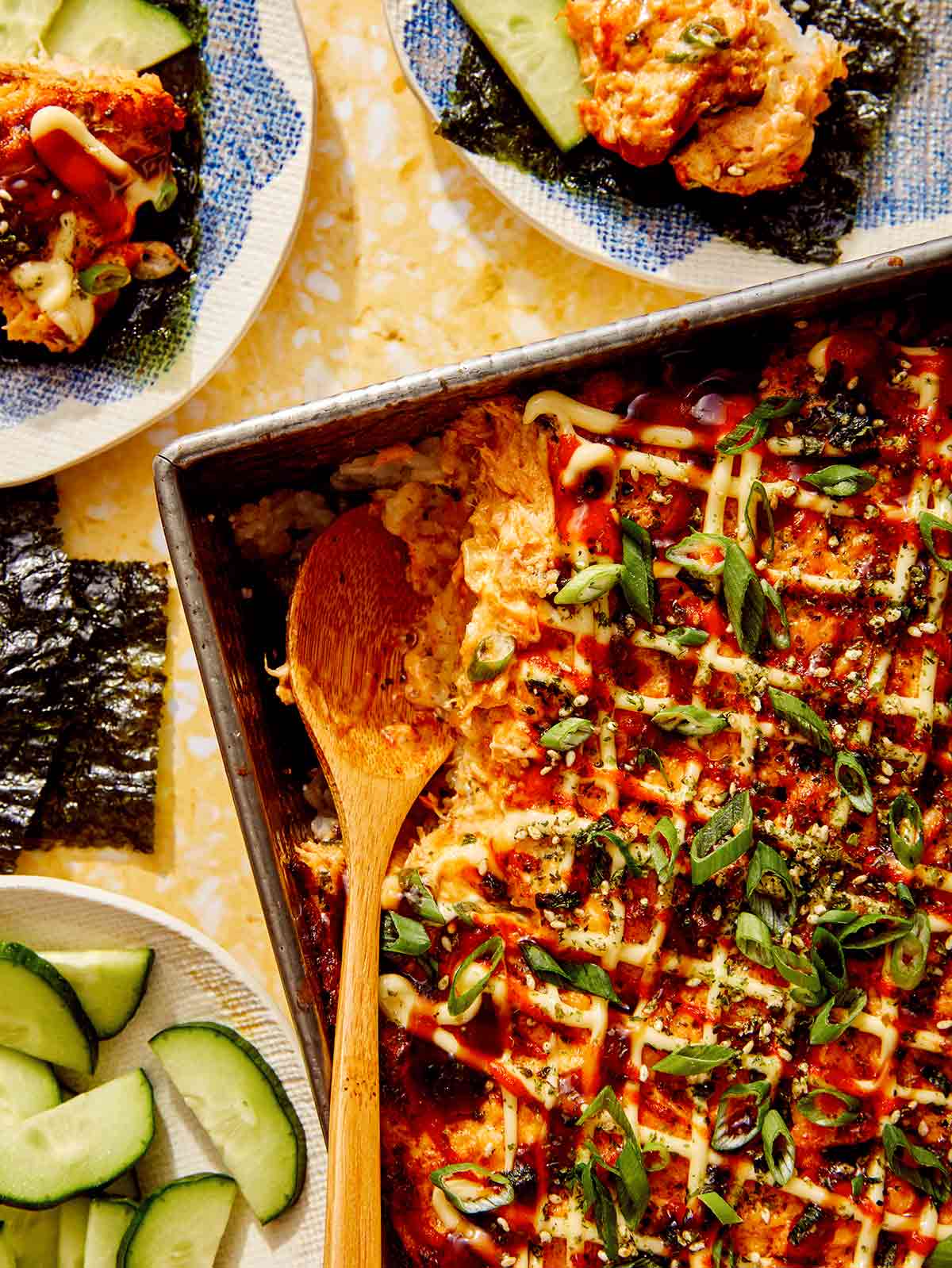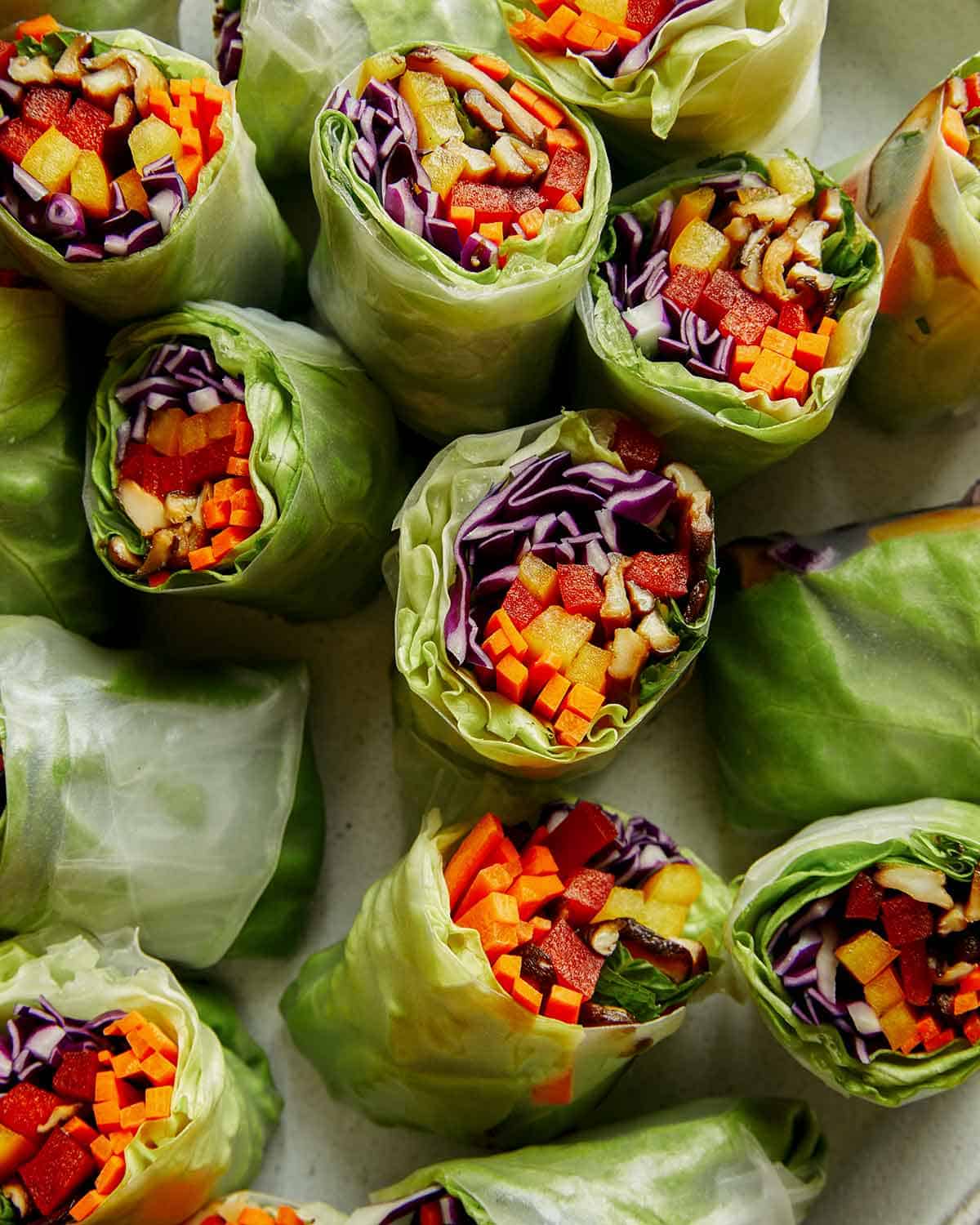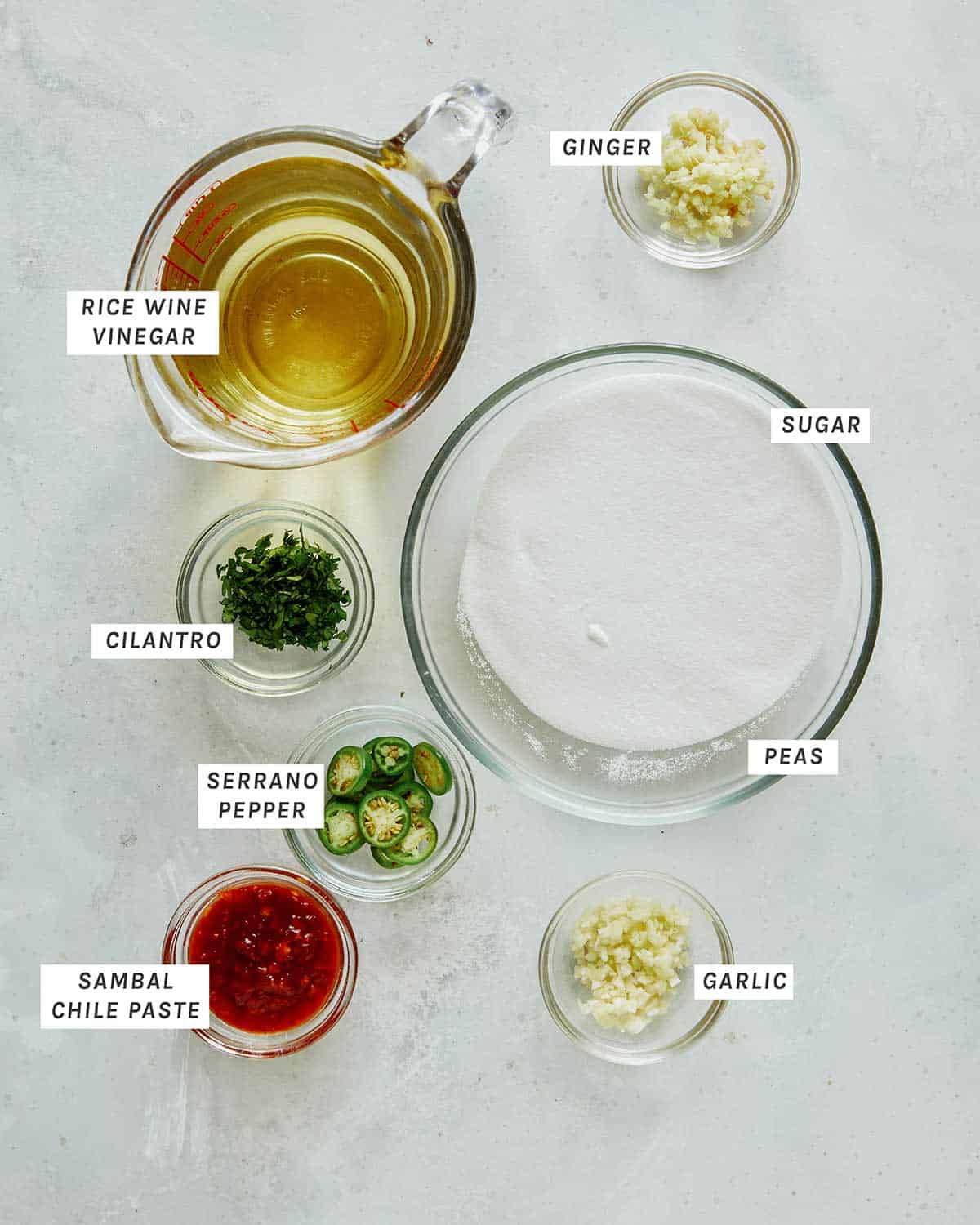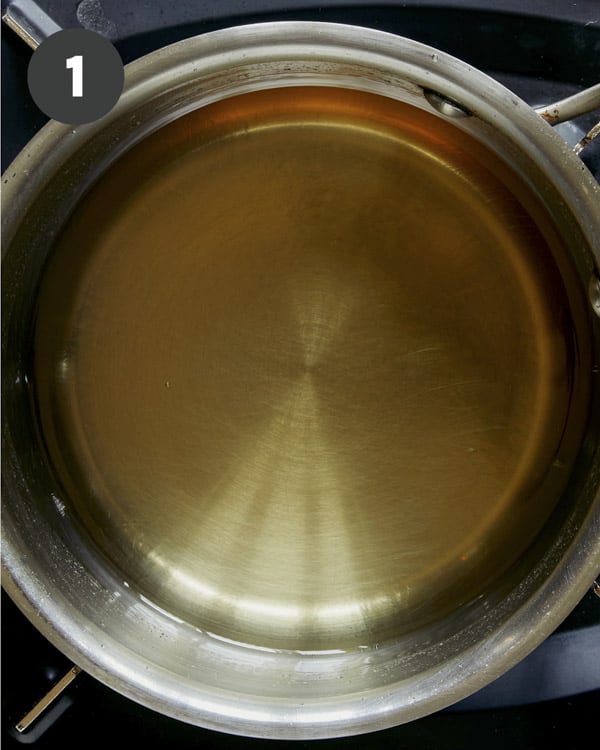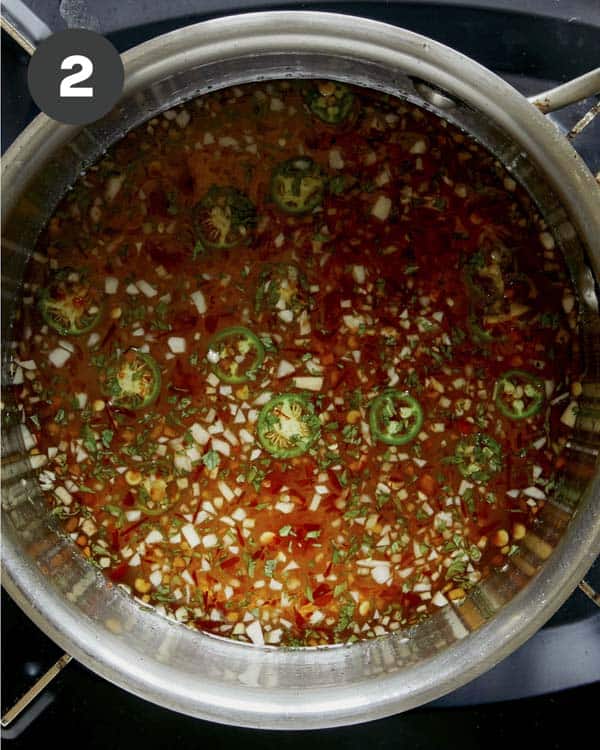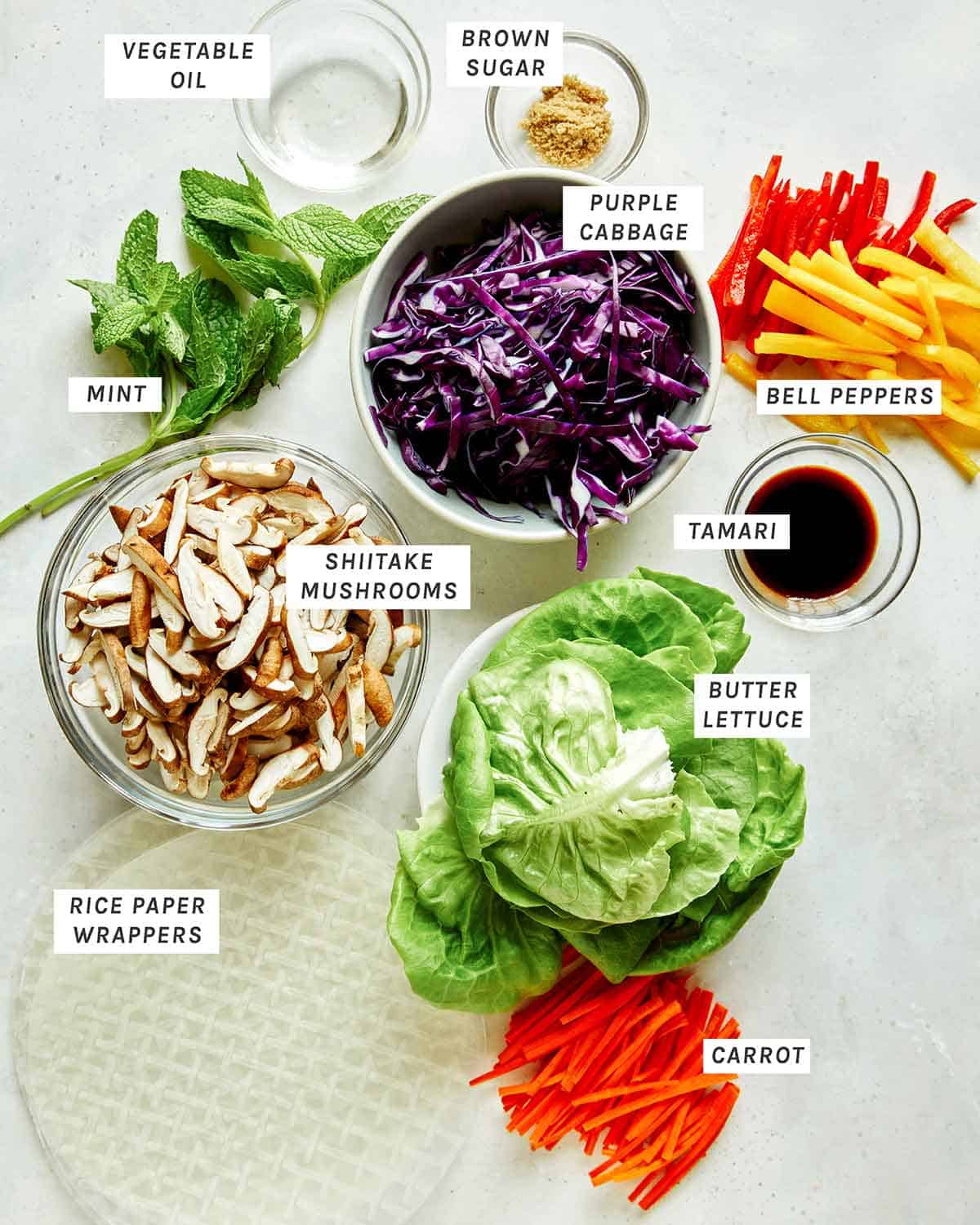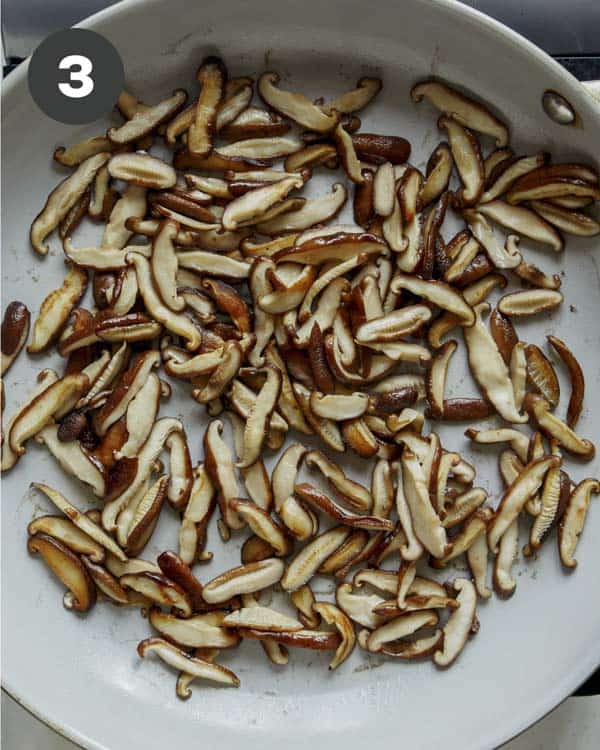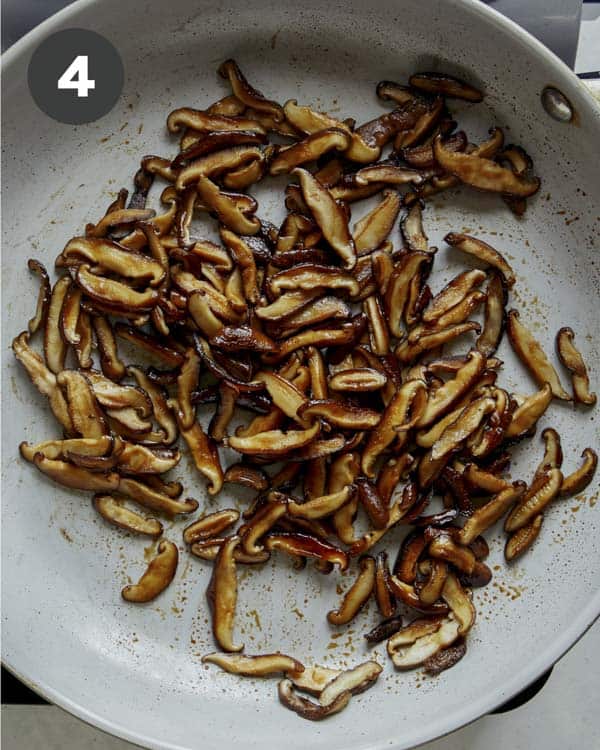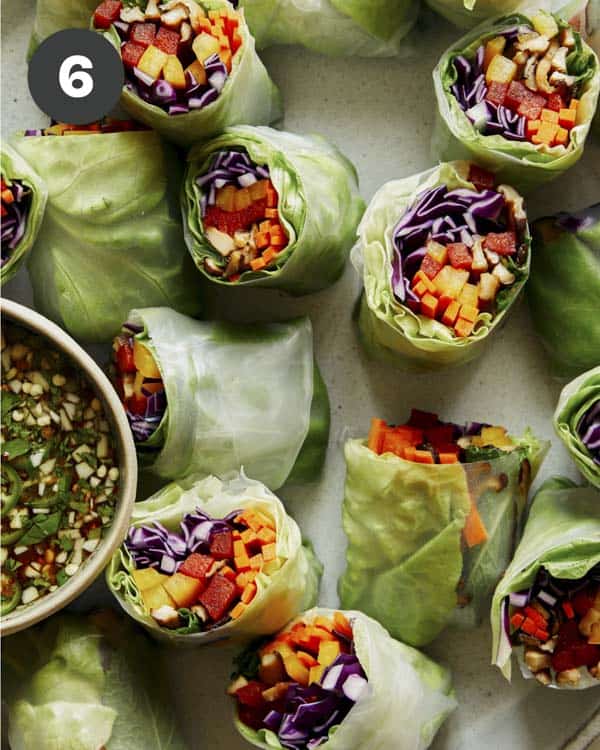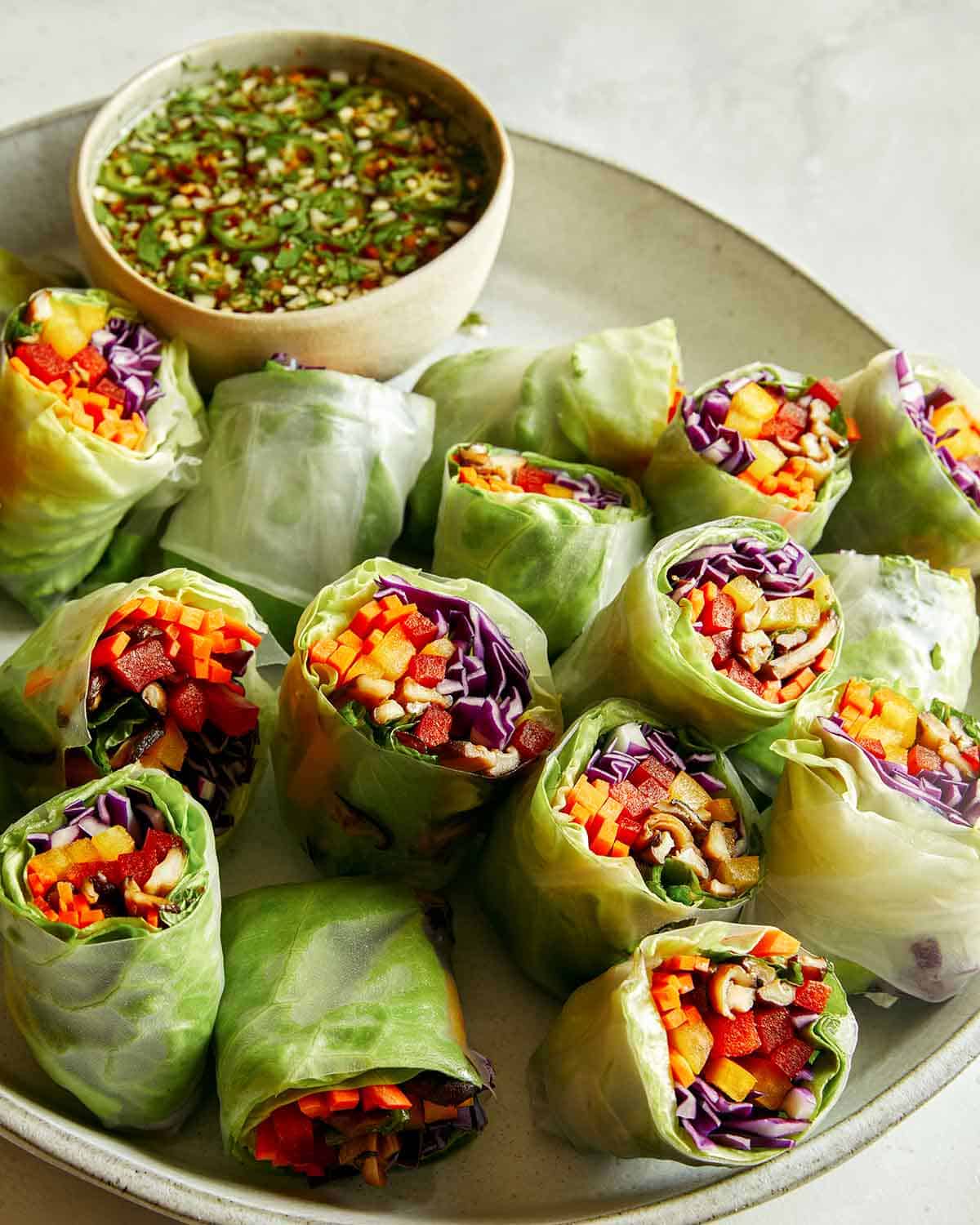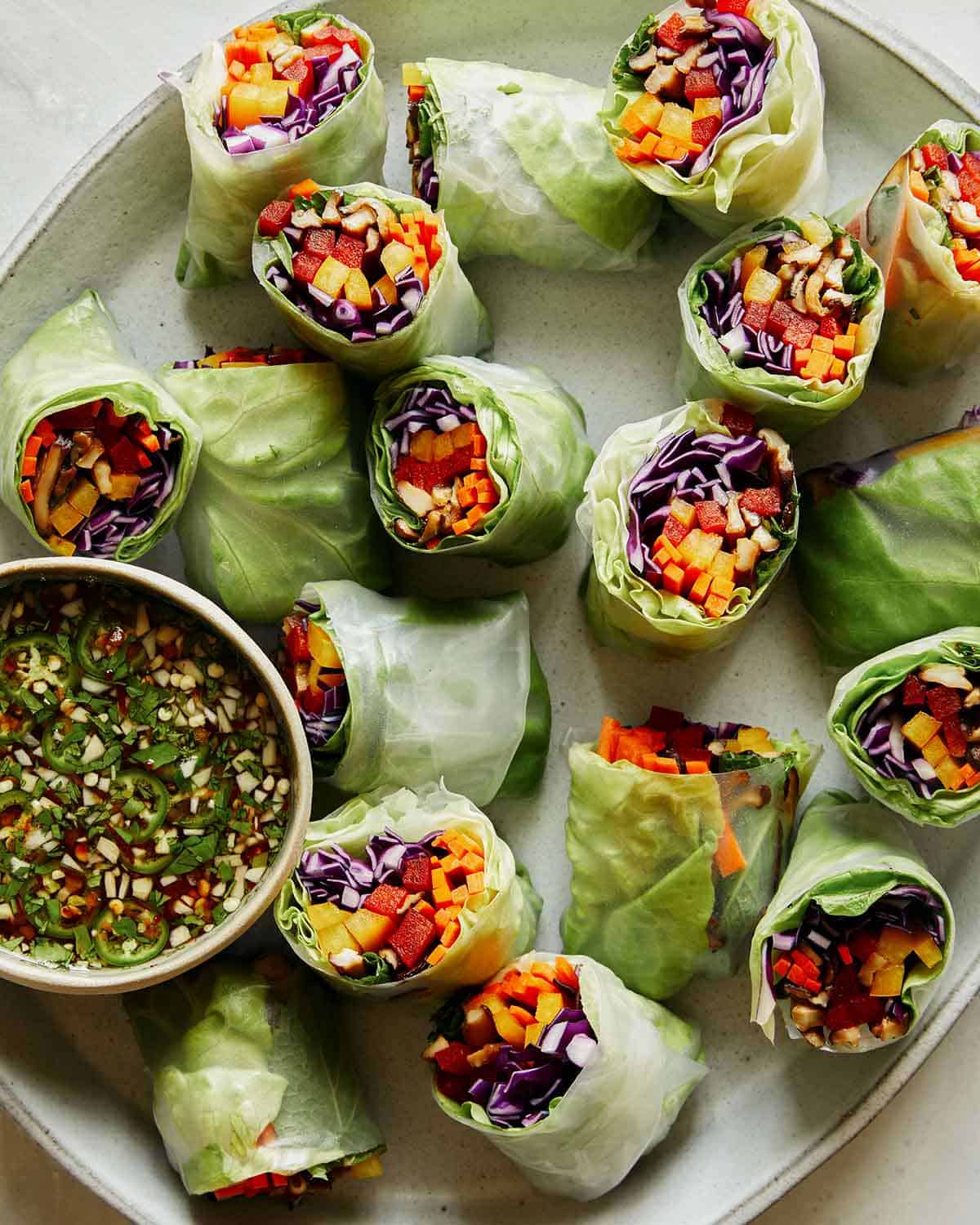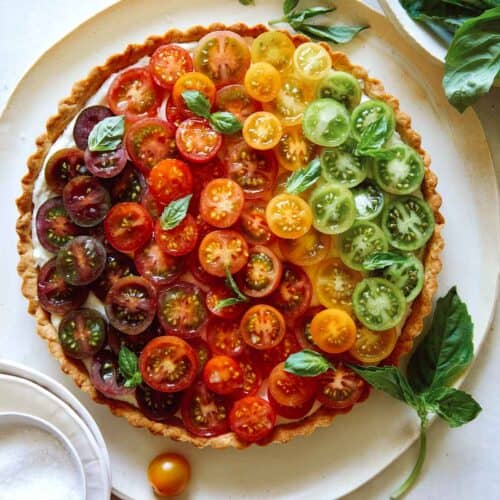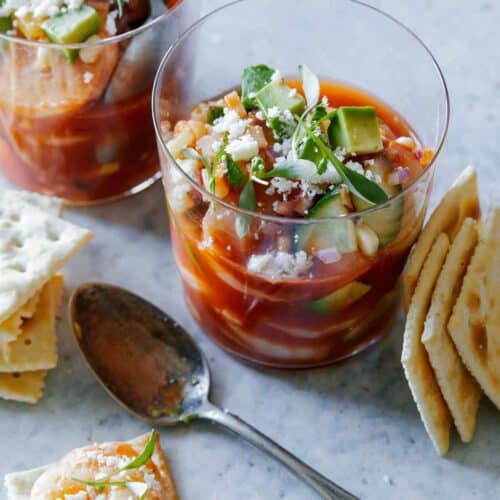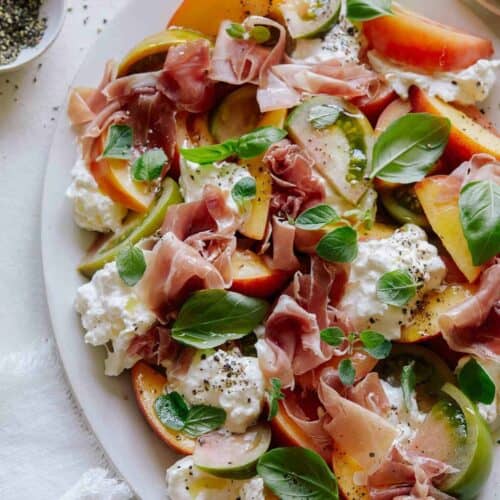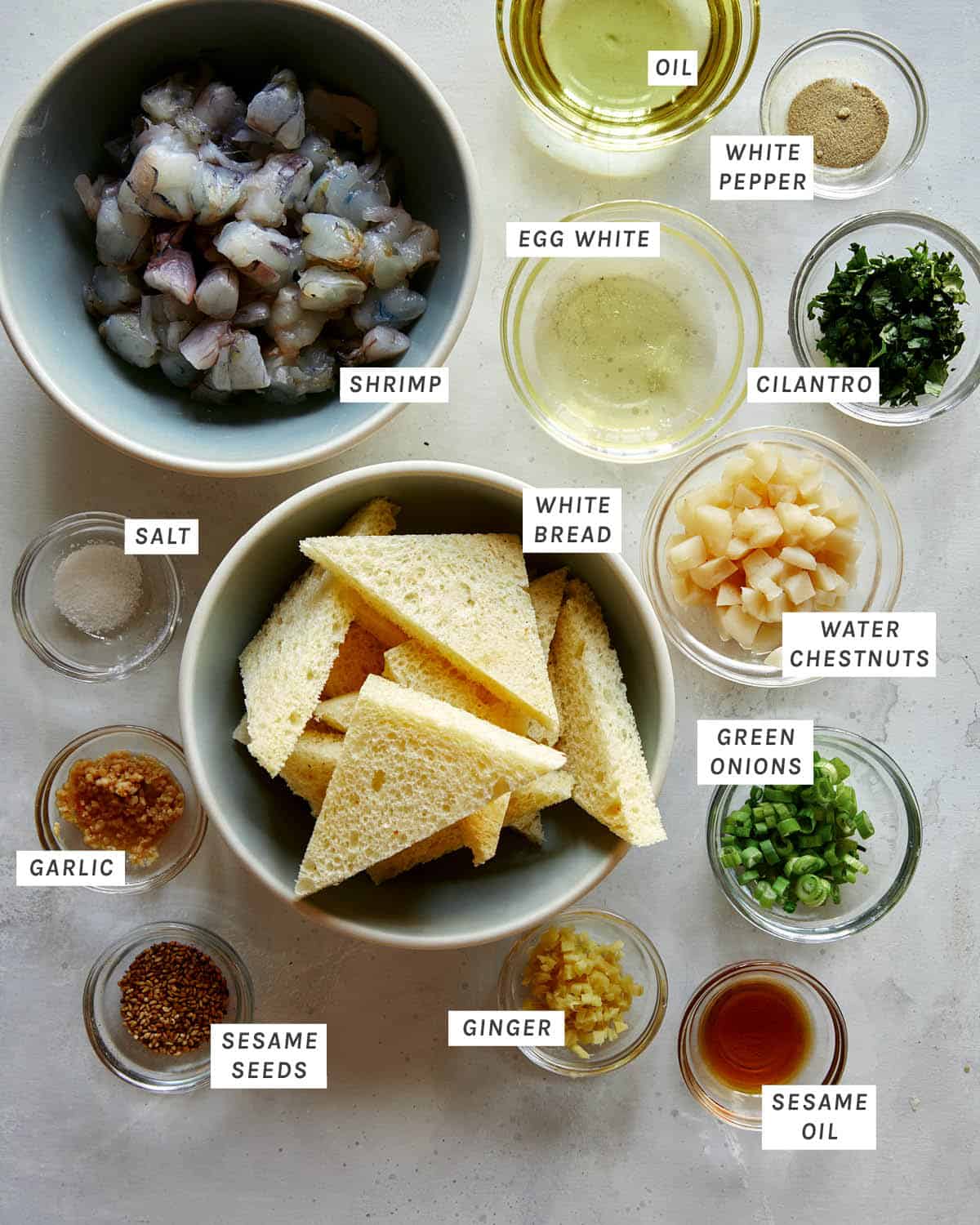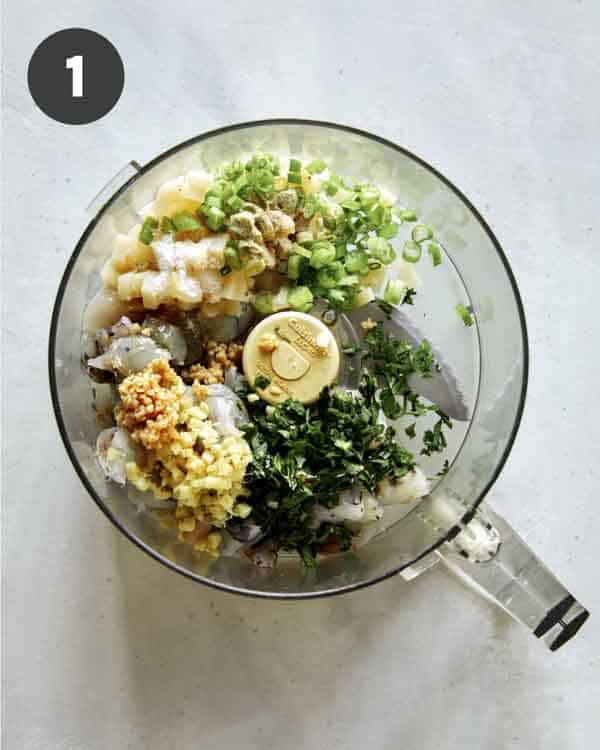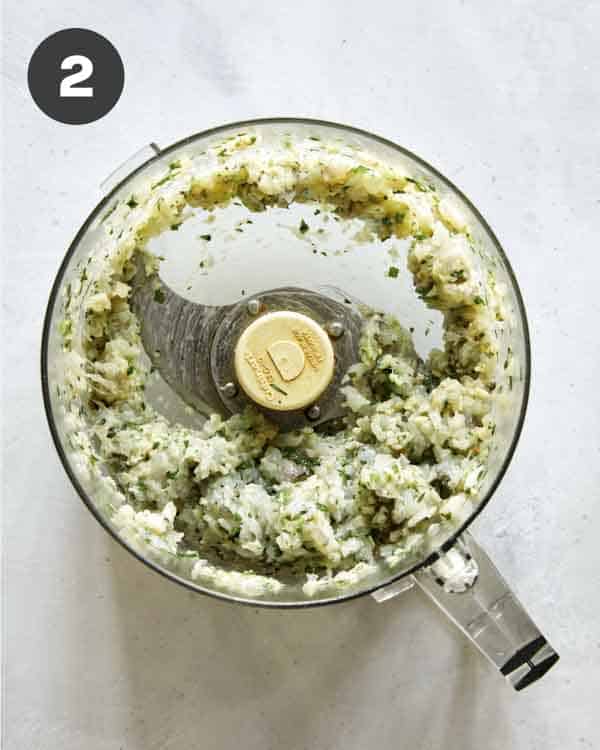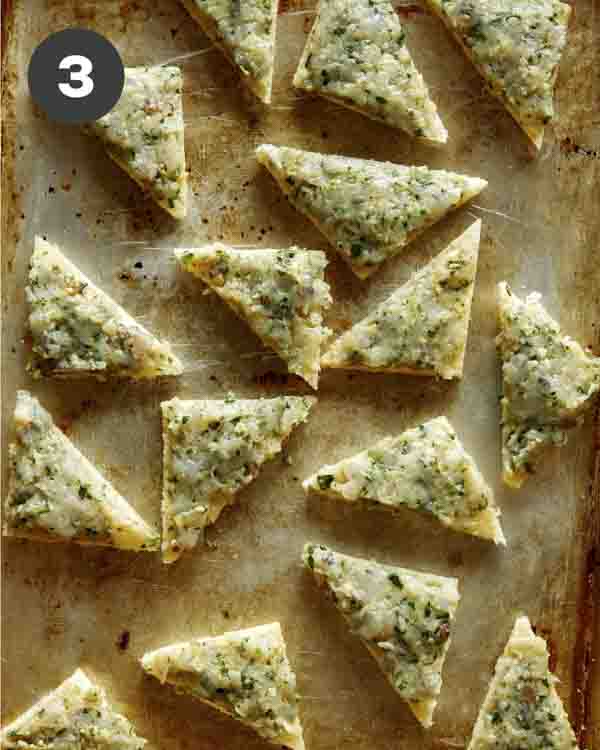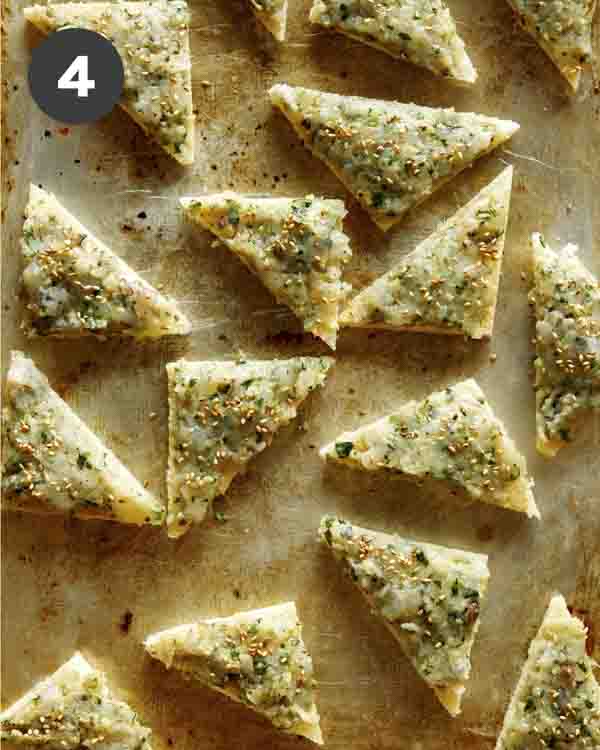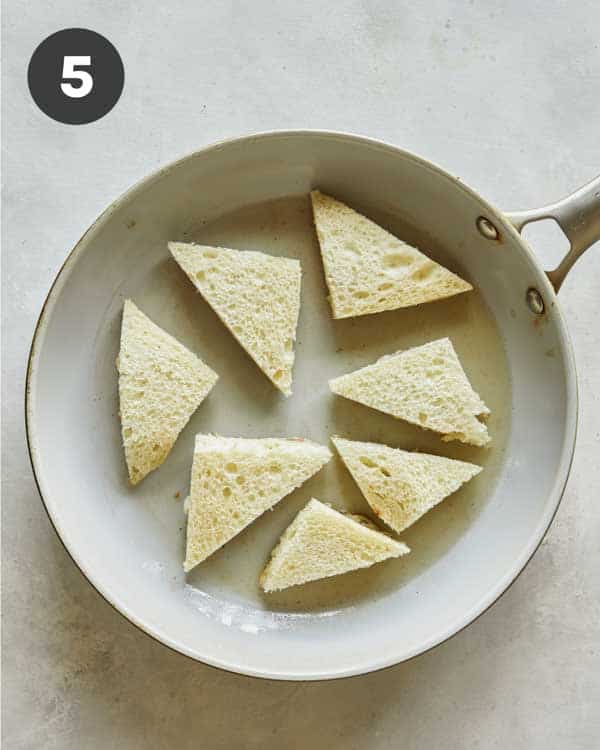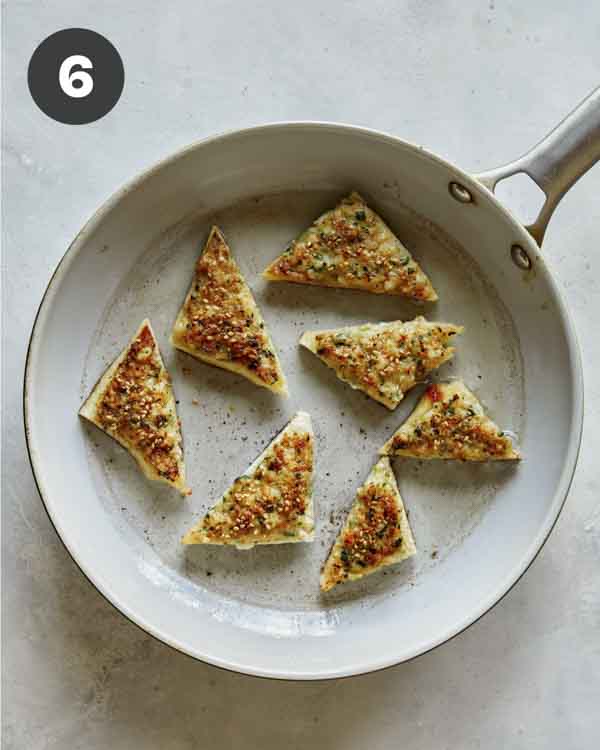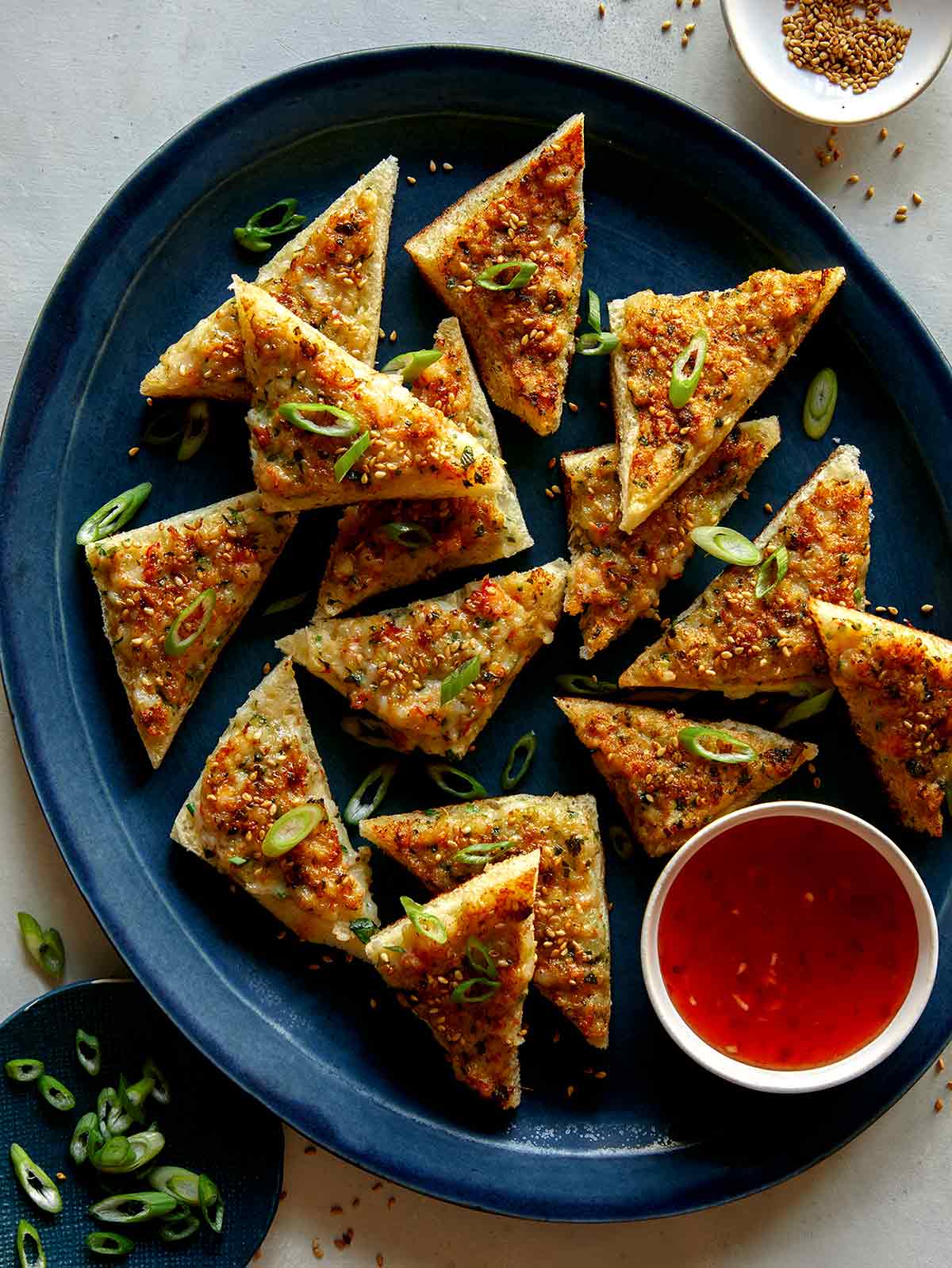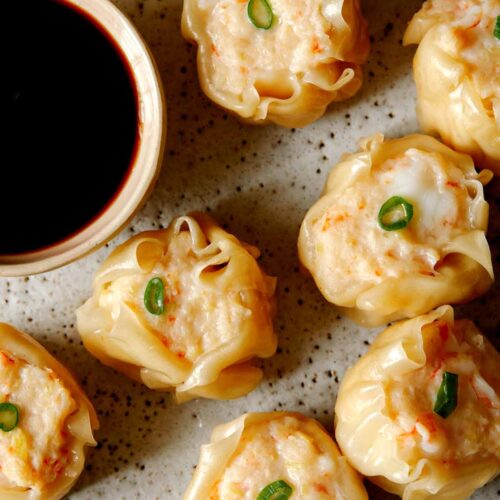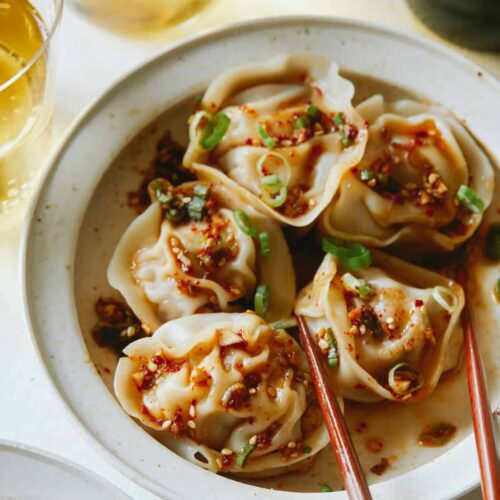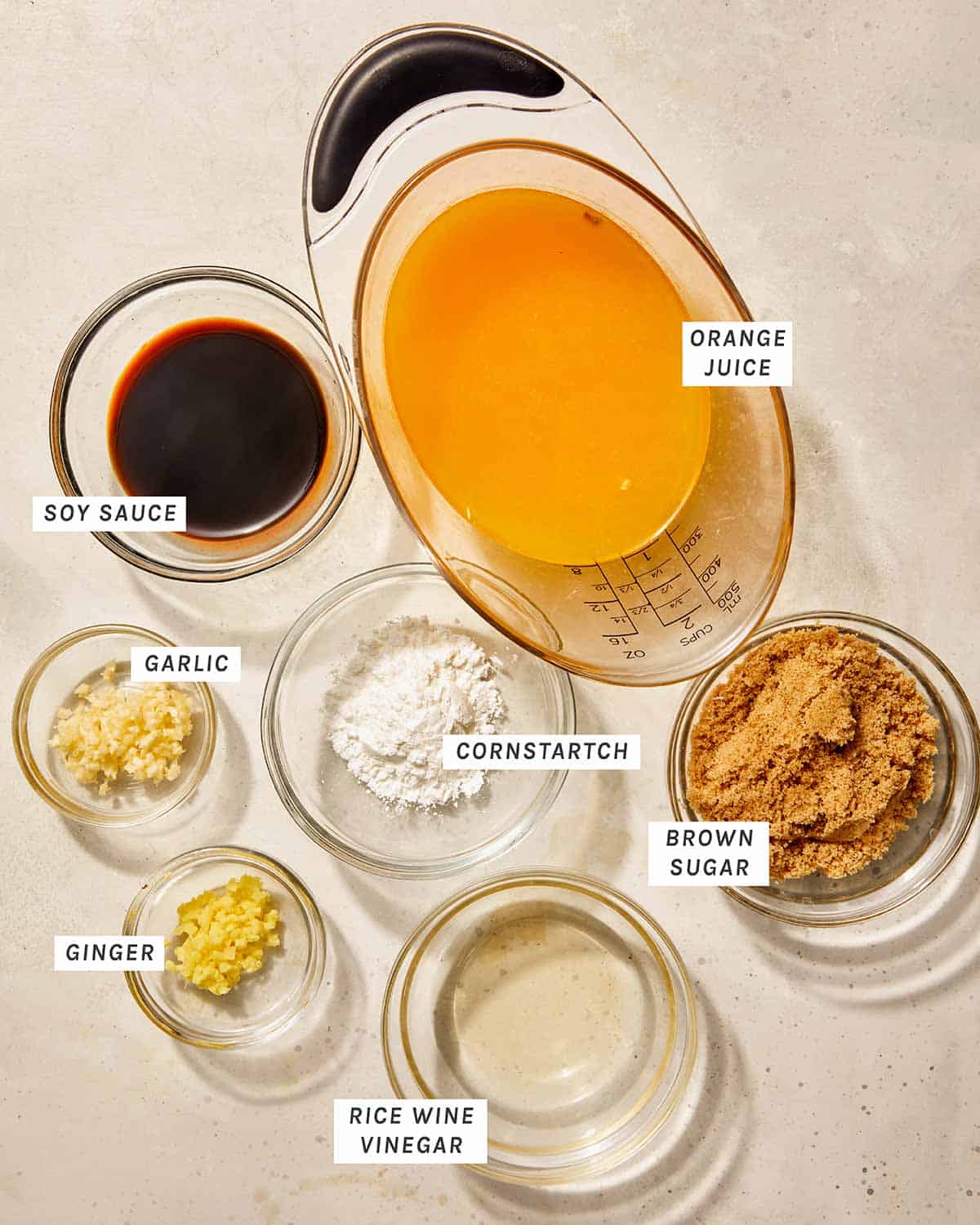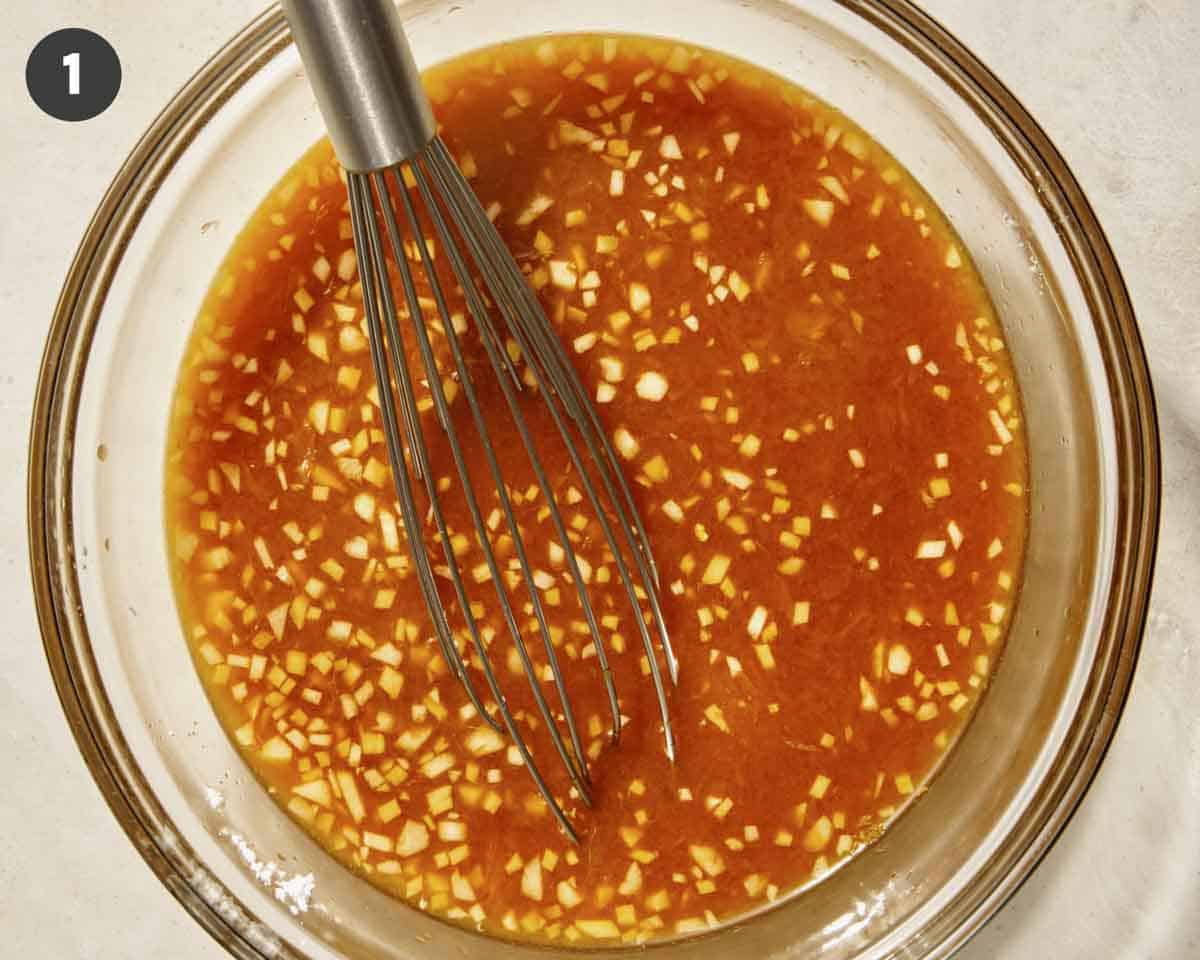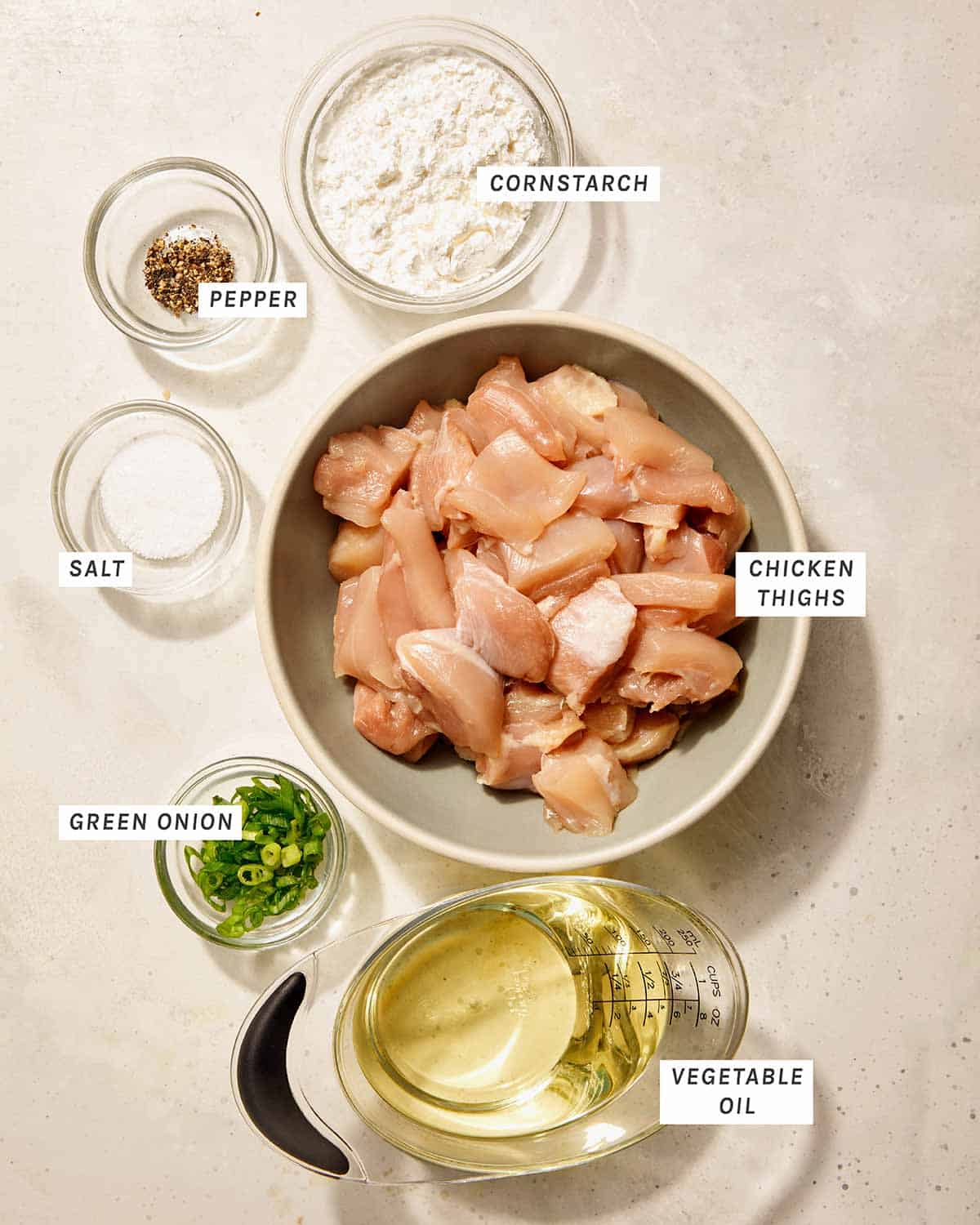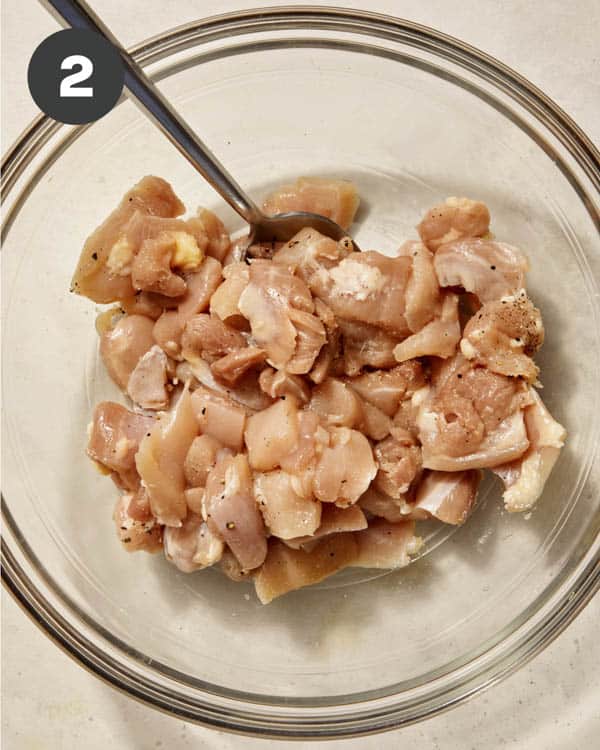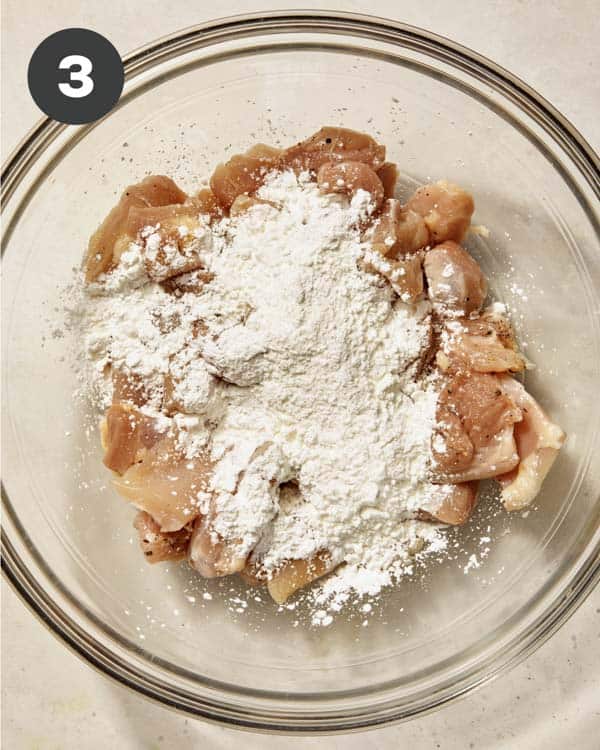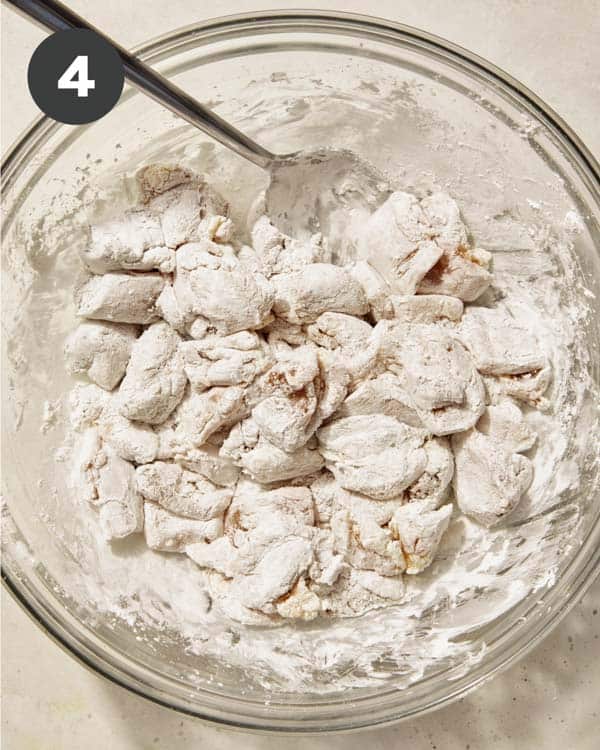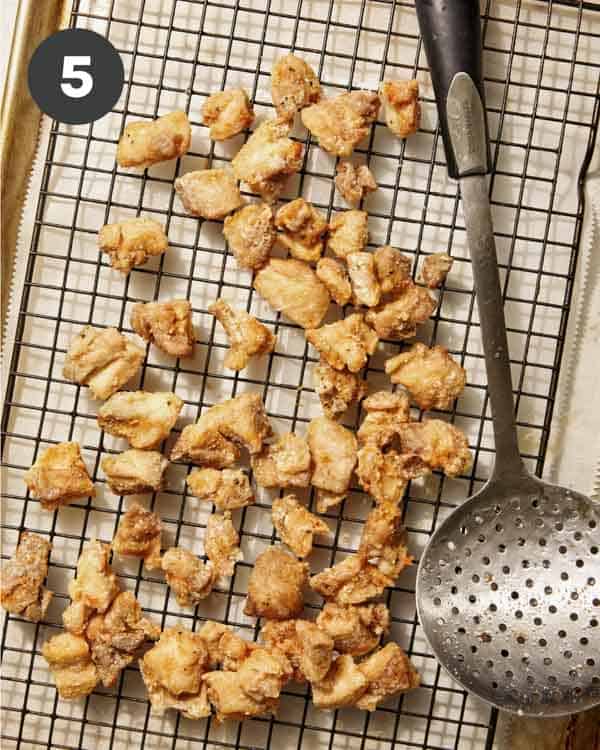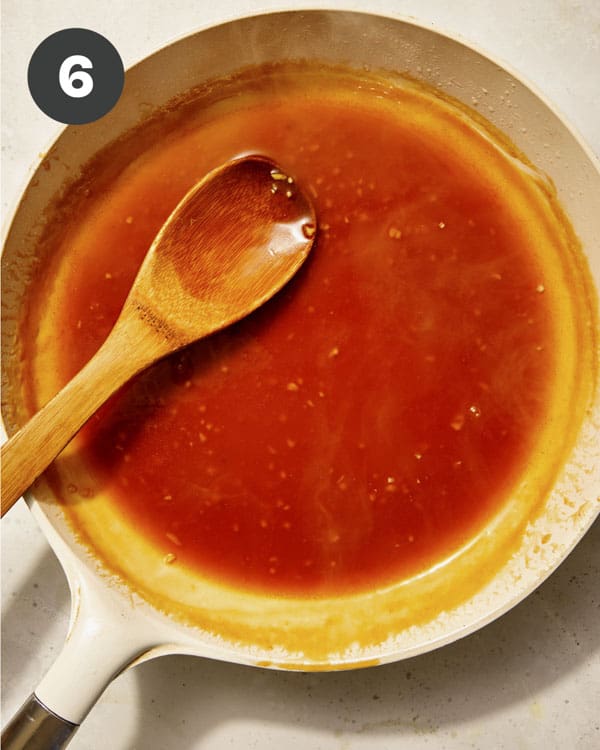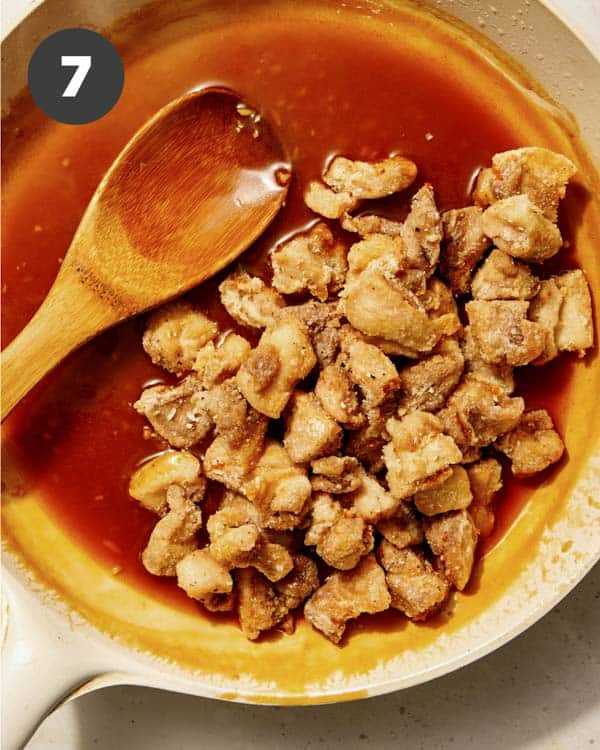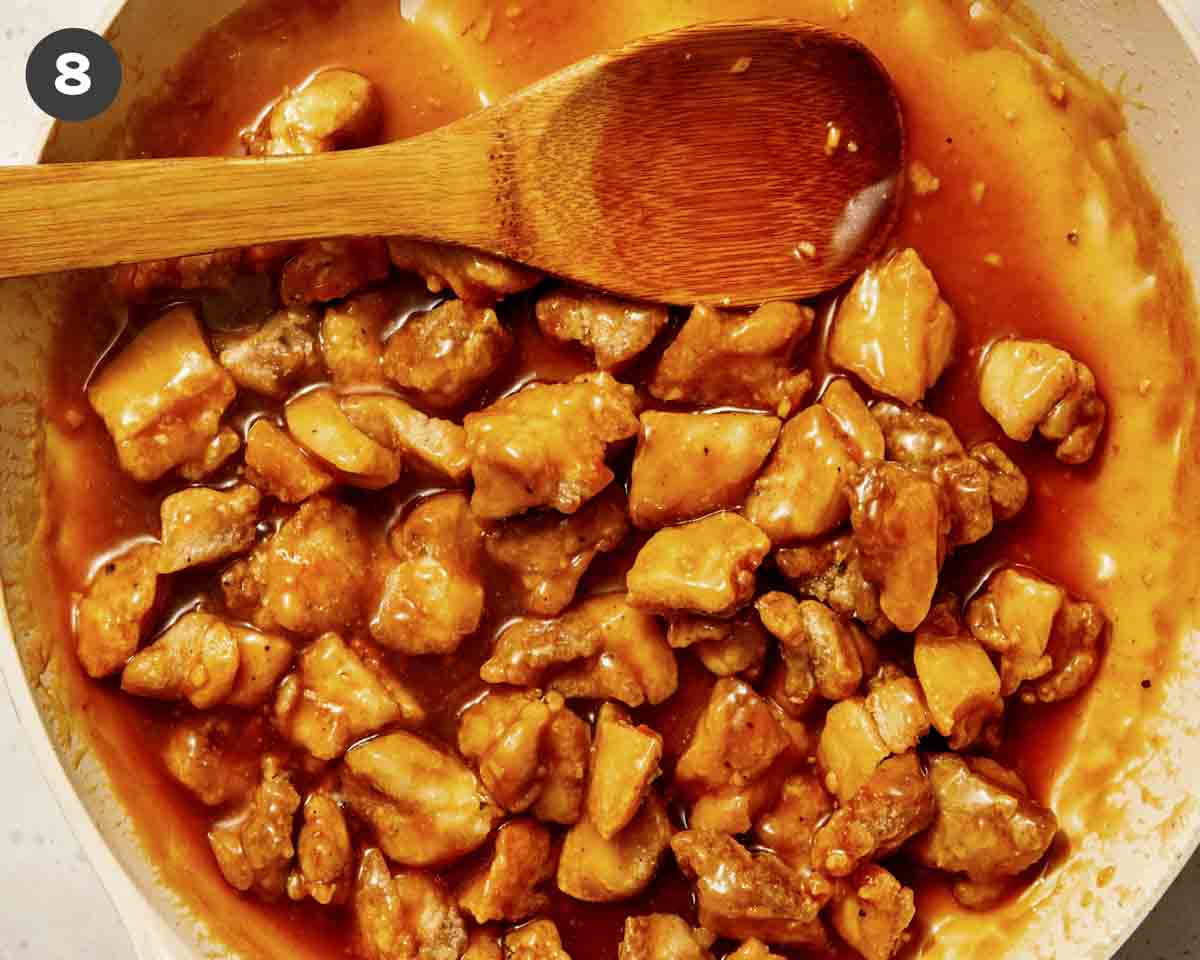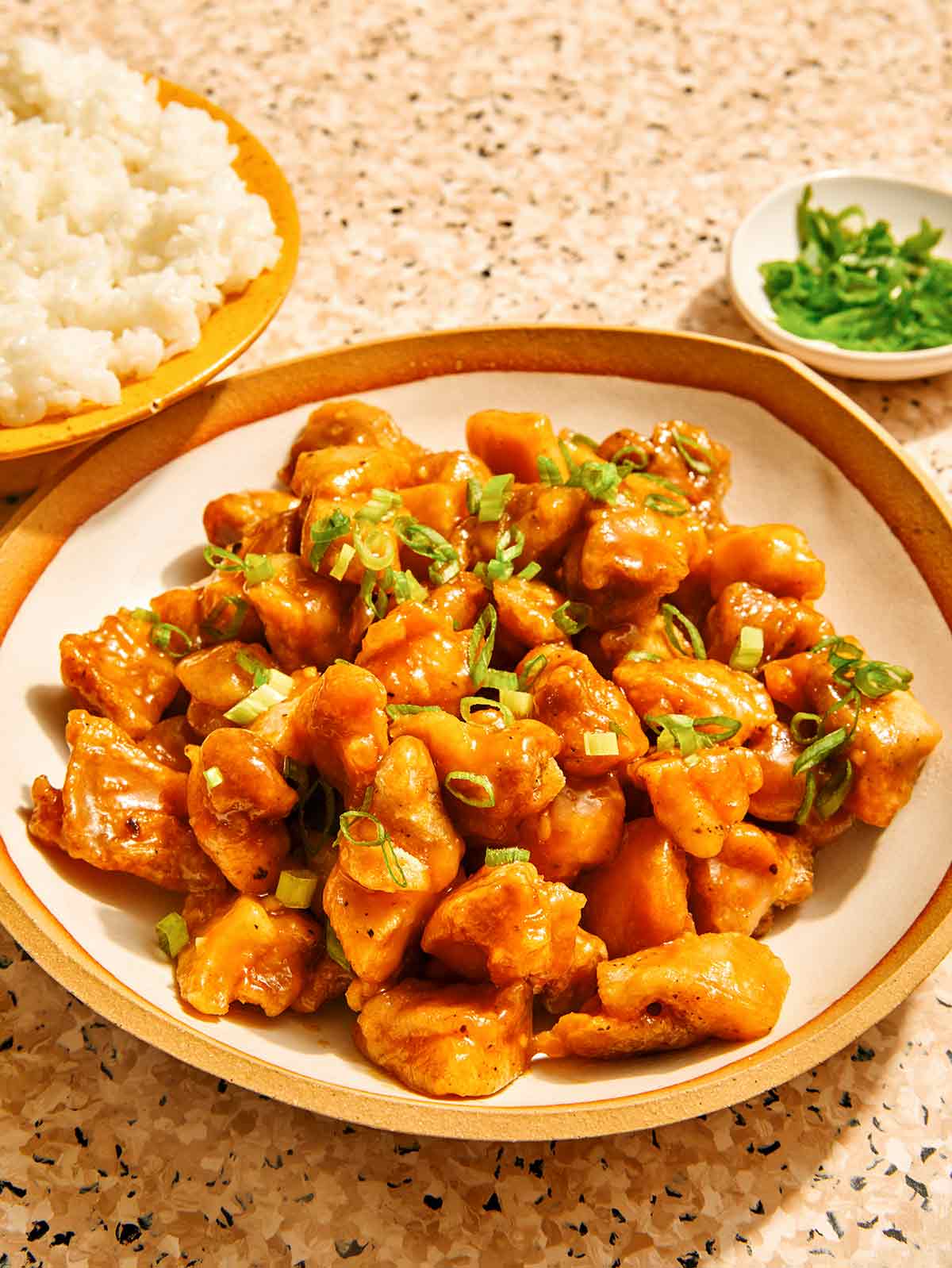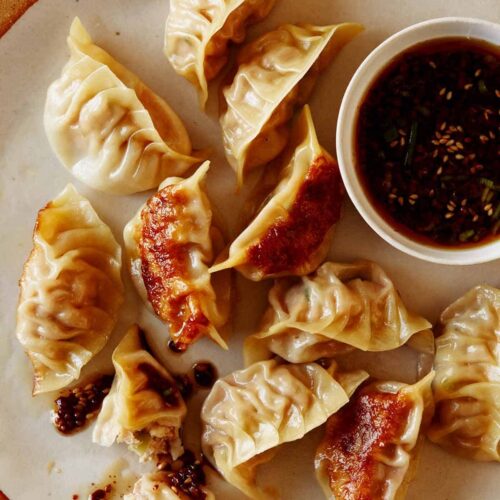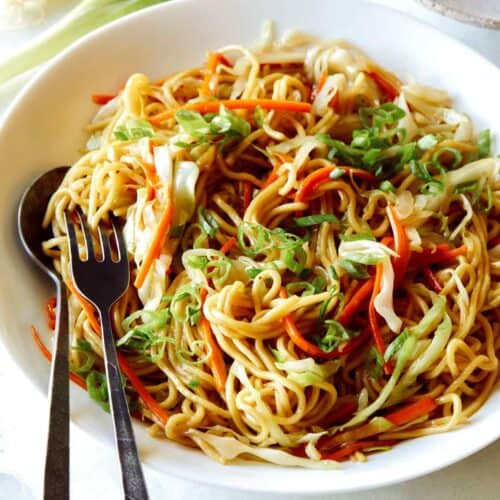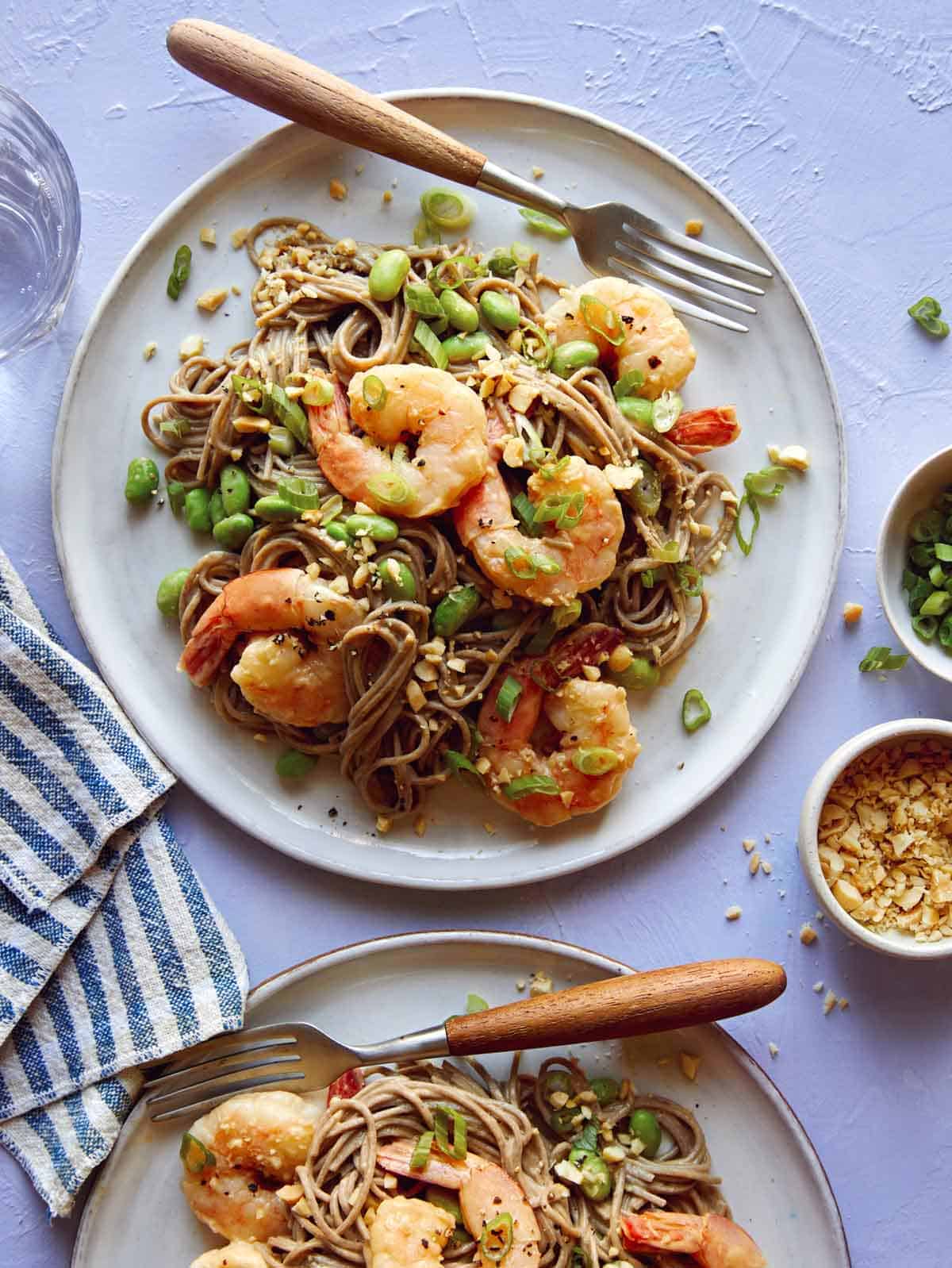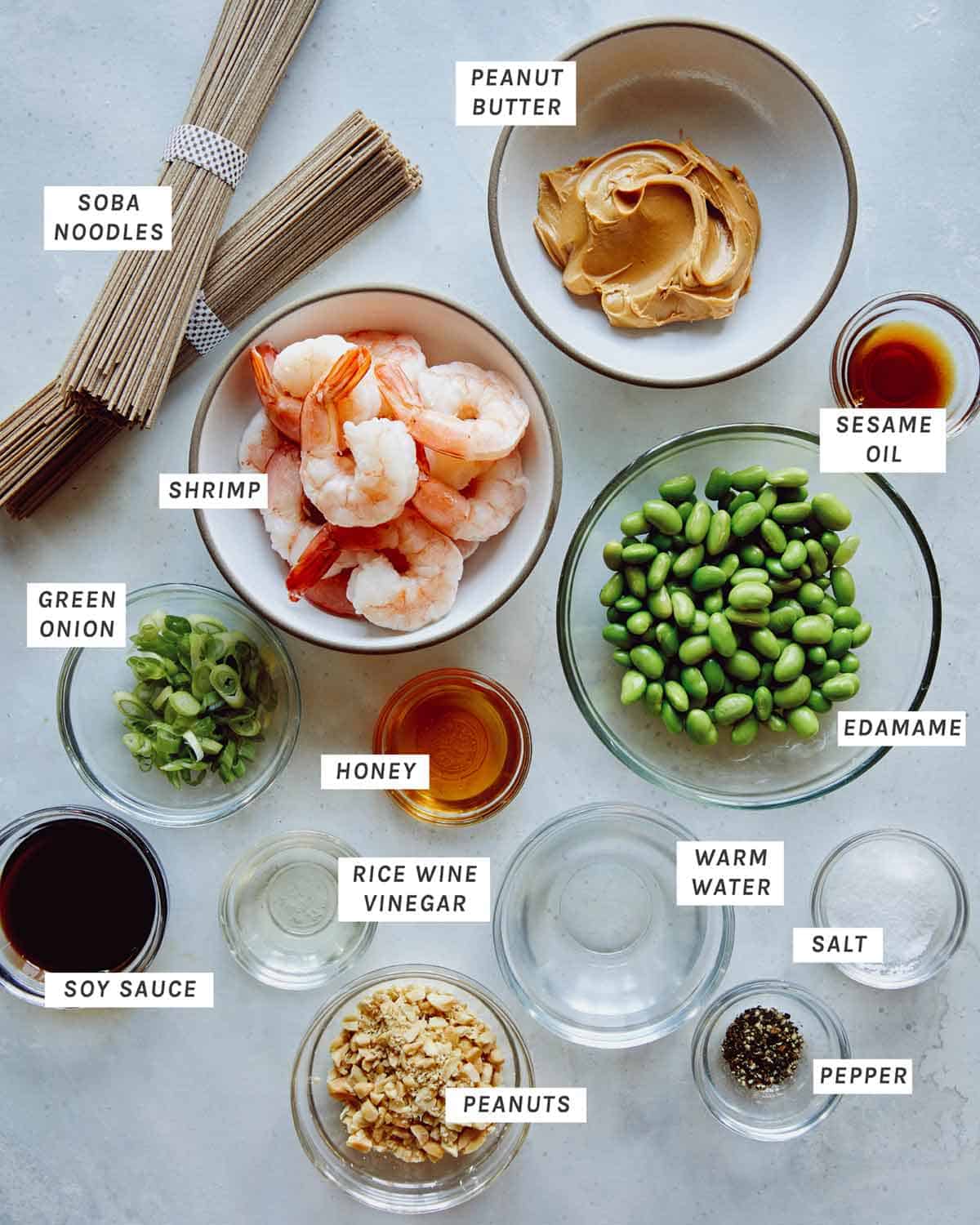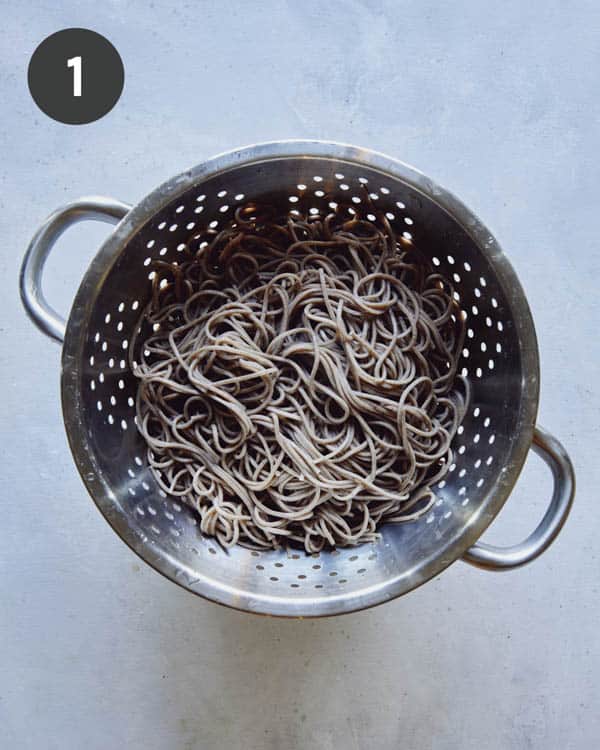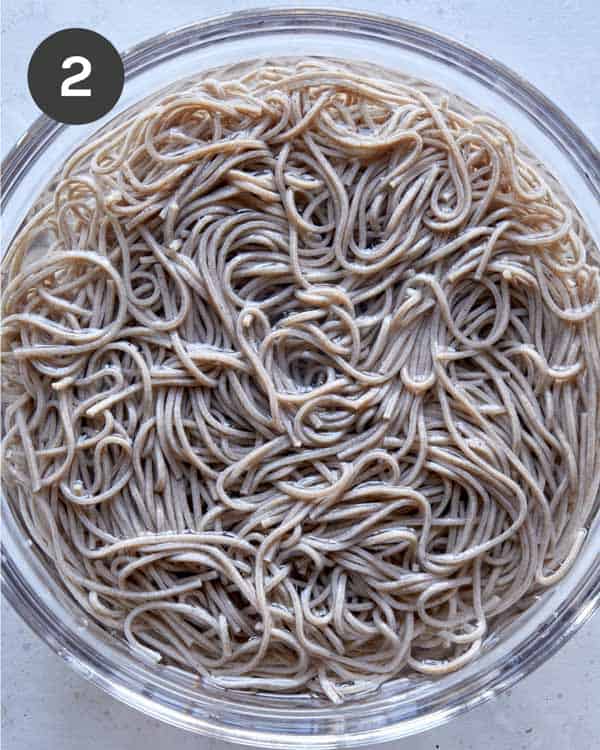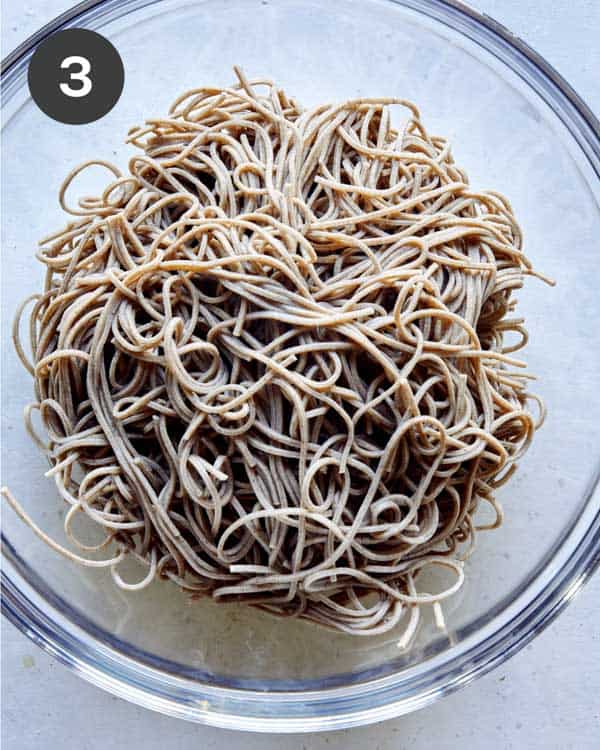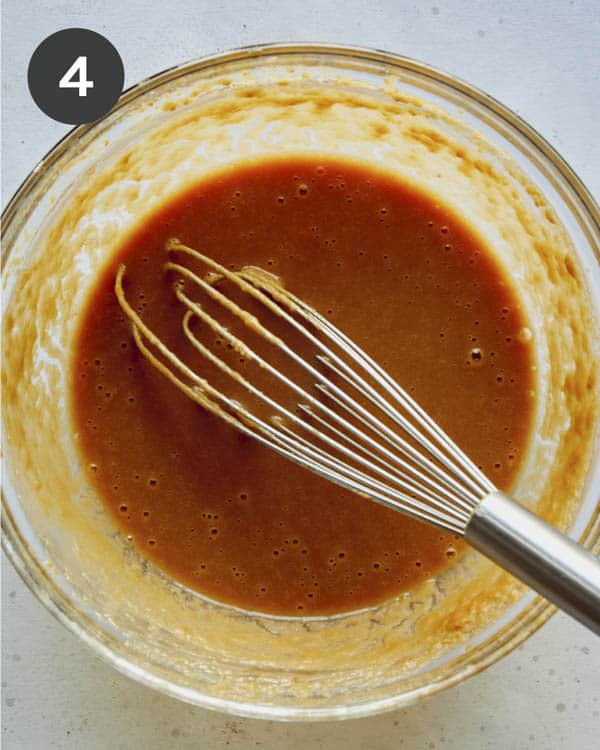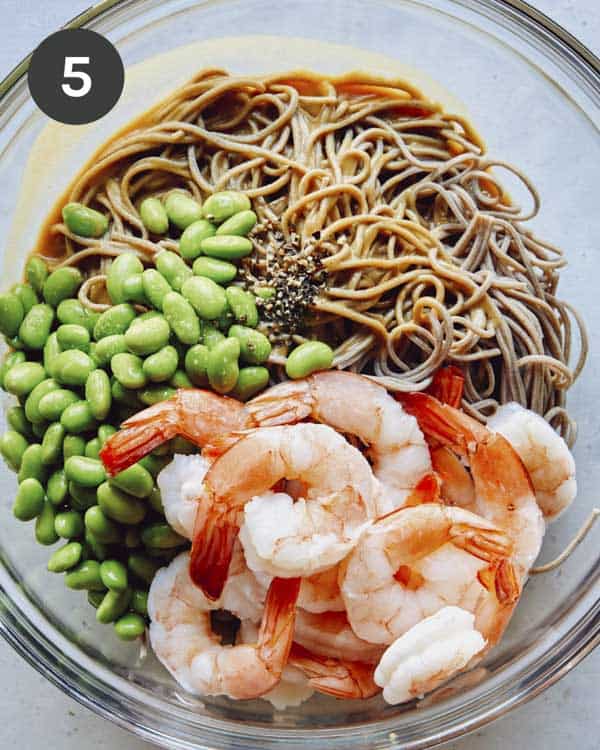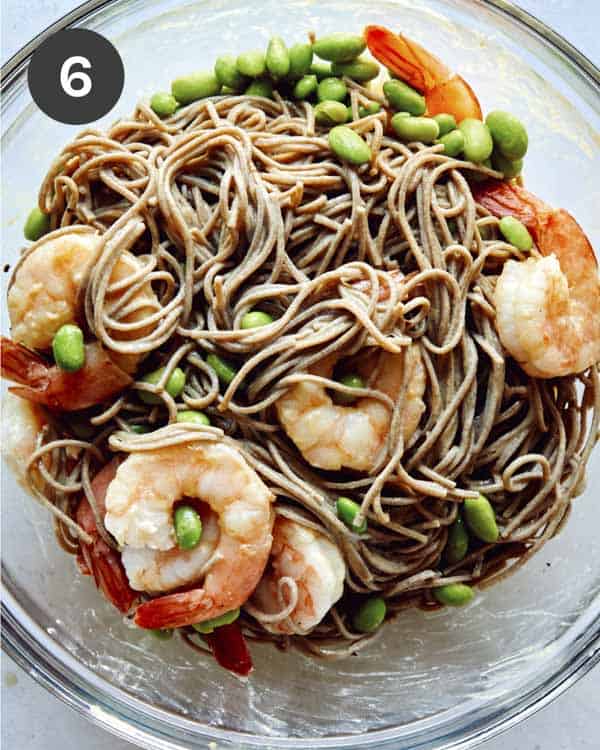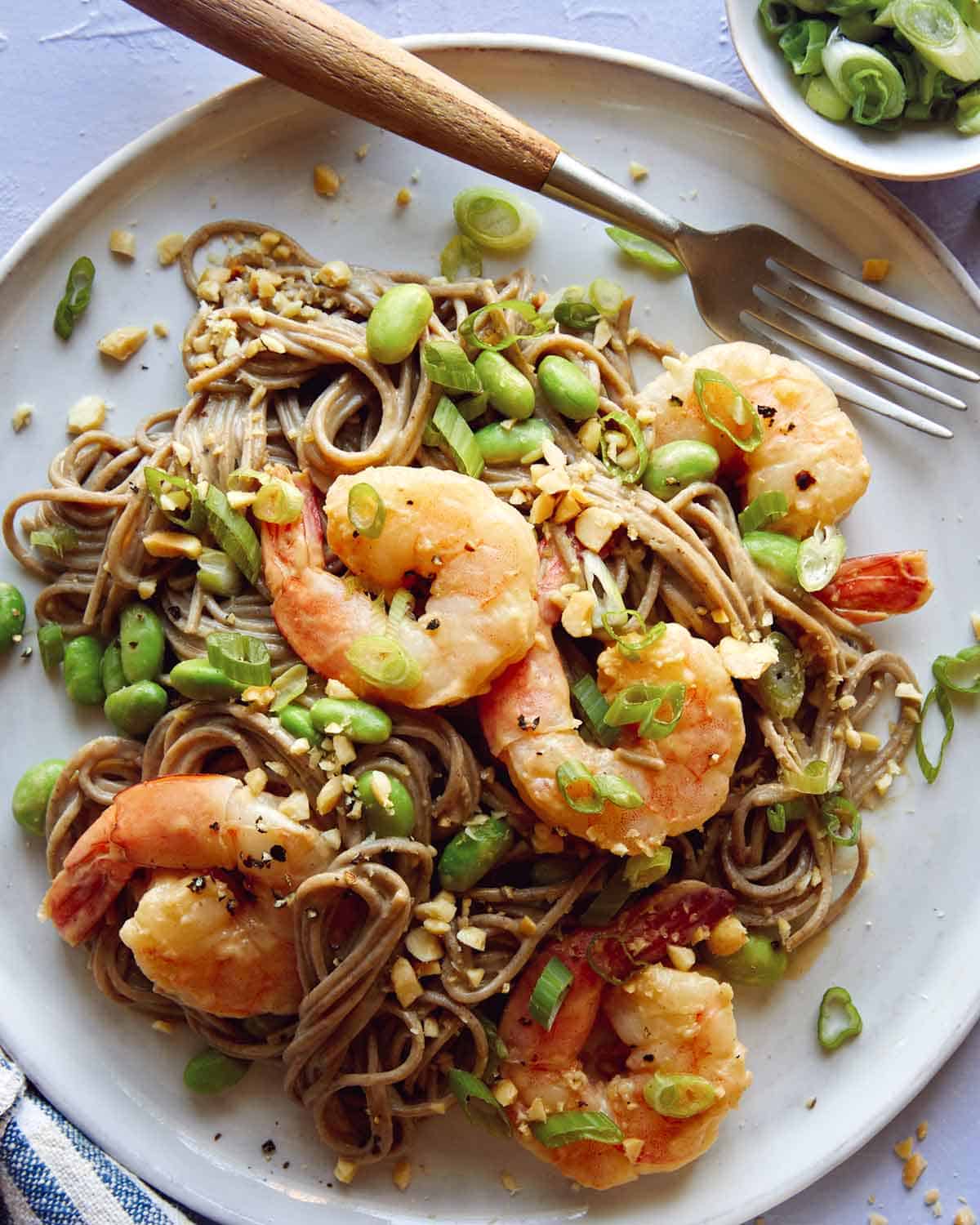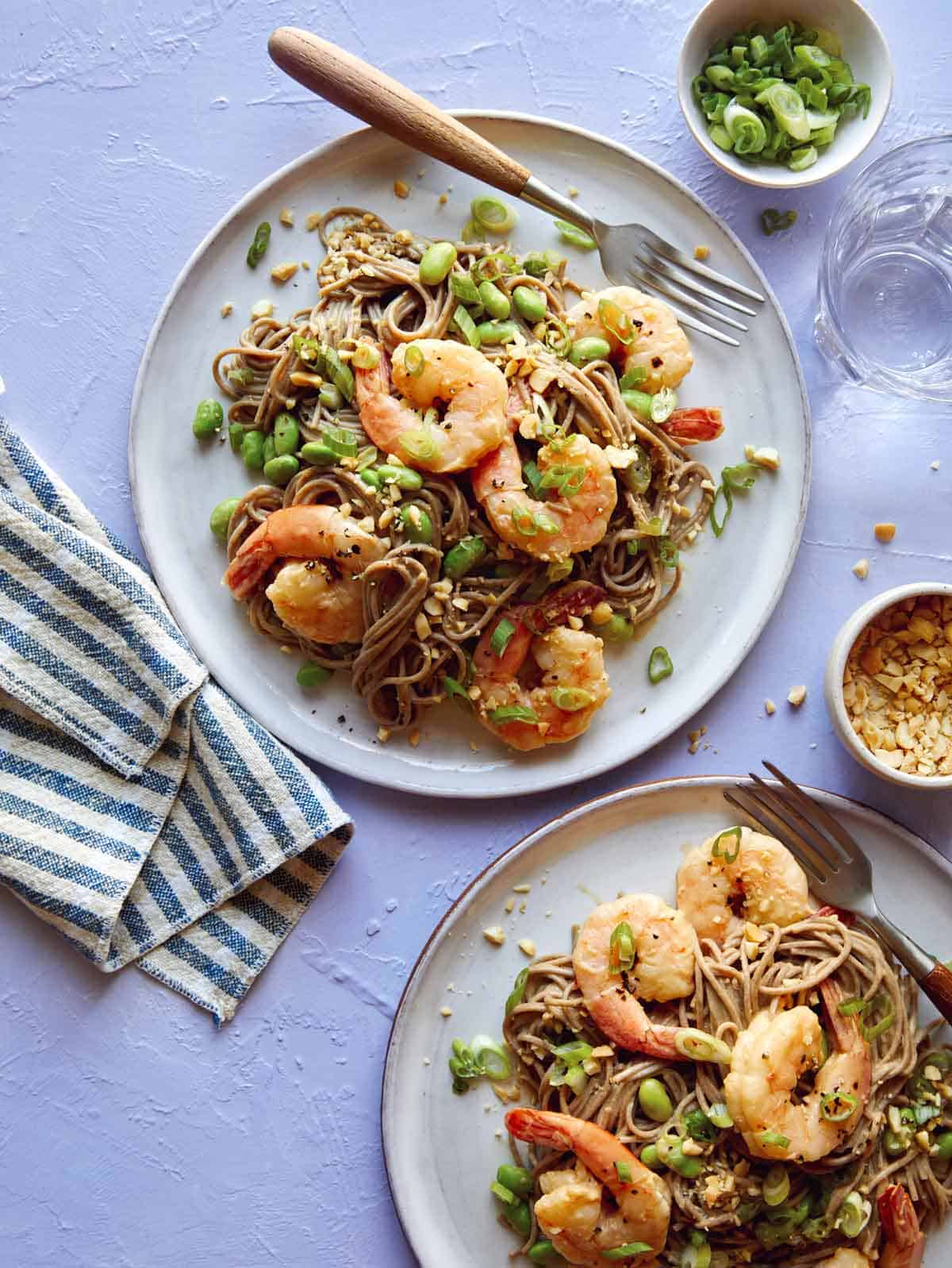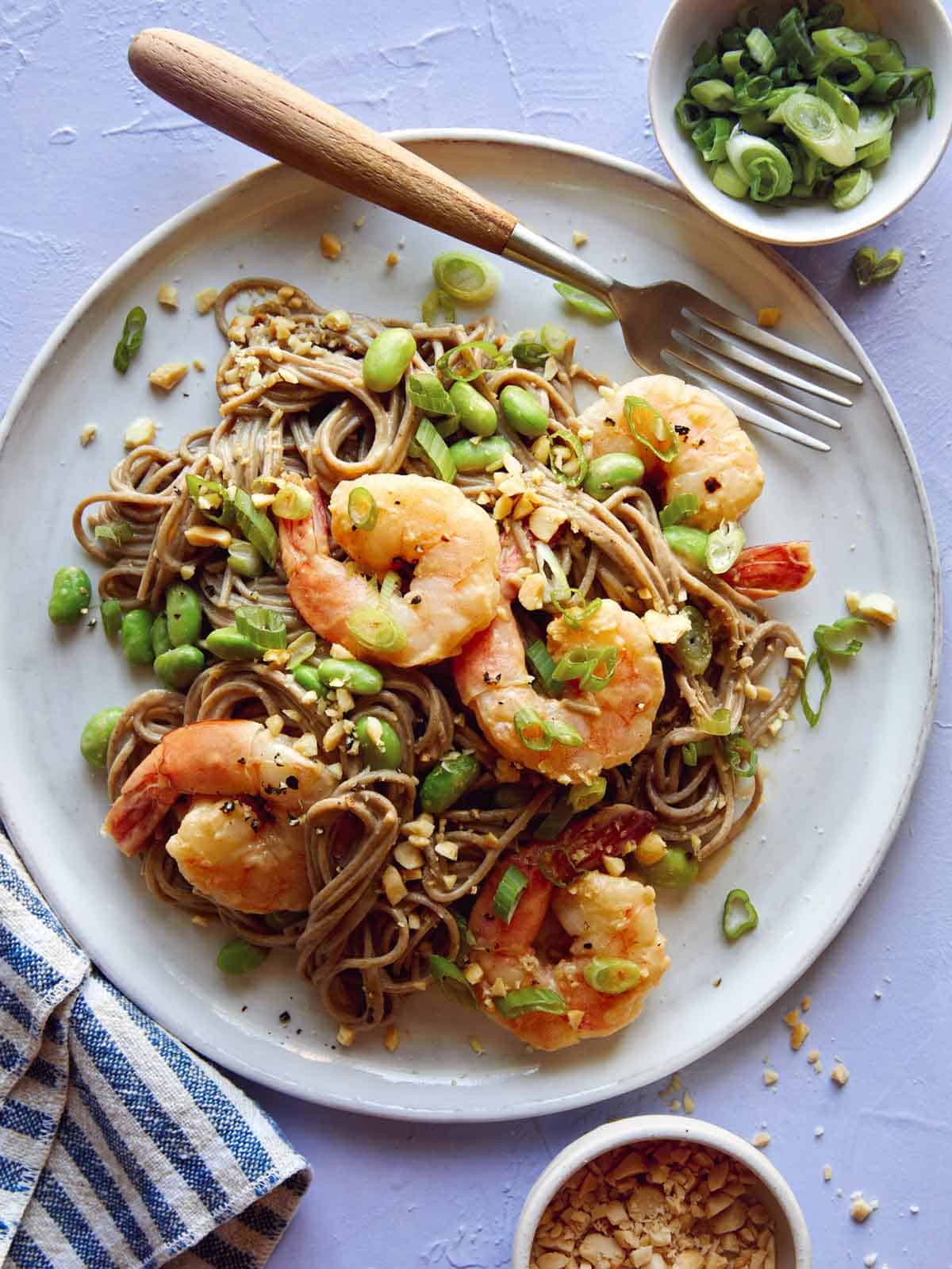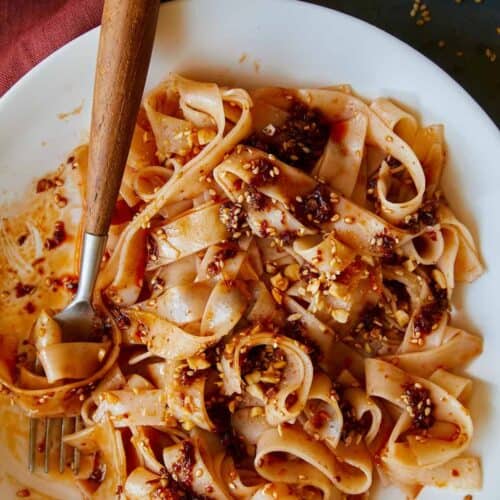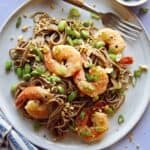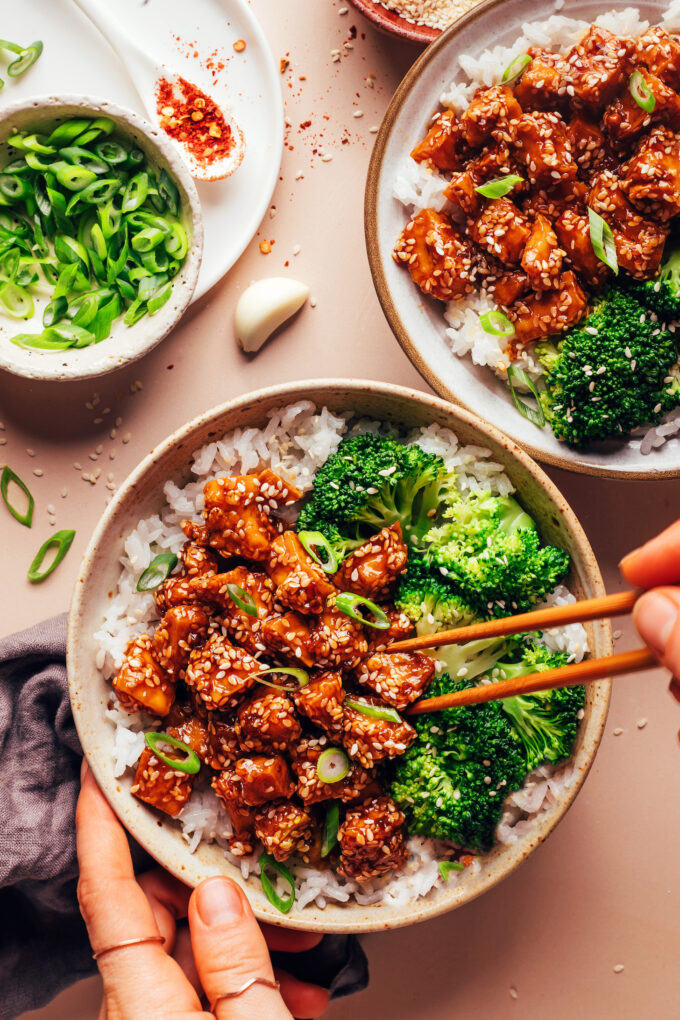
Our Spicy Tuna Onigiri has had me in a total choke hold lately! I’ve been eating them for lunch all week long! I love this super quick, easy, and tasty hand-held meal. It’s a great lunch to take with you on the go too! There are so many variations and fillings for this little snack, that it’s difficult to get sick of them!
What is Onigiri?
Onigiri is a Japanese stuffed rice ball (also known as omusubi and nigirimeshi). It is a popular snack or meal on the go. They’re generally triangular or circular in shape. Some traditional fillings are short ribs, tempura, umeboshi (pickled plums), canned tuna, pickled vegetables, but you can really stuff rice balls with whatever you want!
How to Make Spicy Tuna Onigiri
Ingredients
Masago Sauce
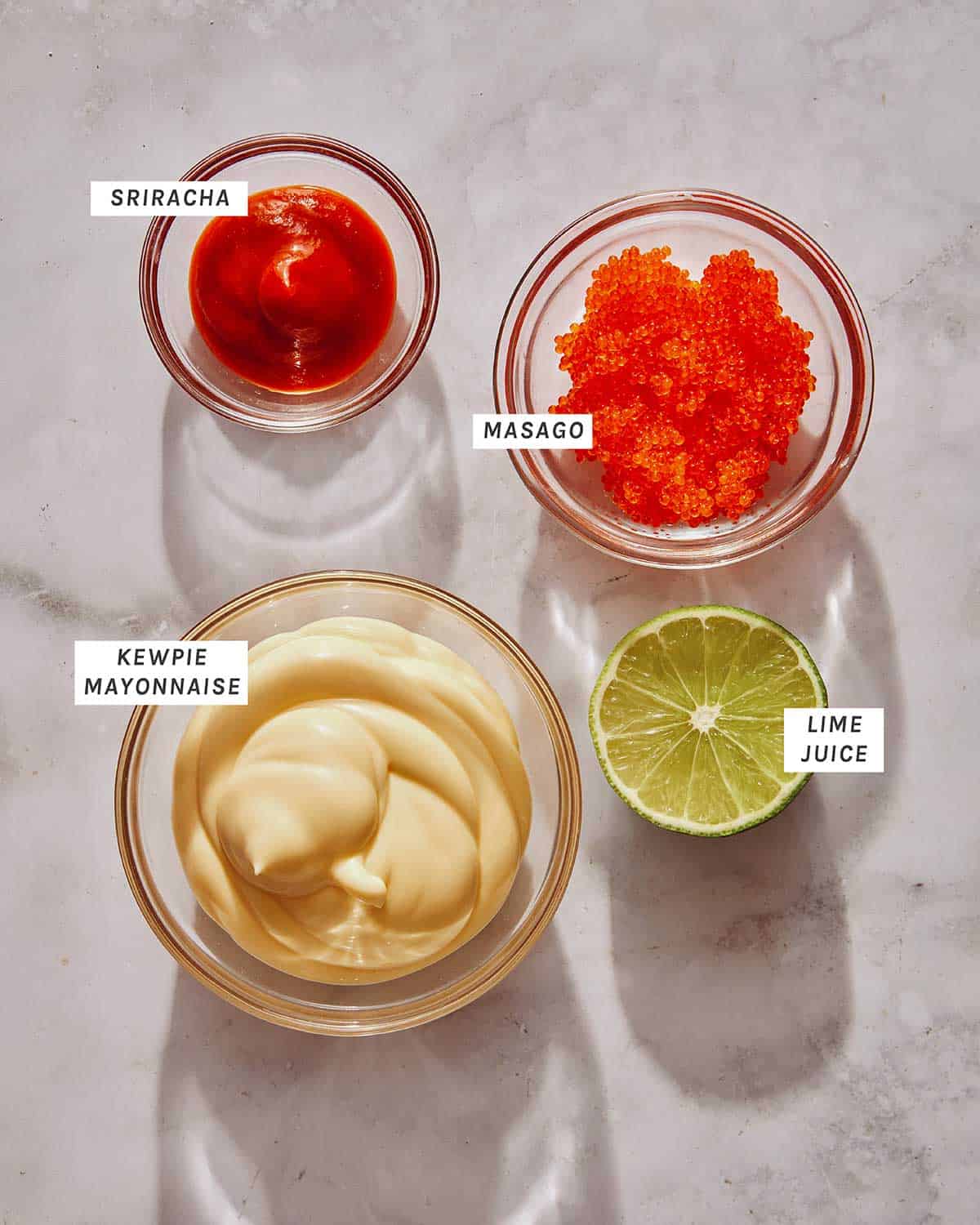
Spicy Tuna Onigiri
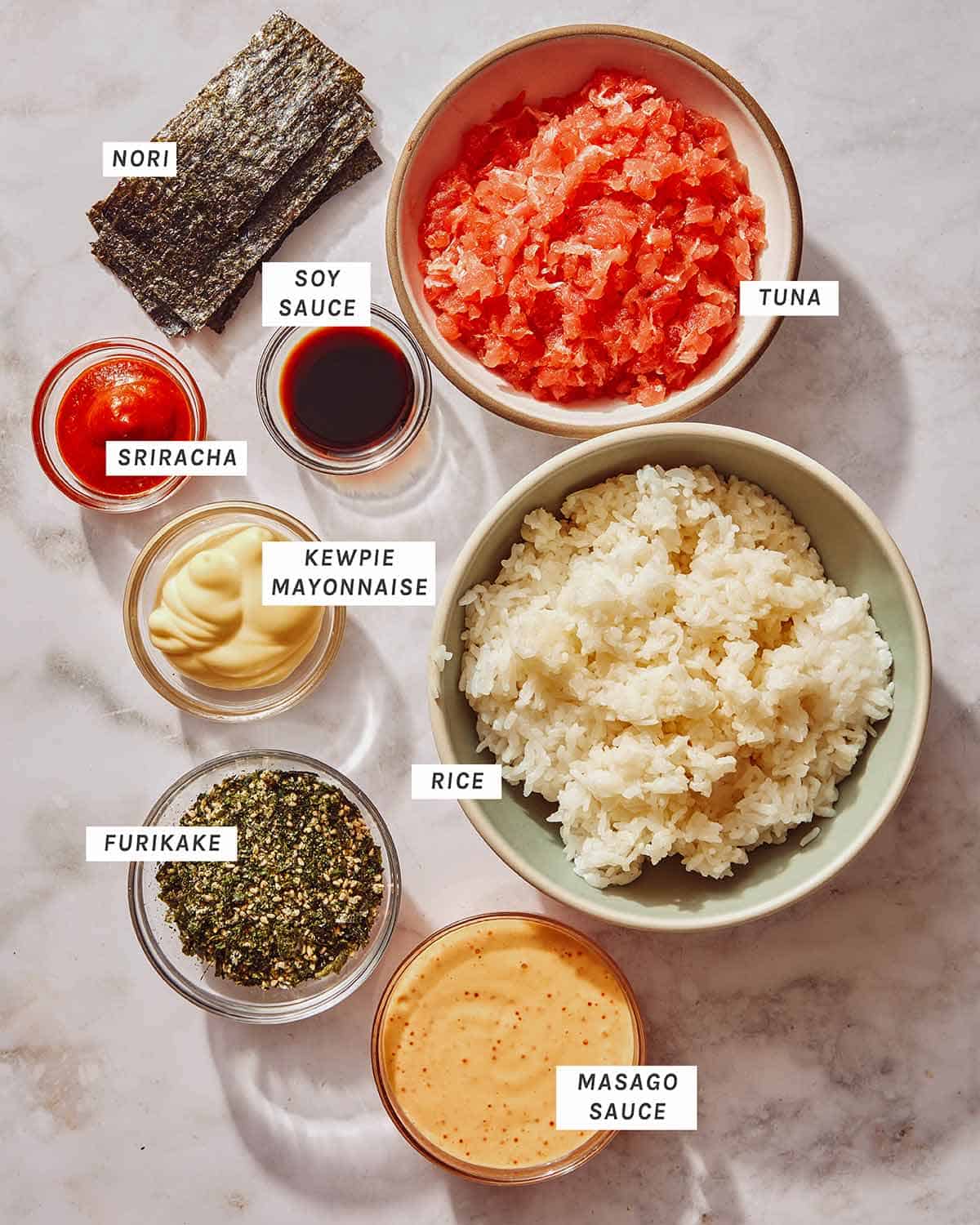
Process
- Place all ingredients into a mixing bowl.
- Stir together. Set aside.
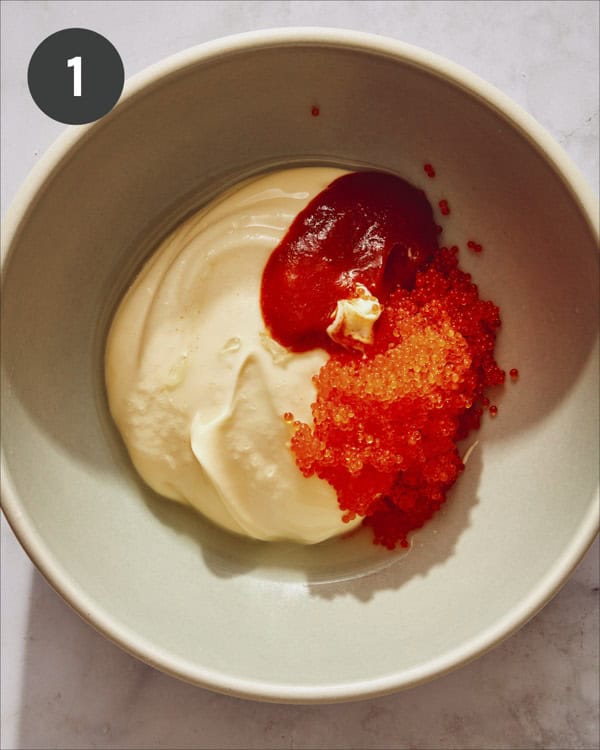

- Place all filling ingredients into a mixing bowl.
- Mix together until everything is completely combined.
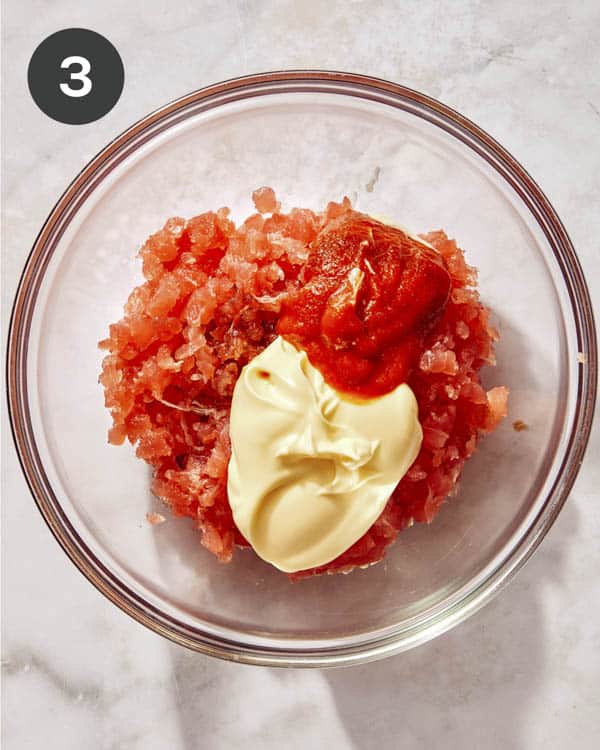
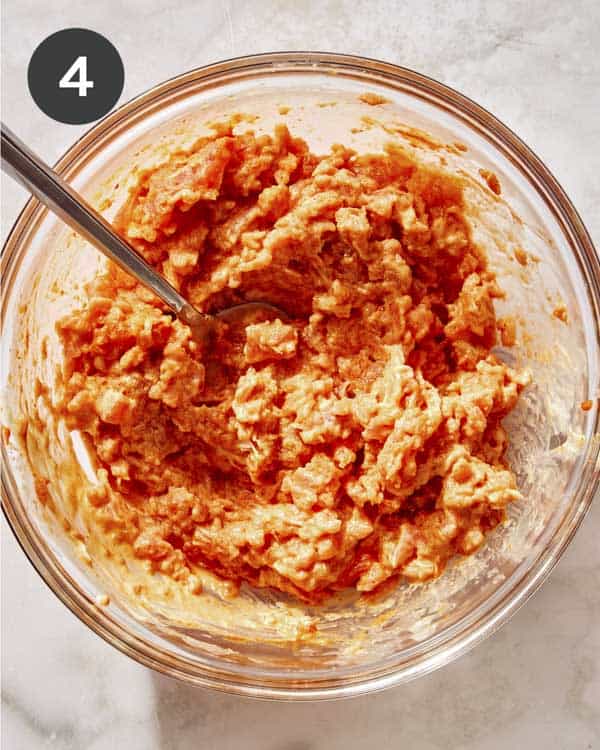
- Press 1/4 cup rice into the bottom of an onigiri mold.
- Create a tablespoon sized divet in the center of the rice and fill with a scoop of tuna filling.
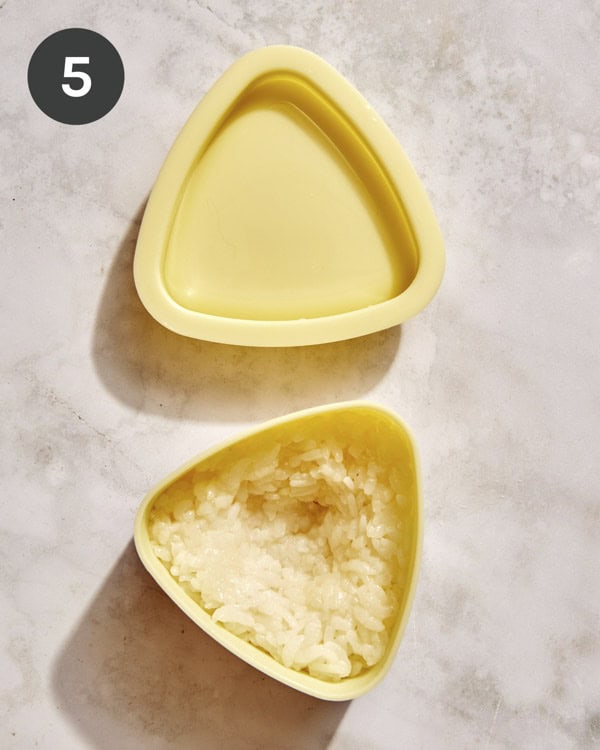
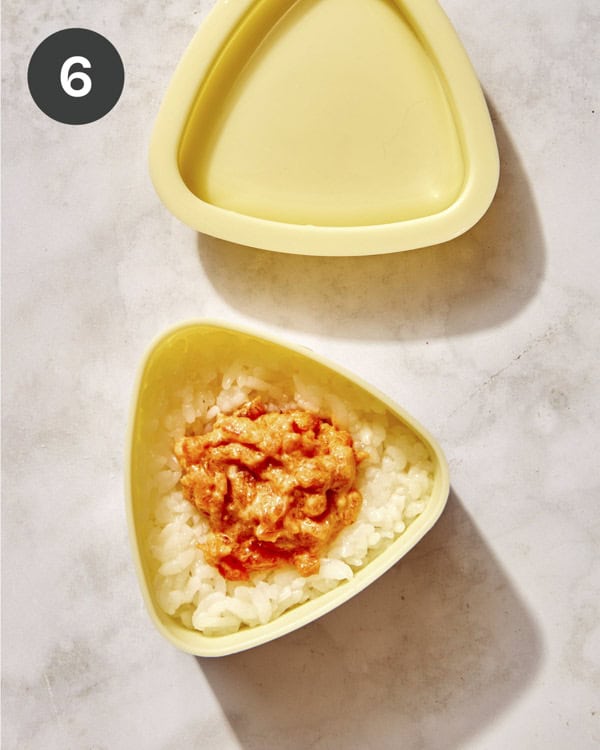
- Top the tuna and rice with an additional 2 to 3 tablespoons rice.
- Firmly press with the onigiri mold top.
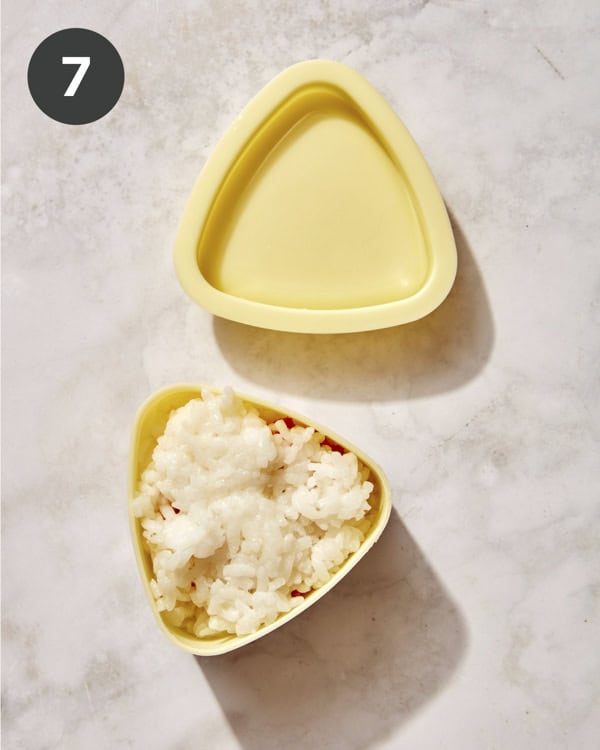
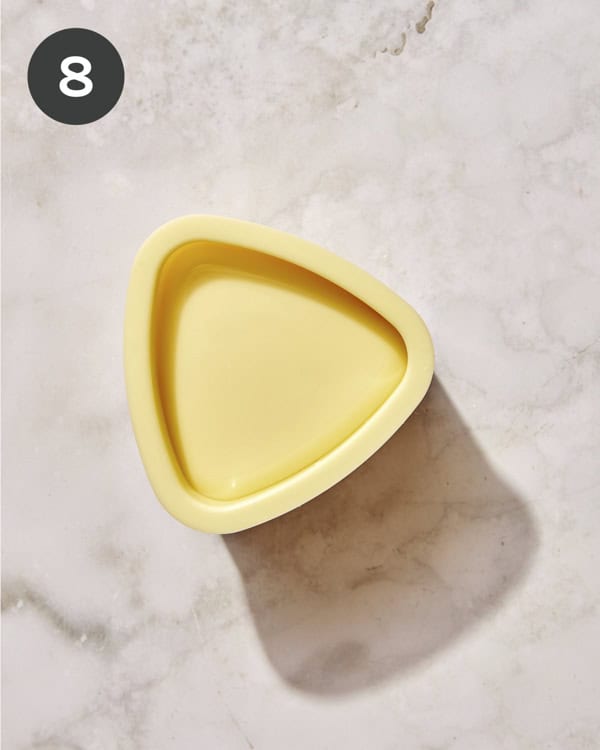
- Unmold the onigiri.
- Wrap a piece of nori around the bottom center side of the triangle.
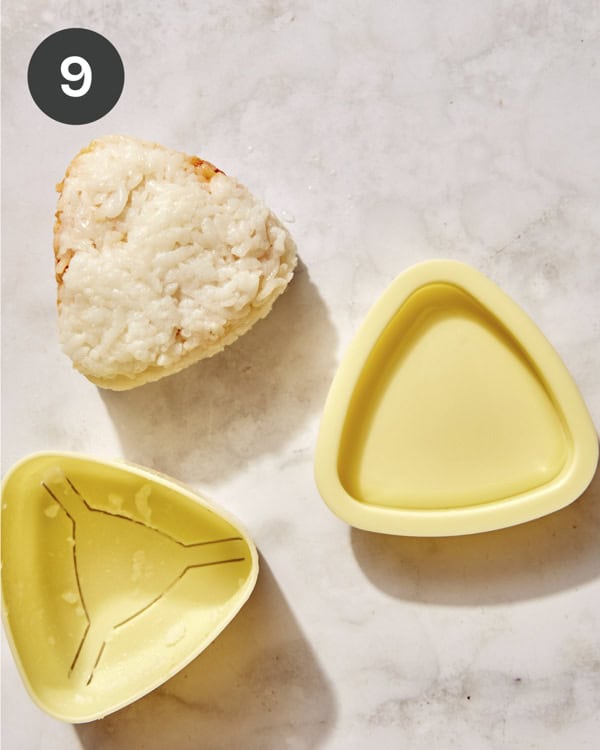
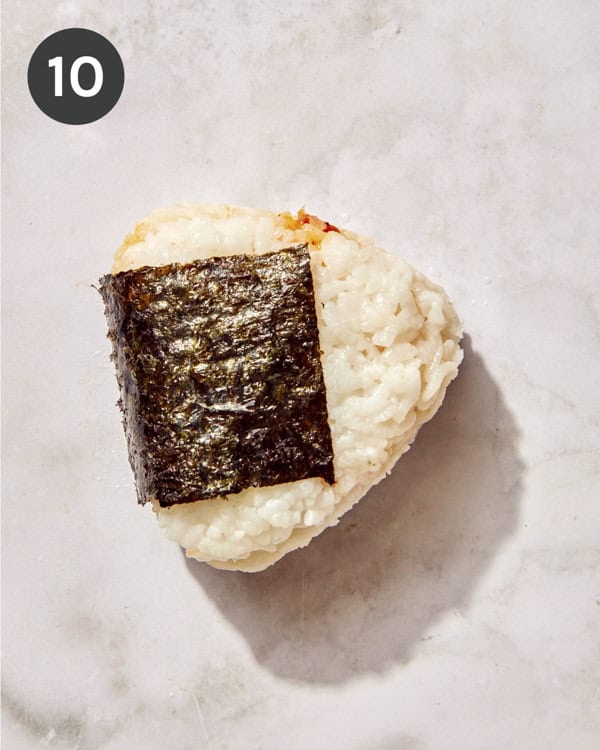
- Press the sides of the onigiri into the furikake seasoning. Repeat with remaining ingredients. Serve.
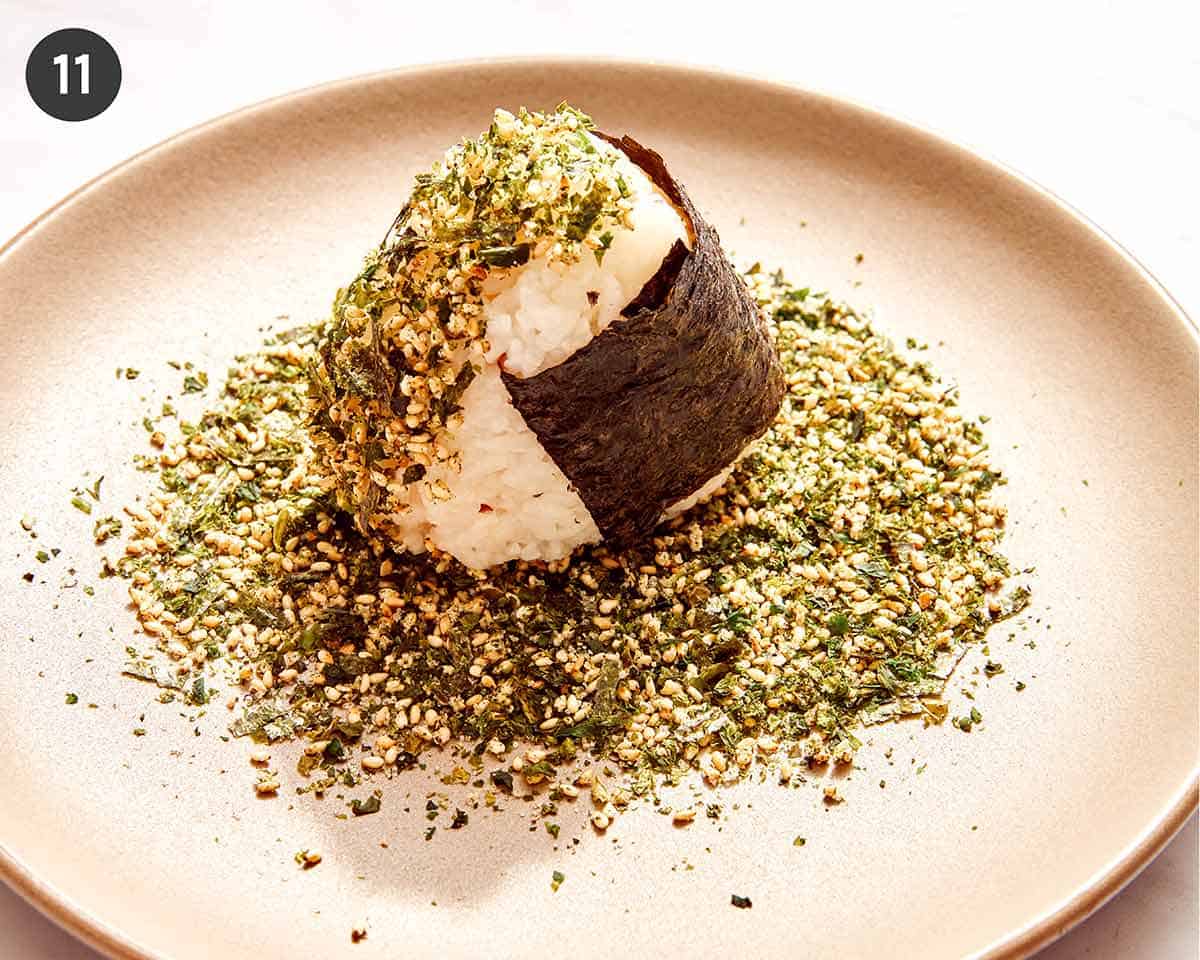
Why We Love This Onigiri Recipe
- It’s so simple and takes no time at all to put together!
- They’re so comforting and satisfying every single time!
- They make a great meal OR snack!
- You can easily make them ahead of time and take them on the go!
- There are an infinite amount of filling ideas you can stuff them with, depending on your cravings!

Tips and Tricks for Onigiri Success
- Use a short or medium grain sticky rice to ensure your rice balls will stick together.
- Don’t skip out on the sauce! – Most of the time you do not get a sauce for onigiri, but we think this simple masaho sauce pairs perfectly with the rice balls and make our recipe just a little bit special.
- Don’t overfill the rice balls! It may be tempting to maximize the filling for these rice balls, but if you overstuff them they will easily fall apart!
- Alternatively, don’t use too much rice, so there’s still enough room for filling (it’s a balancing act between rice and filling)!
Do I Need an Onigiri Mold?
Absolutely not! We love using an onigiri mold because it does make it easier to form them (plus the ones we use, make smaller, snack-sized onigiri which we love), but you can form them by hand!
If you do form them by hand, just make sure you tightly wrap them in plastic wrap until you’re ready to enjoy them, so they maintain their shape and hold the filling together.
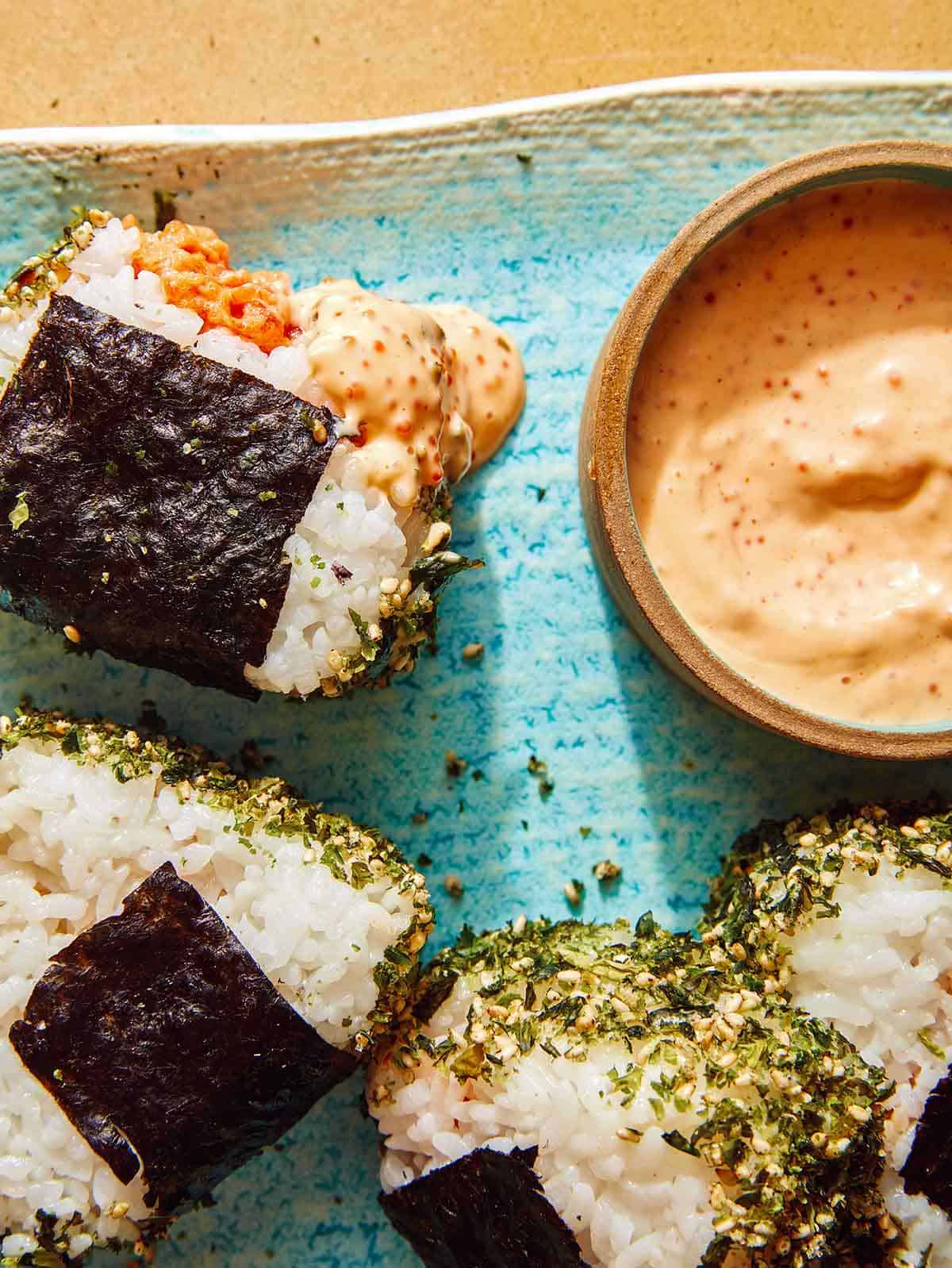
Variations
- Use short or medium grain sticky brown rice instead of white.
- Use canned tuna or canned salmon instead of raw tuna for the filling. Or use raw salmon, scallops, or yellowtail!
- Stuff the rice balls with sautéed vegetables or marinated tofu cubes for a vegetarian alternative.
- Pan-fry the onigiri (and skip the nori wrapper) for a crispy rice texture!
- Chop and sauté some kimchi in some butter and sesame oil for a spicy, buttery kimchi filling!
- Wrap the entire triangle in nori or press the entire rice ball in furikake seasoning!
Make Ahead Instructions
Onigiri can be made ahead of time, but should be made the same day they will be consumed. This is because the rice should not be refrigerated or it will get too hard to enjoy (and reheating them will make them fall apart, and possibly ruin the filling).
Also, depending on the filling the onigiri should be consumed within 1-4 hours after preparing them (within 1 hour if using raw seafood and up to 8 hours if using something like umeboshi).
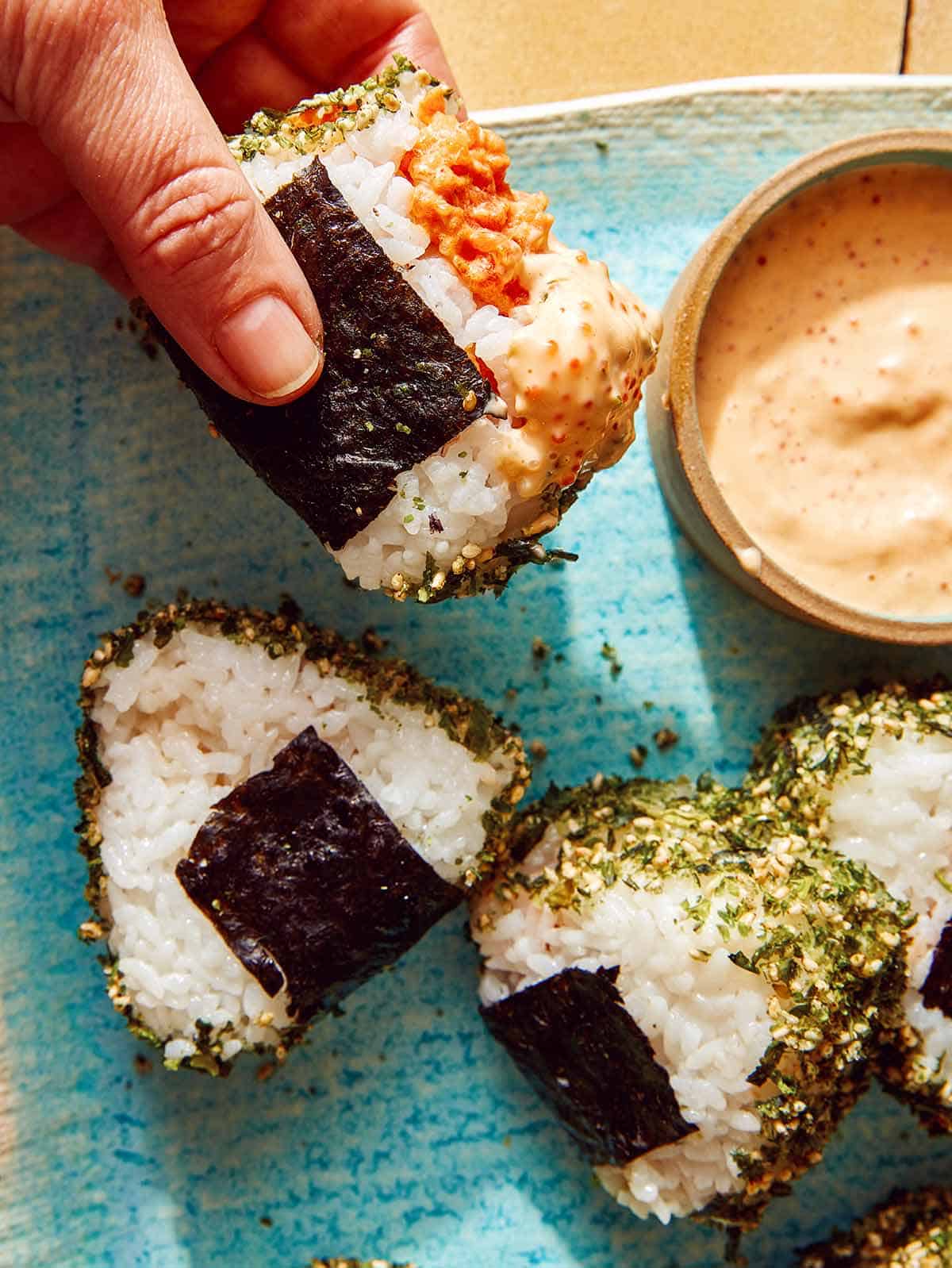
More Delicious Asian Inspired Recipes You Will Love

Spicy Tuna Onigiri
Equipment
Ingredients
masago sauce
- 1/2 cup Kewpie (or American mayonnaise)
- 2 tablespoons masago
- 1 tablespoon Sriracha
- 1/2 lime juiced
filling
- 8 ounces high quality raw tuna minced
- 3 tablespoons kewpie (or American Mayonnaise)
- 1 1/2 tablespoons Sriracha
- 1 tablespoon soy sauce
rice and assembly
- 3 cups steamed short grain rice warm
- 2/3 cup furikake seasoning
- 8 1.5"x 3" pieces nori
Instructions
masago sauce
- Place all ingredients into a mixing bowl and stir together. Set aside.
filling
- Place all filling ingredients into a mixing bowl and mix together until everything is completely combined.
assembly
- Press 1/4 cup rice into the bottom of an onigiri mold.
- Create a tablespoon sized divet in the center of the rice and fill with a scoop of tuna filling.
- Top the tuna and rice with an additional 2 to 3 tablespoons rice and firmly press with the onigiri mold top.
- Unmold the onigiri and wrap a piece of nori around the bottom center side of the triangle.
- Press the sides of the onigiri into the furikake seasoning. Repeat with remaining ingredients. Serve.
Notes
- Use a short or medium grain sticky rice to ensure your rice balls will stick together.
- Don’t skip out on the sauce! – Most of the time you do not get a sauce for onigiri, but we think this simple masaho sauce pairs perfectly with the rice balls and make our recipe just a little bit special.
- Don’t overfill the rice balls! It may be tempting to maximize the filling for these rice balls, but if you overstuff them they will easily fall apart!
- Alternatively, don’t use too much rice, so there’s still enough room for filling (it’s a balancing act between rice and filling)!
Nutrition
The post Spicy Tuna Onigiri appeared first on Spoon Fork Bacon.
